Road Tests and Car Reviews |
|
 |
|
 |
 |
1953 - 1963
After World War 2 AC Cars of Thames Ditton England came back into the market by releasing the two litre range in 1947. But it was not until 1953 when the company released the Ace Sportscar, that its reputation was made. The inspiration of this car was clearly Ferrari Barchetta, with the results showing an extremely pretty, open two seater with an alloy body, as well as independent transverse leaf spring suspension. More>> |
 |
 |
|
1953 - 1963
AC Cars were approached in 1961 by Texan racer Carroll Shelby, with the idea of putting a Ford 4.2-litre V8 engine into the Ace sportscar. A few months later the first prototypes were produced with 100 being sent to America a short time later for completion. The result of this was the legendary Cobra, one of the fastest and most famous muscle cars of all. More>> |
 |
 |
|
1979 - 1984
The story of the AC M E3000 begins with the end of the Unipower story: Peter Bohanna was asked to build a Mk II version of the popular Mini-engined GT car. The 1970s were not a good period for luxury car manufacturers and AC Managing Director W Derek Hurlock went searching for a totally new smaller car. More>> |
|
|
 |
|
1932 - 1935
WHEN THE Monoposto Alfa Romeo made its first appearance at Monza in 1932, it not only set new standards of aesthetics in racing car design, it also created something of a legend in Grand Prix history. More>> |
 |
 |
|
1931 - 1935
The 8C 2300 fought the Bugattis, Maseratis and Mercedes during the early 1930s, both as a sports and full racing car. It was driven by a galaxy of star drivers of whom few survived, whereas a fair proportion of their machines achieved a sort of mechanical immortality. More>> |
 |
 |
|
1935 - 1939
The Alfa Romeo 8C 2900 was the fastest pre-war production car - a feat no doubt attributable to the fact that it was designed as a racing car. More>> |
 |
 |
|
1937 - 1952
Turn the clock back to 1938. The Germans were unbeatable in Grand Prix racing, a bitter fact to their nominal allies, the financially outclassed Italians. They made the best of Maserati's brilliance in 1500cc voiturette racing and drew courage from the press which continued to brag about "The triumph of the Italian colours". More>> |
 |
 |
|
1952 - 1953
In 1952, even before production began on the then new 1300cc Giulietta, Alfa Romeo already had plans to build a larger version with six cylinders - tentatively called the Giulia. The larger car's engine would not be based on the 1.3-litre Giulietta but on the already existing 1900cc four with two more cylinders added. The 1900's 82.5-mm bore was retained but the stroke was increased from 88 to 92 mm, resulting in a displacement of 2995cc. More>> |
 |
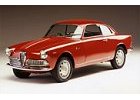 |
|
1954 - 1962
Having nimble handling, beautiful balance and glorious engines (the world's first mass-produced twin-cam engine) made the Giulietta Sprint one of the stars in the 50's. More>> |
 |
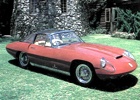 |
|
1956
Always one of the leaders in development of automotive form, Pinin Farina in the mid 1950s produced a series of prototypes that were nothing if not different in appearance. Even so, they held some lessons for future production models. As Len Frank tells, the beginnings of the Alfa Spider can be seen in this car; the fourth and last in the distinctive Superflow series. More>> |
 |
 |
|
1960
In 1960 The Alfa Romeo Giulietta Sprint Zagato was the lightest, smallest, best streamlined, most powerful and therefore the fastest of the entire Alfa Romeo range of cars. The 1290cc aluminium twin-cam engine was capable of producing speeds of 121.8 mph. More>> |
 |
 |
|
1963 - 1966
In the early 1960s Alfa-Romeo was considered, quite rightly, to be the best of all of this distinguished line of Italian-built high-performance cars. And one of the best the company had ever produced was the brilliant 105/115 Series Coupe, the Giulia 1600 Sprint GT. More>> |
 |
 |
|
1965 - 1967
From 1965 to 1977 the baby of the Alfa sports car fleet was the 1300 GT. Not only was it an image-maker, but it was also a surprising road-goer, with plenty of urge from only a 1290cc but very eager power plant. More>> |
 |
 |
|
1966 - 1993
The Geneva motor show of 1966 was the launch of the Alfa Romeo Duetto Spider, and was the last complete design from Battista Pininfarina. Despite initial sales being disappointing the basic model managed to stay in production for 27 years. More>> |
 |
 |
|
1967 - 1972
Today most Alfa aficionados keenly seek out the GTV from the early 1970’s, however the more humble sedan has become a very rare sight on Australian roads, and may prove to be a sound investment for the astute collector. More>> |
 |
 |
|
1967 - 1972
Coupled with the launch of the new 1750 Berlina saloon was the 1750 GTV coupe. Sharing the same coupe body as the previous GT1300/GT Junior 1.6, the GTV featured four headlamps and less fussy external trim details. More>> |
 |
 |
|
1970 - 1977
Its lines were penned by a young designer at Bertone; Giorgietto Giugiaro, 'the designer of the 20th century'. The Giulia not only looked good but it also proved a great competitor in touring car racing. More>> |
 |
 |
|
1970 - 1975
The 2.6 all alloy quad cam V8 engine was a jem, so much so that journalists at the time thought it made the chassis look mediocre. More>> |
 |
 |
|
1972 - 1983
Produced at Alfa's new factory in South Italy, (hence the name Alfasud - "Alfa South"), the Alfasud was produced as a more affordable Alfa for the many enthusiasts. More>> |
 |
 |
|
1974 - 1976
The Alfetta GT's design came about as a result of joint labours of Giorgetto Giugiaro and Alfa's own design team, the Alfetta GT being one of the most beautiful cars to look at, and because of a combination of slightly less weight and uprated suspension the GT felt tauter than the sedan. More>> |
 |
 |
|
1975
Pinninfarina's Alfa Romeo Eagle was a project for a sports "Spider" with a safety roll bar, based on the bodypan and mechanics of the Alfetta GT. More>> |
 |
 |
|
1979 - 1986
Alfa Romeo's in-line 'six', the 2600, was discontinued in 1969, so for ten years the Milanese manufacturer lacked a six-cylinder flagship. In early 1979 the place was filled by the Alfa 6 saloon, at the time it being the only six-cylinder Italian car in realistic production. More>> |
 |
 |
|
1979 - 1986
The new V6 engine had virtually no protractors. Although it had single camshaft per bank, it was extremely smooth, willing, and musical and was regarded by most to be the best V6 in production. More>> |
 |
 |
|
1981 - 1987
There were two features of the GTV which gave it a major advance over all previous examples. Firstly, thanks to continual complaints, Alfa Romeo improved the driving position. You no longer needed to fold your knees around your ears and hold your arms out straight ahead. For all export models, Alfa also fitted an attractive looking wood rimmed steering wheel with a dished boss. More>> |
 |
 |
 |
1986 - 1992
The Alfa 75 was a sports car for the family man, something rare from the typical box-on-wheels approach adopted by more mainstream manufacturers during the 1980's. The ensuing budget restrictions forced Alfa to evolve the old 1970's Alfasud and Alfetta platforms rather than produce a clean-sheet design from the get-out. More>> |
 |
 |
 |
1987 - 1998
Alfa Romeo's 164 always enjoyed a few advantages over the competition in the upper region of the executive car class. And a lot was to do with marque pedigree. The Fiat-owned Italian company, at the time, had no difficulty establishing itself as a recognized contender for the executive dollar because it had always attracted that market anyway. More>> |
 |
 |
|
1989 - 1990
The "SZ" was a one-off production sports cardesigned and built by Zagato, and while the styling can be described as extraordinary even by Zagato's standard, many regarded it as ugly. More>> |
|
|
 |
 |
1950 - 1953
The original competition two-seater J1 was replaced by the legendary J2 in 1950; this latter iteration was manufactured with an aluminium body, separate cycle-type wings, a ladder-style frame, coil spring independent front suspension, and a De Dion rear end. The J2 boasted an impressive top speed of 110 mph, helped in the main by its fitment of a 160bhp Cadillac V8 power plant, although Allard allowed a variety of different engines to be fitted. More>> |
|
 |
 |
 |
1958 - 1967
Alvis turned to Graber of Switzerland after the war to design a new body style for their GT lineup. The TD21 was beautiful from every angle, the simple and handsome lines never dating like the more mainstream. The bodies for the TD21 were manufactured in England, first by Willowbrook in Loughborough, then later by Park Ward. More>> |
|
|
 |
|
1961- 1966
The Rambler was the focus of AMC's management strategy under the leadership of George W. Romney. American Motors designed and built some of the most fuel-efficient, best-styled and well-made cars of the 1950s and 1960s. Their compact cars (for the era) helped AMC to achieve sales and corporate profit successes. More>> |
 |
 |
|
1963 - 1966
The Rambler 770 may have been, by the American definition, a "Compact", but the standards of just about any other country, it remained very much a large car. Like the large American cars then available, the 770 was both conventional and familiar, the mechanical specification including a long-stroke six-cylinder engine, live rear axle with coil springs, torque tube and a Panhard rod, and large diameter drum brakes all round. More>> |
 |
 |
|
1965 - 1966
Unlike any other U.S. auto manufacturer from the 1960s, American Motors chose to base their entire line around compactness and economy. And this paid off handsomely. By getting a head start on the compact craze, they were able to step right up and supply the demand with proven compacts while competitors were in the throes of de-bugging and introducing theirs. More>> |
 |
 |
|
1967 - 1970
The AMC Rebel (known as the Rambler Rebel in 1967) was a mid-sizer built between 1967 and 1970. The Rebel was based on AMC's "senior" automobile platform shared with the full-size Ambassador line. For the U.S. and Canadian markets, the Rebel was built at AMC's "West Assembly Line" (along with the Ambassador) in Kenosha, Wisconsin and at Brampton, Ontario, Canada (Bramalea - Brampton Assembly Plant). More>> |
 |
 |
|
1968 - 1970
IHere in Australia the AMX was imported by AMI - it being a short, aggressive two-seater based on the identically priced Javelin but measuring a full 12 inches shorter in both wheelbase and overall length. It effectively condensed the red-blooded American image of the Javelin into a compact, rorty car with which the driver could achieve a feeling of one-ness that was usually only confined to European cars. Yet it did this without losing its U.S.-bred image. More>> |
 |
 |
|
1968 - 1974
In 1968 AMC needed to create a 'cult' car, something to give the company prestige and win back customers that were deserting it for the ever growing popularity of the Ford Mustang. Also in AMC's sights was the Chevy Comaro and Plymouth Barracuda. More>> |
 |
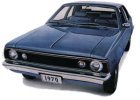 |
|
1970 - 1977
Built on a 108-inch wheelbase, the new Hornet sedans had a long hood/short rear deck styling theme that was in line with the public tastes at the time. These basic elements had been used in 1969 for the new Ford Maverick compact car, which had proven to be immensely popular. More>> |
 |
 |
 |
1975 - 1980
Information being compiled. More>>
|
|
|
 |
 |
1961 - 1968
Built for 7 years between 1961 and 1968, the Amphicar is unique for its ability to traverse both land and sea, however the compromise to achieve both resulted in poor roadholding ability and very limited sea-going ability. More>> |
|
|
 |
|
1958 - 1959
Apart from a prototype, production of the Ascort TSV 1300 started in January, 1959 – with the intention that the company would be able to build one a week. Mechanically it was based on the VW Beetle, plus some Porsche components and Okrasa performance modifications. The idea was to have all spares available locally, and enable any VW-Porsche service centre to do the servicing. More>> |
|
|
 |
|
1934 - 1936
Back in 1934 the British motoring journal, "The Autocar", published a road test of a truly fabulous sports car. Nothing unusual, you say. True, but what was written about this car could be classed as unusual because it was (and is) a rare occurrence for an English journalist to judge an English product as being so particularly praiseworthy. More>> |
 |
 |
|
1950 - 1959
The Aston Martin DB2 of 1950 was seen as the benchmark car for all future Astons. This was due to the coupe's luxurious and old-world charm that hosted a smooth (but powerful) six-cylinder twin-cam 116bhp engine from the Lagonda 2.6 saloon. More>> |
 |
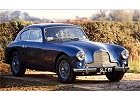 |
|
1950 - 1959
The DB2/4 was established in 1953 comprising a smooth and contoured fastback shape that was seen as far more practical because of its rear seats and side-hinged rear hatch that stretched the length by some 9 centimetres from the DB 2. More>> |
 |
 |
|
1950 - 1959
The twin SU carburettors stayed. David Brown had supplied the gearboxes on all DB models. It had a crash first gear and the option of overdrive on top gear on the MK III which gave 28.4 mph per 1000rpm. More>> |
 |
 |
|
1958 - 1963
Things didn't change quickly at Aston Martin during the 1950's, and nor should they have, given the Aston's were arguably the best sporting cars ever made. Much like the Mercedes philosophy, change for change's sake was not a principal held in high regard. More>> |
 |
 |
|
1963 - 1965
This car was introduced to Britain in 1963 and, at the time, was considered to be an aristocrat amongst sportscars of its time. It was extremely pricey, with the E-Type Jaguar being about half of its cost, but its use on the James Bond movie "Goldfinger" (1964) released the Aston Martin name to the entire world. More>> |
 |
 |
|
1969 - 1990
In 1969 the quad-cam all-alloy 375 bhp V8 catapulted the Aston to a top speed of 257 km/h. In 1973 its shape had altered with a new grille and single lamps on either side. More>> |
 |
 |
|
1976 - 1986
The 1976 showing of the Lagonda saloon showed the world a car that appeared to have originated from another planet. More>> |
 |
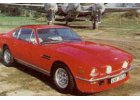 |
|
1977 - 1989
A breathtakingly exciting, adrenalin churning super-car, the fastest accelerating production car in the World at the time, that was the Aston Martin V8 Vantage. More>> |
 |
 |
 |
1980
By 1978 the future of Aston looked much better than it ever had, and so Company Director Alan Curtis gave the green light for the construction of a prototype – a car that would serve as a symbol of the marques quest to look to the future and demonstrate innovation like no other. More>> |
|
|
 |
 |
1935 - 1937
By 1930 Auburn had a stellar reputation for building highly desirable cars, particularly after one Erret Lobban Cord had taken control. Despite the economic hardships he inherited, his drive and passion for the automobile would not only help Auburn survive, but survive at a time that would see many manufacturers fall by the way, particularly at the upper end of the market. More>> |
|
|
 |
|
1968 - 1976
The origins of the first Audi 100 have become legendary in Germany. When Volkswagen purchased Auto Union from Mercedes-Benz in 1965, they seem to have been motivated by a desperate shortage of production capacity for their ’Beetle’ model which at that time was selling faster than the cars could be produced. More>> |
 |
 |
|
1971 - 1995
Manufactured from 1971 until 1995, the Audi 80 shared
its platform with the parent company’s Volkswagen
Passat. The first incarnation was designated the
B1, and was available from 1972 to 1978. Sold in
some markets (including Australia and the US) as
the Audi Fox, the Audi 80 was available in either
2 door coupe or 4 door sedan body styles. More>> |
 |
 |
|
1976 - 1984
The main features of the Audi 100 C2 were its cleanness and purity of line, a forward facing surface with no openings, and - for the first time - side windows completely flush with the body sides. More>> |
 |
 |
|
1976 - 1984
By 1979 Germany remained the only 'western' European country with no-limit motorways, so it was not surprising that it had a large market for fast luxury cars. Mercedes-Benz and BMW of course took the lion's share of the sector, but Audi's decision to invade the area in 1976 with their front-drive '100' was significant as well as courageous. More>> |
 |
 |
|
1979 - 1983
The Audi 5E was a good example of modern
European car design. It incorporated all
the latest technological advances available
in the late 1970’s and early 1980’s.
It was not cheap, mainly due the high import
tariffs being imposed at the time, but for
those seeking a better car, it represented
excellent value. More>> |
 |
 |
|
1979 - 1983
The 5E CD marked Volkswagen's entry into the luxury
market. The designation “CD” stood
for 'Corps Dipiomatique', a term used to indicate
the very high level of equipment offered as standard
on this particular model. The CD was fitted with
just about every available luxury feature as standard.
The equipment offered included air-conditioning, automatic transmission, power-assisted steering,
AM/FM radio/cassette stereo and central locking. More>> |
 |
 |
|
1980
Arguably the greatest driver's car of the 80's, the original
Audi Quattro had superb handling due to its innovative
4wd system. The Quattro was also innovative in that Audi
had become the first car maker to put full-time 4wd to
mass production. That's easy to understand, since the
contemporary 4wd systems of the time were heavy, energy-inefficient
and expensive. Moreover, for most road cars, 4wd was
always thought to be unnecessary. More>> |
 |
 |
|
1983 - 1992
When Audi released the 100, its lines, styling and coefficient of drag stunned the motor industry. The car, as a production model, had been designed in complete reverse of accepted practice. Instead of designing a car to meet its carrying and performance parameters, then smoothing out the styling, instead Audi designed it in reverse. More>> |
 |
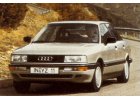 |
|
1985 - 1995
The Audi 90's competition came from the Mercedes 200-series and from BMW's upper 5-series models. It was a tough job to take on such competition, where image was what it was all about in this sector of the market. More>> |
 |
 |
|
1994
In 1994 Audi contracted Porsche to help them develop
and manufacture a faster road going car than their current
S2 Avant - the result was the RS2. Based on the S2 Avant,
Porsche installed a bigger KKK turbocharger to the 2.2-litre
20 valve 5-cylinder engine. Boost pressure was raised
from 1.1 to 1.4 bar, and a revised engine management
programme coupled to a modified exhaust increased power
to an awesome 315hp. More>> |
 |
 |
 |
1998 -
Few would guess that the beautiful Audi TT shares components
with parent company VW's Golf, or even that of the Skoda.
Despite VW's common component strategy, Audi engineers
were able to develop the beautiful sports coupe using
the Golf floorpan and basic 1.8 litre engine (also fitted
to some Skoda's). More>>
|
|
|
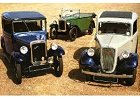 |
|
1922 - 1939
Austin backed his cars in motor sport, and while he had very few successes that would change in 1928 when his son-in-law, Captain Arthur Waite, took out the 1928 Australian Grand Prix in a supercharged Austin 7 known as "Slippery Anne". Other nick-names were bestowed upon the Seven, some referring to it as the "...finest Meccano set yet produced". Despite its lack of roadholding and hopeless brakes, it was well put togther and long lasting. More>> |
 |
 |
|
1932 - 1939
Launched in 1932, the Austin 10 would become the companies
best seller for the remainder of the decade, then continuing
in production (albeit with significant revisions) right
up until 1947. Conservatively designed, the Austin 10
used a pressed steel body built on a cross braced chassis.
Foot
to the floor, going downhill and with a slight tail wind,
the 10 could easily reach 55mph. More>> |
 |
 |
|
1948 - 1952
The A90 Atlantic was first built in prototype form in
1947 being the first British car to be designed for the
U.S market. Upon its launch in 1948, it became an overnight
sensation. More>> |
 |
 |
|
1948 - 1950
On the outside, the Austin A70 Hampshire featured a modern, yet functional streamlining embodied in the design. The front wings swept back along the sides and merged into the all-enclosed rear fenders resulting in a very attractive appearance which we think looks ultra-cool these days. More>> |
 |
 |
|
1950 - 1954
Affordable and popular they may have been, but the middle and larger sizes of the Austin range were hardly high-performance cars. Perhaps the word performance should not be used when describing the A.70, however it is fair to say that the Hereford took on an entirely different character from that associated with this famous make up to 1939. More>> |
 |
 |
|
1951 - 1953
The Austin A40 Somerset was launched in 1951 and had a short production run of just two years. It was similar in appearance to the smaller A30 saloon car, but was built on a separate chassis unlike the A30 which was Austin's first unitary construction car. More>> |
 |
 |
|
1951 - 1956
The Austin A30 saloon car was introduced in 1951 and featured a newly designed 803cc four cylinder overhead valve engine which later became known as the A series engine. More>> |
 |
 |
|
1954 - 1957
With the merger of Nuffield and Austin it was not surprising that BMC's Austin A50 Cambridge closely resembled the Morris Oxford Series II, not only in power unit but also in body lines. The engine was the same but, due to its slightly lower weight, the Cambridge had superior acceleration. Road-holding, however, was not so good. More>>
|
 |
 |
|
1954 - 1968
The first Austin Metropolitan sported the 1,200 cc A40 engine, but in March 1957 this was replaced by the A50 unit, making it the cheapest 1½ litre car on the U.K. market. A further distinction was that it was the only model manufactured in the UK that came with a built-in radio as standard equipment. More>> |
 |
 |
|
1956 - 1968
Mechanically the A35 was fairly standard, with independent/coil springs front suspension, a beam axle and semi-elliptic leaf springs at the rear, and worm type steering. While the new engine gave the A35 better performance, much of the improvement was actually the result of different gearbox ratios, which were better spaced. More>> |
 |
 |
|
1956 - 1959
The A105 model of the Austin was a livelier version of the A95. It was more powerful than the stock A95, and in deluxe version was fitted with an automatic transmission. The increase in output over the A95 amounted to 17 horsepower, thanks to a higher engine compression combined with twin S.U. carburettors (instead of the single Zenith used on the A95). More>> |
 |
 |
|
1957 - 1959
The A55 Austin Cambridge was manufactured from 1957 through to 1959, and was replaced by the Farina A55 Cambridge model. Externally the A55 was much like the older A50 but with a slightly longer tail, hooded headlights and fancier chrome-work on the sides. The Austin engineers uprated the engine by raising the compression ratio from 7.3 to 8.3 to 1; this giving the 1489cc B type B.M.C. motor 51 bhp @ 4250 rpm. More>> |
 |
 |
|
1958 - 1962
The Austin Lancer and Morris Major evolved though three series (I, II and Elite), with the first incarnations being badge engineered clones of the contemporary Wolseley 1500 and Riley One-Point-Five models then on sale in the United Kingdom. These models were wholly produced at BMC's Zetland plant in Sydney, Australia and were unique to that country, having around 98% local content. Many examples were also exported to New Zealand. More>>
|
 |
 |
|
1958 - 1967
The A40 "Farina" is the best and most fondly
remembered A40 in Australia. First introduced
in 1958, it would remain in production until
1967, after which time over 340,000 had been
manufactured. The wonderful and innovative
body style came courtesy of Pinin Farina
(thus the name), and the best feature was
undoubtedly the revolutionary “hatchback” style,
a world first. More>> |
 |
 |
|
1962 - 1966
The 6 cylinder Austin Freeway sedan and station wagon,
and Wolseley 24/80 were released in April 1962. These
cars were developed by BMC Australia to counter the growing
popularity of the new 6 cylinder rivals from the US,
namely the GM Holden and Ford Falcon. More>> |
 |
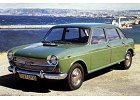 |
|
1965 - 1970
When introduced, the 1800 was far from ordinary. It soon
became affectionately known as the “landcrab”,
in reference to the elongated and low slung body style.
Voted European Car of the Year for 1965, BMC were certainly
on a winner with their new “large” car. More>> |
 |
 |
|
1967 - 1971
The Austin 3 Litre was a substantial car, expanding upon the successful formula of front engined rear wheel drive, whilst incorporating many design features which had made the Mini's, 1100's and 1800's so outstanding. Significantly, it was also the first Austin production car to have all-independent suspension and rear wheel drive. More>> |
 |
 |
|
1969 - 1981
The Austin Maxi was a medium sized 5-door hatchback car from British Leyland for the 1970s. It was the first British five speed five-door hatchback. The Maxi (code name ADO14) was the last car designed under the British Motor Corporation (BMC), and was the last production car designed by Alec Issigonis. More>> |
 |
 |
|
1973 - 1975
We know it as the Morris Marina in Australia, but in the USA it was sold as the Austin Marina. At the cars release the Chairman of British Leyland was Sir Donald Stokes, who was quoted as saying that his company was not in business to make cars but to make money. They got one part of the formula right – they sure didn’t make cars. More>> |
 |
 |
|
1973 - 1983
Designed as a replacement for the wonderful Austin 1100/1300,
the Allegro promised much, but delivered little. A victim
of the ailing British car industry of the time, the Allegro featured poor
design, insipid performance, appalling build quality,
non existent re-sale value wrapped in a design that not
even a mother could love. More>> |
 |
 |
|
1975 - 1981
Originally starting out as design code ADO71, then marketed as the Austin/Morris/Wolseley 18–22 series, then renamed "Princess". Technically a new marque created by British Leyland, the name had previously been used as a model on the Austin Princess limousine from 1947 to 1956. The car later appeared in revamped form as the Austin Ambassador, which was produced from 1982 until 1984 and only ever sold in Britain. More>> |
 |
 |
|
1980 - 1987
Seven years of planning, design, replanning, redesign, and more than £275 million went into British Leylands Austin Mini Metro. Although not as revolutionary as Alec Issigonis' Morris/Austin Mini was in 1959, the then new front-drive model from the nationalised British factories was nevertheless an attractive little family car. More>> |
 |
 |
 |
1983 - 1994
The Austin Maestro was a very important car. In fact, it was the key to the continued existence of British Leyland itself; the Metro was the first step along the road to recovery, but complete salvation could only be achieved if the more profitable Maestro became a success. More>> |
 |
 |
 |
1984 - 1995
The Montego, Austin Rover's long-promised four door front-drive notchback, was released in the UK in late April in a range of models. While the 2.0-litre MG and VP (Vanden Plas) versions were widely regarded as being very disappointing, the 1.6-litre bread-and-butter models - better " Ford Cortina replacements" than anything Ford Europe had by then produced - were much more likeable. More>> |
|
|
|
|
 |
 |
1958 - 1963
In 1958 Auto Union brought back into prominence the name of a group which made DKW, Audi, Horch and Wanderer cars before the war, but lost all its factories, which were in the Eastern Zone of Germany, when the war ended. Manufacture of DKW cars was re-started in the West, and the new model was based on the three-cylinder front-drive DKW, with larger engine, and improved suspension. More>> |
 |
 |
 |
1964 - 1968
In 1964 the obscure (at least for most Australians) company
"Auto Union" of Germany introduced their new
model DKW F12/60, which was available in both sedan and
roadster forms and was fitted with a sweet 2-stroke 899cc
engine. More>> |
|
|
 |
 |
1956 - 1957
The Avia had a lot of things going for it, apart from the low price of course. Unlike most post-war midgets, the Avia actually looked like a scaled-down car - it did not resemble an orphaned sidecar, like the Messerschmitt, or a mechanised egg, like the Isetta. More>> |
|
|
 |
|
1955 - 1959
In the East, the AWZ P70 was originally intended to fill
this "intermediate" car role, that of a small economical
2 (and occasional +2) role. For any such car to be successful,
it needed to be cheap, easy to repair, built of lightweight
materials and, if possible, afford more storage than
a motorcycle. More>> |
 |
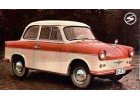 |
|
1957 - 1964
To best understand the Trabant, you have to first understand
the circumstances from which it was born. Post war Europe,
both sides of the iron curtain, needed a form of cheap
personal transportation, this demand being met by motorcycles
and mopeds (the latter most successfully by the wonderful
Vespa's). More>> |
 |
 |
 |
1964 - 1991
In 1964 AWZ released the most famous of the Trabants,
the P601. This new car had a 594 cc, 26 bhp engine naturally
enough derived from the P50. One should not expect too
much in the way of innovation when detailing new models
of Trabant, however this engine did use new cylinders,
new cylinder-heads and a modified exhaust system. More>> |
|
|
|
|
 |
|
1936 - 1940
The combinantion of a light-weight body and fully independent
front suspension set new standards for the time, offering
levels of roadholding, cornering and handling precision
previously unheard of. It is no wonder then that many
collectors consider the 328 to be the best sports car
of the 1930's. More>> |
 |
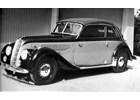 |
|
1936 - 1940
In the 1930s, as the war clouds were gathering and Germany could boast the most advanced road system in the world, several European manufacturers started thinking about building super cars to make full use of these new super roads. Mercedes used raw power and cubic inches to push its barn-door radiators through the air at high speed, and BMW designed a streamlined “autobahn special” for release in 1936. More>> |
 |
 |
|
1955 - 1959
The BMW 507 was arguably one of the most beautiful cars
of the 1950's. Built to add a glamour car to increase
American sales as well as well as boost their flagging
post war image, BMW used Albrecht Goertz to design their
new sportscar. More>> |
 |
 |
|
1955 - 1962
With folding roof and wrap around rear window, the driver
and passenger entered via a front hinged door that also
lifted the steering wheel when opened. More>> |
 |
 |
|
1965 - 1969
There has always been something special about the Teutonic approach to building a car. It seems the collective objective of all the German auto makers is to use a no-nonsense concept of design and the meticulous precision of assembly. More>> |
 |
 |
|
1967 - 1972
Alpina's Bavarian headquarters took a BMW 1600 2-door sedan (then BMW's smallest car), installed a super-tuned 2-litre BMW engine (BMW's biggest engine) and all the attendant devices necessary to bring the chassis specifications in line with the engine. More>> |
 |
 |
|
1971 - 1975
The CS coupes are among the best of all BMW classics,
it has one of the best six-cylinder engines in the world
- powerful, smooth and refined. More>> |
 |
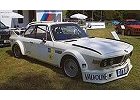 |
|
1971 - 1975
The CSL was first produced in May 1971 as a lightweight
version of the six cylinder coupe and to homologate for
European Touring Car Group 2 races. It had thinner body
panels, no front bumper, fibreglass rear bumper, racing
latches to the bonnet, side windows made from Plexiglass
and alloy-skinned opening panels, all to aid in weight
reduction. More>> |
 |
 |
|
1972 - 1981
In Australia BMW imported the 528i, and marketed it as a sporty sedan, rather than as a sports car - a subtle distinction maybe, but it did provide an accurate description of what the car offered by way of performance and handling. The 528i's injected 2788cc six cylinder SOHC engine was never a sluggard, but its performance allied to some fine suspension tuning transformed the machine fully into the same sports car class as the smaller 323i. More>> |
 |
 |
|
1972 - 1973
The BMW turbo was built during 1973, a period that saw
skyrocketing fuel prices. Rare and definitely exciting,
the BMW 2002 is now one of the most collectable 1970's
BMW's. More>> |
 |
 |
|
1974 - 1977
The 3.3L Limousine came at a time when Europe was suffering from rising inflation and rushing towards poverty, while Germany, who had lost the war, was very obviously winning the Industrial battle of the 1970s.The 3.3L Limousine came at a time when Europe was suffering from rising inflation and rushing towards poverty, while Germany, who had lost the war, was very obviously winning the Industrial battle of the 1970s. More>> |
 |
 |
|
1975 - 1981
Although the BMW company's reputation was built on its large saloon and sports coupe models, since the 1970's its major source of revenue has been supplied by the company's bread-and-butter family saloons. Typical of these models was the 320 range, introduced during mid 1975. The 3-series model replaced the 1602/2002 series which for many years had proved the mainstay of BMW's production. More>> |
 |
 |
|
1977 - 1979
The 733i used the well known 3.3-litre straight-six engine which featured a cast-iron cylinder block and aluminium head with virtually hemispherical combustion chambers. This apart, the single-overhead-cam engine was a relatively simple design, but nonetheless it developed a very healthy 197 bhp at 5500 rpm, and 200 lb ft of torque at 4300rpm. More>> |
 |
 |
|
1978- 1983
The Alpina BMW C1 retained the Bosch K-Jetronic fuel injection system and had a claimed top speed of 208 km/h (129 mph), with acceleration figures of 7.9 sec for 0 to 100 km/h (62 mph) and 28.9 sec for a standing start kilometre. More>> |
 |
 |
|
1978- 1983
The top of the Alpina range in the late 1970's was, as usual, a BMW, based on the then new 5 series. The previous 5 series was the base for cars powered by a 3-litre turbo developing 300 hp and a 330-hp 3.5-litre unit, but the B9 was a normally aspirated 3.5-litre which developed 245 hp. More>> |
 |
 |
|
1979 - 1980
The Motorsport 1 (M1) remains the only mid-engined beamer
to be developed, and that in itself if enough to make
the car truly unique. But more important than any break
away from traditional design was the cars fabulous handling and performance. More>> |
 |
 |
|
1979 - 1989
It may not be the greatest of BMW classics, neither today
nor in the future, but the precise handling and sense
of involvement lost in the current 8-series make this
car very memorable. More>> |
 |
 |
|
1980 - 1986
Although announced at the 1979 Frankfurt Show, the 745 Turbo was not launched until the middle of 1980. BMW had taken a little time et their high performance flagship into shape, but its emergence certainly gave a boost (in more ways than one) to the power/prestige race between Munich and Stuttgart. More>> |
 |
 |
 |
1989 - 1991
The BMW Z1 was first presented as a concept in 1986, generating such enthusiasm that 5,000 advance orders were placed. BMW rushed the car into full production, and both the prototype and final road going version made clever use of plastic body panels and a flat composite undertray for improved aerodynamics. More>> |
|
|
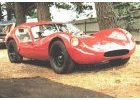 |
|
1962 - 1964
The Bolwell Mk IV can be considered the first serious
commercial model to be released, following the previous
"hobby" versions. The Mk IV was manufactured in component
form and sold as a kit, meaning the purchaser had to
either assemble the car themselves, or pay someone to
do it. More
>> |
 |
 |
|
1965
The Bolwell Mk V was produced in 1965, and combined both
the latest European developments with the Bolwell brothers
own individual ideas of what would make for a superior
sports car. More
>> |
 |
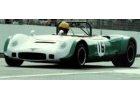 |
|
1968
While the Bolwell Mk V was designed for general consumption,
the Bolwell brothers' set about designing a race special,
the resultant Mk VI (SR6) being a mid-engined masterpiece
that was raced very successfully in various Australian
sports car events – and is still around today! More
>> |
 |
 |
|
1967 - 1972
The Bolwell MK VII marked the start of something big.
It was a sleek, fastback coupe that maintained the Holden
components theme with more than a hint of Ferrari styling.
Like the Lotus Elan, it had a backbone chassis, formed
by folded sheet metal. More
>> |
 |
 |
|
1969 - 1972
On Graeme Bolwells return from a working holiday in the
UK (with much time spent at Lotus), work soon commenced
on the MK VIII. In fact this new model was released in
1969 while the MK VII was still in production! More
>> |
 |
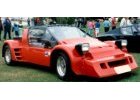 |
 |
1979
During the halcyon days of the fifties and sixties, sports
cars were less compromising and offered no pretense of
sophistication or luxury. Expectations rose during the
1970's (led in many ways by Mercedes seeking to make their
expensive sports cars appealing to the Hollywood Boulevard
brigade). More>> |
|
|
 |
|
1967 - 1970
The decision to manufacture a four-wheel car instead of their usual "minicar" variety was born from a desire to find a niche where the company could capitalise on their skill in fibreglass construction. The original prototype design was penned by Lawrie Bond, and featured a particularly handsome fastback rear with small tail fins. More
>> |
 |
 |
 |
1970 - 1974
Following the take over of Bond in August 1970 Reliant stopped all Bond models but prior to this, they had commissioned Tom Karen of Ogle Design (Ogle being the companies design consultants) to produce a sports 3-wheeler for the "young" generation. This was to be sold under the Bond name as the "Bond Bug". More
>> |
|
|
 |
 |
1954 - 1961
The body not only looked ultra new for 1954 it comprised
a unit construction body and separate front and rear sub
frames, the front one being rubber mounted. The front suspension featured unequal wishbones, coil springs and
telescopic shock absorbers, checked by an anti roll bar.
At the rear was a fully independent swing axle, again
featuring coil springs and telescopic shock absorbers. More>> |
|
|
 |
 |
1974 - 1976
The Bricklin SV1 was an exceptionally good-looking 2-seat sports car, and was equipped with just about everything imaginable in 1974. There was air-conditioning, AM/FM stereo, power steering and brakes, tinted glass, tilt steering wheel, cast alloy wheels, radial tyres – and because of the stringent US safety laws you could drive it into a wall at 10 mph (forward or backward) without damage. More>> |
|
|
|
|
|
|
 |
|
1956
Buick's new "dream" car for 1956 is the Centurion, a racy four-passenger, two-door coupe with an all-glass top. Made of fibreglass, the Centurion incorporates many innovations in styling and engineering. It is mounted on a 118 inch wheelbase and is powered by a 325 horsepower V-8 engine. More>> |
 |
 |
|
1961 - 1963
In the early 1960s more and more Americans were following the then current trend of ordering their cars with sports options - bucket seats, convertible tops, and four-speed floor shifts. Most of these items were being ordered on compact cars, not standard-sized ones. One of the more popular compacts was the Buick Special, and in the early 1960s the Special was the second-best seller in the Buick line-up. More>> |
 |
 |
|
1963 - 1965
Blessed with some of the finest styling to come out of
Detroit it was restrained yet swoopy and exuded presence
where cars like the Cadillac and Imperial were seen as
merely big. More>> |
 |
 |
|
1967 - 1969
The California GS was Buick's attempt to create a lower
cost and smaller muscle car. Fitted with the small block
GS drivetrain, the exterior received the full treatment
including vinyl top, chrome moulding package, GS emblems,
and special California scripts. More>> |
 |
 |
|
1968
Buick's Gran Sport didn’t catch the American public's eye - and car-buying dollars - as well as its competitors'. By 1968 it was fighting for 4th place in the intermediate super arena with Ford's Fairlane. And that in itself told a story...firstly that the Fairlane wasn't higher on the charts, and the fact that Buick was able to maintain a sales figure equal to a Ford product. More>> |
 |
 |
|
1971 - 1973
Although controversial when released, successive Riviera's
became smaller, uglier and far more conventional, ending
the allure but ensuring this model would forever be remembered
as a true classic. More>> |
 |
 |
 |
1982 - 1987
While the Buick T-Type Regal coupes were aimed at the
performance market, 1982's Regal Grand National signalled
a change for the better. Named for the NASCAR Grand
National racing series, this car incorporated a 4.1
litre V6 with 125 hp, or an optional 180 hp turbocharged 3.8 V6. It also featured T-tops, front and rear spoilers
and a striking gray over silver paint job. More>> |
|
|
 |
|
1959 - 1960
LeSabre and all other 1959 Buicks not only got new names, but all-new styling as well, adopting the new GM B- and C-body used on all of the corporation's full-sized cars - the larger C-body used in the Electra as well as the Oldsmobile 98 and all Cadillacs was basically a stretched out B-body rather than a distinct body and chassis. More>> |
 |
 |
|
1961 - 1964
LeSabre and all other full-sized Buicks (joined by the compact Special this year) were completely restyled for 1961 featuring finless rear ends, more restrained use of chrome, and boxier sheetmetal. Wheelbases remained at 123 inches (3,100 mm) but the new cars were slightly downsized in both length and width, and rode on a new X-frame chassis which included a conventional rear axle and driveshaft replacing the decades-old torque tube design. More>> |
 |
 |
|
1965 - 1970
LeSabre and other full-sized Buicks were completely restyled for the 1965 model year, featuring more rounded bodylines and Coke-bottle profiles with semi-fastback rooflines on two-door hardtop coupes. Wheelbases remained at 123 inches (3,100 mm), but a new perimeter frame shared with other GM B-body cars replaced the "X" frame used since 1961. Body styles were unchanged from 1964. More>> |
 |
 |
|
1971 - 1976
Like the other GM divisions, Buick completely restyled its B- and C-body cars for 1971. The full-size cars emerged larger and heavier than before and also ever after. The styling featured curved bodysides, long hoods and wide expanses of glass, similar to that of Chrysler Corporation's 1969 full-sized cars, but with a lower beltline than the Chrysler products. Semi-fastback rooflines were utilized on two-door hardtop coupes. More>> |
 |
 |
|
1977 - 1985
Like the other GM divisions, Buick completely restyled its B- and C-body cars for 1971. The full-size cars emerged larger and heavier than before and also ever after. The styling featured curved bodysides, long hoods and wide expanses of glass, similar to that of Chrysler Corporation's 1969 full-sized cars, but with a lower beltline than the Chrysler products. Semi-fastback rooflines were utilized on two-door hardtop coupes. More>> |
|
|
 |
|
1953 - 1954
The first iteration of the El Dorado was a low volume convertible only model, available in four unique colors - Aztec Red, Alpine White, Azure Blue and Artisan Ochre. Convertible tops were available in either black or white Orlon. More>> |
 |
 |
|
1955 - 1958
For 1955, the Eldorado's body gained its own rear end styling with high, slender, pointed tailfins. These contrasted with the rather thick, bulbous fins which were common at the time and were an example of Eldorado once again pointing the way forward. More>> |
 |
 |
|
1957 - 1958
It was curvy with pillarless doors and knife-edged fins
with a 90 degree wraparound on the front screen. Its roof
was built from stainless steel and with its narrow white
sidewalls and twin headlights it was seen as an industry
first. More>> |
 |
 |
|
1959 - 1966
A different Eldorado Brougham was sold for 1959 and 1960. These cars were not quite so extravagantly styled but were very unusual pieces in themselves. Priced at $13,075, they cost $1 more, each, than their older siblings. More>> |
 |
 |
|
1967 - 1970
The Eldorado was radically redesigned for 1967. Intended for the burgeoning personal luxury car market, it was a "personal" Cadillac sharing the E-body with the Buick Riviera and Oldsmobile Toronado that had been introduced the previous year. More>> |
 |
 |
|
1971 - 1978
When GM's full-size cars were redesigned for 1971, the Eldorado regained both a convertible model and its fender skirts. The 126.3-inch (3,210 mm) wheelbase version of the Eldorado would run through 1978, receiving facelifts in 1973 and 1975. More>> |
 |
 |
|
1975 - 1979
For most, driving simply means around town or down a long and straight highway. When it was rare to find yourself on the twisty stuff, the Seville's suspension, by front wishbones and anti-roll bar, with semi-elliptic springs at the rear, was near perfect. Similarly there was little need for particularly precise steering, and this was an area in which the Seville's recirculating ball system revealed its typically American origins. More>> |
 |
 |
|
1979 - 1985
For 1979, a new, trimmer Eldorado was introduced, and for the first time the car shared its chassis with the Buick Riviera as well as the Toronado. Smaller 350 and 368 in³ (5.7 and 6.0 litre) V8's replaced the 500 and 425 in³ (8.2 and 7.0 litre) of the preceding model, giving better fuel efficiency. More>> |
 |
 |
|
1986 - 1991
For 1986, yet another downsizing occurred, and it was fairly extreme. In fact, the costly Eldorado was now the same size that GM's own compact cars had been only a few years earlier, and much smaller than Lincoln's competing Mark VII. More>> |
 |
 |
 |
1992 - 2002
For 1992, a new Eldorado appeared. It was in fact only slightly bigger than its predecessor, but it was so much more adroitly styled that it seemed greatly so. Window glass was once again frameless, and shortly after introduction Cadillac's new Northstar V8 became available in both 270 and 295 hp variants, replacing the 200 hp 4.9 litre. More>> |
|
|
 |
 |
1956 - 1982
For those not born in the US, the classic looks of the
New York cab do not give any hint as to the manufacturer
of the vehicle. Rugged and reliable, it was in fact manufactured
by Checker and was even available as a passenger car from
1960 to 1982. More>>
|
|
|
 |
|
1954 - 1957
The 1950's are synonymous with young Americans enjoying
rock 'n' roll, drive-in movies and cars that were fast
and affordable. The Chevrolet Bel Air became one of the
most popular American cars ever because of its unique
style, engine modifications and affordable price. More
>> |
 |
 |
|
1959 - 1969
Controversy surrounded early Corvairs culminating in
Ralph Nader to publish a book entitled "Unsafe at any Speed"
which resulted in a change in government regulations
and safety that continues even today. More>> |
 |
 |
|
1959 - 1973
Many consider it unfair that the El Camino is so readily
associated with ethnic and class stereotypes. Australia
may be the birthplace of the utility, but for the US
market it was the Ford Ranchero and Chevy El Camino that
introduced the notion of a vehicle offering car like comfort
combined with truck like carrying capabilities. More
>> |
 |
 |
|
1966 - 1969
In 1966, Don Yenko was impressed enough with the late model Chevrolet Corvair's handling, and decided to apply for SCCA approval of the Corsa model for racing. The sanctioning body approved the cars with back seat removed and upgrades to the Corsa engine increasing horsepower and torque. More
>> |
 |
 |
|
1967 - 1969
The Ford Mustang can be credited with forcing other US
car manufacturers to design and manufacture cars with
personality and design flair. The AMC Javelin, Plymouth
Barracuda and the now infamous Chevy Camaro were all created
in response to the incredible popularity of the Mustang! More>> |
 |
 |
|
1967 - 1969
Today, even the most ill-informed know the Z-28 designation referred to an engine option, a 302.4 cu. in., 290-hp V8, the heart of a sedan racing package. The option added US$437.10 to the Camaro's $2572.00 base price, but additional mandatory options, such as power disc brakes (front) and a four-speed close-ratio Muncie transmission, brought the sticker price up to a minimum of $3314.60. More>> |
 |
 |
|
1970 - 1972
Equipped with all the creature comforts possible at the
time, and finished with a Walnut dashboard to enhance
its classy image, the car was most at home when cruising
the highways. More>> |
 |
 |
|
1971 - 1977
The Chevrolet Vega, which was first introduced in 1971, marked a new direction for Chevrolet towards a sub-compact market previously dominated by European imports, and which also included such other American products as the Ford Pinto and the American Motors Pacer. More>> |
 |
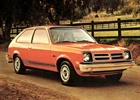 |
|
1975 - 1987
EIn the decade leading up to the release of the Chevette, design proposals for small cars were regularly rejected. The 1976 Chevette was then the smallest and lightest car ever made in the US under the Chevrolet name. The only car built under the Chevrolet aegis that was smaller was the “Little Four” of 1912 and 1913, which was shorter in wheelbase and lighter in weight. More>> |
 |
 |
 |
1980 - 1985
In order to contain the threat General Motors invested the unprecedented sum of 2.7 billion dollars in their 'X-Car' project. It was rated a worthwhile investment as it was estimated the new-generation cars would ultimately represent 60 per cent of the US market. More>>
|
|
|
 |
|
1964 - 1967
The Chevelle was intended to compete with the Ford Fairlane, and to return to the Chevrolet lineup a model similar in size and concept to the popular 1955 - 1957 models. Enthusiasts were quick to notice that the Chevelle’s 115-inch (2,900 mm) wheelbase was the same as that of the 1955 - 1957 Chevy. Two-door hardtop coupes, and convertibles, four-door sedans, and four-door station wagons were offered throughout the entire run. More
>> |
 |
 |
|
1964 - 1967
The Chevelle SS396 became a series of its own in 1966 with series/style numbers 13817 and 13867. SS396 sport coupes and convertibles used the same Malibu sport coupe and convertible bodies with reinforced frames and revised front suspension: higher-rate springs, recalibrated shocks, and thicker front stabilizer bar, but with different exterior trim. They also had simulated hood scoops, red-stripe tires, and bright trim moldings. More
>> |
 |
 |
|
1968 - 1972
The 1968 Chevelle got an all-new distinctly sculpted body with tapered front fenders and a rounded beltline. The car adopted a long-hood/short-deck profile with a high rear-quarter "kick-up". While all 1967 Chevelle models rode a 115-inch (2,900 mm) wheelbase, the 1968 coupes and convertibles now rode a sporty 112-inch (2,800 mm) wheelbase. The sedans and wagons turned to a 116-inch (2,900 mm) span. More>> |
 |
 |
|
1973- 1977
The most extensive redesign in its 10-year history marked the 1973 Chevelle, and with it marked the end of hardtops as we knew them. The newly-named "Colonnade Hardtop" featured a semi-fastback roofline, frameless door glass and fixed, styled "B" pillars, structurally strong enough to contribute to occupant safety of a roll-over type accident. GM had anticipated Federal roll-over safety standards that ironically didn't materialize. More
>> |
|
|
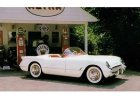 |
|
1953 - 1954
Sports car sales got off to a shakey start in the US after World War 2. Understandably, many had postponed family plans, and so the resultant baby-boom made the family car a top seller, and the sports car remained a mere whimsy for the wealthy. More
>> |
 |
 |
|
1955 - 1957
By the end of 1956 only 3,467 Corvette's had been manufactured, in comparison with over 15,000 Ford Thunderbirds. But the direction of the Thunderbird was about to change, the decision to make it a "personal car", somewhere between a sports car and a family car, would make it easier for the Corvette to wrest the mantle of being America's favourite sports car. More
>> |
 |
 |
|
1958 - 1962
The 1958 Corvette saw another body freshening. This year had the most exterior chrome of the C-1 generation. From its quad headlights and hood louvers to its twin trunk spars and bumper exiting exhaust, it was the flashiest Corvette built. 1959-60 saw little changes except decreasing chrome and increasing HP. More
>> |
 |
 |
|
1963 - 1967
The second generation, or mid-year Corvette was designed by Larry Shinoda with major inspiration from a previous un-produced design called the "Q Corvette" by Peter Brock and Chuck Pohlmann, under the styling direction of Bill Mitchell. The design had several inspirations. The first was the contemporary Jaguar E-Type, one of which Bill Mitchell owned and enjoyed driving frequently. Mitchell also sponsored a car known as the "Mitchell Sting Ray" in 1959, because Chevrolet no longer participated in factory racing. More
>>
|
 |
 |
 |
1968 - 1982
The third generation Corvette was patterned after the "Mako Shark II" concept car. The C3 was introduced for the 1968 model year and lasted through 1982, and at 15 years was the longest running Corvette generation. It came out on top of the performance era of the 60's, sold in record numbers through the EPA rules and gas crunch of the 70's, and stood its ground against its competition into the early 80's. More>> |
|
|
 |
 |
1958
The Impala was introduced in 1958 and was positioned as a top of the line Bel Air in either coupe or convertible. From the windshield pillar rearward, the 1958 Chevrolet Bel Air Impala differed structurally from typical Chevrolets. Hardtops had a slightly shorter greenhouse and longer rear deck, giving the impression of an extended body. More>> |
 |
 |
|
1959 - 1960
The 1959 Chevrolet Impala was radically reworked sharing bodyshells with lower-end Buicks and Oldsmobiles as well as with Pontiac, part of a GM economy move, Chevrolets rode a wheelbase 11/2 inches longer than before. Atop a new X-frame chassis, roofs sat three inches lower, and bodies measured more than two inches wider overall. The growing size contributed to increased curb weight, one more trend of the times. More>> |
 |
 |
|
1961 - 1964
In the US the Impala was the top car in the Chevrolet range. It was available as a four-door sedan and sport sedan, a sport coupe and convertible (both available with Super Sport equipment like bucket seats, heavy-duty coils, floor shift, and six and nine-passenger station wagons. More>> |
 |
 |
|
1961 - 1964
Most noticeable on the 61 Impala was the lack of tail
fins, however the options fitted to the SS and the enormous
size of the 6704cc V8 were what really put the car ahead
of its time. More>> |
 |
 |
|
1965 - 1970
Totally redesigned in 1965, the Impala set an all-time industry annual sales record of more than 1 million units in the U.S., which has never been bettered. All new full-size Chevys eschewed the "X" frame for a full-width perimeter frame, a new body which featured curved, frameless side glass (for pillarless models), sharper angled windshield with newly reshaped vent windows, and redesigned full-coil suspension. More>> |
 |
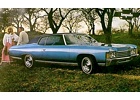 |
|
1971 - 1976
The Impala remained Chevrolet's top-selling model with the fifth generation. A high-performance big block V8 was still available in the form of the Turbo-Jet 454, which produced 365 hp in 1971, but power decreased as the years went along. The 1971 redesigned B-body would be the largest car ever offered by Chevrolet. The hardtop Sport Coupe continued to be offered; it was a smoothly sloped semi-fastback reminiscent of the 1961 "bubbletop" styling. More>> |
 |
 |
|
1977 - 1985
IThe changes in the automobile marketplace resulted in Chevrolet redesigning the Impala once again in 1977 to meet changing demands. The new downsized Impalas were shorter in length, taller and narrower than before. The new Impala's frame was a shortened version of the one introduced in 1971 and would be utilized until 1996 when the B-body production line was shut down. More>> |
|
|
 |
|
1924 - 1931
Walter P. Chrysler wanted the Chrysler Six to be a light vehicle, seat five passengers, and be economical to own and operate. He wanted it to be a model of durability and performance. More>> |
 |
 |
|
1934 - 1937
Their engineers found that then-current two-box automobile design was so aerodynamically inefficient, that it was actually more efficient turned around backwards. More>> |
 |
 |
|
1935 - 1937
While the Chrysler Airflow marked a radical departure from typical 1930’s designs, the Airstream represented a mild makeover of the 1933 “CO” amd 1934 “CA” models, albeit with a more flowing and streamlined design – something to ensure Chrysler dealerships throughout the USA literally had “something for everyone”. More>> |
 |
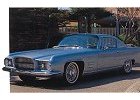 |
|
1960 - 1962
Perhaps the most collectable Chrysler in the world, the Ghia L6.4 has all the trademarks of a truly desirable
classic automobile. More>> |
 |
 |
|
1960 - 1964
The New Yorker was the flagship of the Chrysler range. As such, there were not too many things you needed to worry about. Once you had chosen the colour and upholstery fabric you were pretty much done. Everything else - and we do mean everything - was standard equipment. More>> |
 |
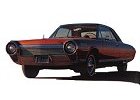 |
|
1963
Several car manufacturers experimented with the idea of
developing a Gas Turbine car, but none got nearer to developing
a fully blown production model than Chrysler. More>> |
 |
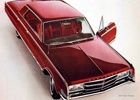 |
|
1965
The Chrysler 300-L was the last of the 300 letter cars - all of which are extremely collectable today. It was available as a two-door hardtop or as a convertible, and was the 11th in a series of performance cars which dated back to the mid 1950s – with Chrysler being the undisputed pioneers in the performance car category. More>> |
 |
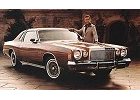 |
 |
1975 - 1983
The Chrysler Cordoba first appeared in 1975, a twin of
the detuned, depowered Dodge Charger. Amusingly, it
was originally meant to be a Plymouth, rather than
a Chrysler; that was a last-minute change. The Cordoba
was a B-body, one step in size above the entry-level
Valiant A-body, but below the C and D bodies that
usually wore the Chrysler badge. More>> |
|
|
 |
|
1957 - 1964
The Royal was always a style-leader, but unfortunately was well beyond the price range of the majority of new-car buyers, and as such was overlooked by many when searching for their next new car. That makes them very rare, and highly collectable. More>> |
 |
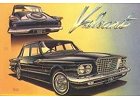 |
|
1962 - 1962
Understanding the R series Valiant requires taking a
look back in time so that the car can be put into perspective. More>> |
 |
 |
|
1962 - 1963
The Valiant "S" series, or SV-1, was an evolution
of the R Series, it continuing the theme of a US design
being locally assembled. More>> |
 |
 |
|
1963 - 1965
It was in 1963, with the introduction of the
AP5, that Chrysler Australia began manufacturing Valiant’s
rather than just assembling them. More>> |
 |
 |
|
1965 - 1966
The Valiant AP6 was an evolution of the AP5, having
a facelifted split grille and introducing to the range
the V8 engined Valiant "Regal", along with
the “Wayfarer” utility. More>> |
 |
 |
|
1965 - 1966
The release of the VC Valiant heralded
the true beginning of the “Battle of the Big Three”.
The Chrysler stylists had been busy creating a car that
looked longer, lower and sleeker than any previous model,
even though it was basically only a facelift of the previous
AP5/AP6 design. More>> |
 |
 |
|
1967 - 1969
The Valiant VE was an all new design, the bodywork sharing
some sheet-metal with the US Plymouth Valiant and Dodge
Dart; despite the US content the VE was unquestionably
the most Australian Valiant to date. More>> |
 |
 |
|
1969 - 1970
For our money,
the face-lifted VF ushered in a new elegance and style
lacking in so much of the competition, and with the introduction
of the “Pacer” Chrysler clearly indicated
the new found good looks would be matched by equally
impressive performance. More>> |
 |
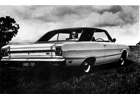 |
|
1969 - 1970
Based on the Stateside Dodge Dart, the two door utilised VF front panels but from the bulkhead back was strictly imported metal. Chrysler began with the importation of Dart panels – although they were intending to switch to local pressing if production volume had warranted it. The profile was distinctly American Dodge with a very slight hipline kicking up just to the rear of the door. More>> |
 |
 |
|
1970 - 1973
Differentiating the VF over its predecessor is a little
like playing a “spot the difference” test
in a weekly magazine. Externally there were very few
differences, apart from the now rectangular front lights,
while the interior remained almost identical in every
way. More>> |
 |
 |
|
1971 - 1973
There was a collective sigh from Valiant aficionados
in 1971 with the release of the all-new VH, particularly
with those salivating for new Chrysler sheet metal. More>> |
 |
 |
|
1971 - 1973
The Chrysler by Chrysler CH model was released
in November 1971 in both two and four door models.
Released as a replacement to the ever popular VIP model,
the Chrysler CH moved even further up the luxury ladder,
and was often described as a “limousine”. More>> |
 |
 |
|
1973 - 1975
By the time of the release of the VJ Valiant,
Chrysler’s market share was in its fourth consecutive
year of decline. More>> |
 |
 |
|
1973 - 1975
By 1973 the CJ version the Chrysler by Chrysler lowered its social status - and its price - a little by shedding some of its luxury trappings and moving down into the realms of its less lavishly-equipped competition. Judged in its own right, however, the Chrysler was a pretty fair match for its main opposition, the Fairlane and GMH's Statesman. More>> |
 |
 |
|
1973 - 1976
The Valiant Galant was fitted with the gutsy, noisy 1600cc Saturn unit
which Mitsubishi claimed produced 100 bhp at 6300 rpm. The engine was an interesting mixture of both modern
and traditional features. For the time, it featured what many considered to be a sophisticated
breathing system - single overhead cam, cross flow
head, hemispherical combustion chambers, twin
choke carburettor and smooth-l-branch exhaust manifold. More>> |
 |
 |
|
1975 - 1976
The VK Valiant was yet another mild makeover of
the previous VH and VJ models. The obligatory new grille
design combined with a revised tail light assembly made
up the more obvious of only a handful of changes, leaving
many to ask why Chrysler had indeed bothered. More>> |
 |
 |
|
1976 - 1978
The CL Valiant was supposed to be something
special. Chrysler had been touting the fact that the
all new Valiant VL would be an Australianised edition
of the Plymouth Volare / Dodge Aspen intermediate sized
car proving to be very popular in the US. More>> |
 |
 |
|
1976 - 1978
The model range of the CL was certainly nowhere
near the heady days of the VH series, when 56 different
model variants were available. The development then of an entirely new model seemed
at odds with the conservative approach being taken by Chrysler. More>> |
 |
 |
 |
1978 - 1981
The last re-styling and packaging of the 1971
VH design was to be seen in the CM Series Valiant – unfortunately
this would also be the last of the prestigious lineage
of Valiant’s that had graced our shores since
1962’s introduction of the “R” series. More>> |
 |
 |
|
1975 - 1977
Based on the French "Simca", the Centura was considered
by many to be too little too late, being released in
1975, some 8 years after the Torana and TC Cortina had
made inroads and established their market share. More>> |
|
|
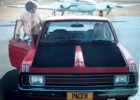 |
|
1969 - 1970
Some indication of the Pacer's accelerative ability can be taken from the fact that a Falcon GT from that era recorded 0-60 times in the high eight seconds bracket, while the Pacer could manage around 9.1 seconds – so while it may not have beaten the V8 monster in a straight line, it would loom large in the rear view mirror. More>> |
 |
 |
|
1970 - 1973
The VG Pacer had a higher performance 265, and it set a record for being the fastest mass-produced four-door six cylinder sedan produced in Australia (the record was undisputed until 1988). The relatively inexpensive Pacer's 265 had 218 hp, leading to a 15.9 second quarter mile, 8 second 0-100 km/h, and top speed of 185 km/h - all with a 3 speed transmission! More>> |
 |
 |
 |
1970 - 1973
A new star rose on the Australian motoring scene in 1971, with the arrival in the VH Valiant range of the short wheelbase, fastback Charger. Chrysler's TV campaign featured the young adults at whom it was targeted, waving at one as it swept by them and shouting "Hey, Charger!" - one of the more memorable TV ads of the time, it created a cliché that haunts today's owners. More>> |
 |
 |
 |
1971 - 1973
What was so good about the E38? Up front it was all VH Valiant, which helped to keep the costs down. The rear end treatment was an entirely different story, but it was not extraordinary nor revolutionary. The E38 ran on a 105-inch-wheelbase, and apart from the highly developed Hemi, the Charger featured power disc brakes up front and drums at the rear, twin fuel fillers and 16.0:1 steering. That was it, basically. More>> |
 |
 |
 |
1973 - 1975
Despite the withdrawal from touring car racing, the Charger range had proved to be one of the most successful marketing moves ever made by Chrysler. The car was a breakaway from the established principle that coupe derivations of four door sedans should be priced into a slightly more exclusive market. Charger models were, in fact, about $100 cheaper than the nearest sedan equivalents. More>> |
|
|
 |
|
1970 - 1982
The Chrysler 180 remained very French, despite its all-American name. It was fitted with a then new 1812cc single-overhead cam engine which, along with the four-door body, was built in France but designed by Roy Axe and Curt Gwinn in England. The design of the 180 was originally to wear the Humber badge, but that changed when the Humber brand was put out to pasture. More>> |
 |
 |
|
1975 - 1980
There were serious problems with the British motor industry during the reign of the Chrysler Sunbeam. We have already written (arguably too much) on this subject, and besides, we really do like so much of British sheet metal. So writing this review will test our mettle, can we get to the end without bemoaning everything that went pear shaped during the 1970's? More>> |
 |
 |
|
1975 - 1980
The Alpine - also called the Simca 1307/1308/1309 (depending on the mechanical specification) in France and other European countries - was a classic front-drive, medium-sized, five-door hatchback family saloon. More than just a well-planned and versatile model, it was hoped that it would be so good, it would ultimately be the saviour of Chrysler UK Ltd. In 1976 the company was in a desperate commercial and financial crisis, with a range of ageing models, falling demand, and nothing coming along to retrieve the situation. More>> |
 |
 |
 |
1976 - 1979
In 1976 Chrysler decided to market the Avenger under
it’s own name, and at the same time gave the
car a comprehensive makeover. The new frontal treatment
featured squared off headlights, while at the rear
the distinctive “hockey stick” style tail
lights were dropped in favour of more conventional
units. More>> |
 |
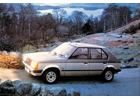 |
 |
1977 - 1986
It was a little ironic that Chrysler felt they needed to unload their European operation, consisting of Chrysler UK, and Simca in France, to Peugeot in 1978 before the Horizon came on the market. The Horizon was the car intended to revive and strengthen the American subsidiary, and sales figures were excellent from the word go, and Europe's motoring writers chose the Horizon as their car of the year in 1978. More>> |
|
|
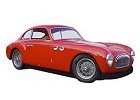 |
 |
1947 - 1952
Any car design that obtains the honour of being displayed
at the New York Museum of Modern Art is surely the penultimate
in collectable cars. More>> |
|
|
 |
|
1934 - 1957
Made between 1934 - 1957, the Traction Avant established Citroen's
reputation as a technology leader. It had monocoque chassis,
front-wheel drive, over-head valve engine and torsion
bar suspension. More>> |
 |
 |
|
1948 - 1990
From 1948 to 1990, nearly 4 million 2CVs rolled out of
the Citroen factory, placing on the top of Citroen's
own all-time best selling chart. Globally, its 42 year
life span places it in second place just behind the VW
Beetle. More>> |
 |
 |
|
1955 - 1975
Seen as one of the most innovative cars of its era,
the Citroen DS engineers introduced self-levelling suspension with hydraulic hydropneumatic struts and
unique adjustable ride-height facility allowing the
DS to raise itself over rough terrain. More>> |
 |
 |
|
1956 - 1975
On the road the ID was 5 mph slower than the DS, but it would sprint from 0 to 60 in 17.6 seconds against the DS's 19 seconds. It was more sparing on fuel, too: 31.3 mpg compared to 28.8. The ID's conventional gear-change and clutch set-up was a touch faster and much more precise than the DS's hydraulically "cushioned" arrangement. More>> |
 |
 |
|
1961 - 1978
Mechanically the Citroen Ami-6’s design was derived from that of the 2CV but it was more powerful and had a much more luxurious body. Its 602cc engine gave a maximum speed of 65 mph. At launch, in France it cost 6550 francs. This was about 13 percent more than the cheapest three-speed Dauphine, which had a higher performance. More>> |
 |
 |
|
1967 - 1983
Released in September 1967 and looking a little less corrugated than the timeless 2CV, the Dyane used the same 425cc engine and was aimed as an "intermediate" model, sitting between the 2CV and Ami Six belt. Later versions gained a choice between the new 435 and 602 cc engines, the latter engine featuring higher compression pistons and forced induction from the engine fan. More>> |
 |
 |
|
1970 - 1975
This prestige SM was created in 1970, and used a smaller
V6 version of Maserti's quad-cam V8 motor, combined with
Citroen's already well developed front wheel drive
that had its gearbox/transaxle unit slung ahead of the
compact engine. Now, at last, a performance Citroen. More>> |
 |
 |
|
1973 - 1976
The Ami Super was a flat-4 variant of the original Ami, powered by the engine of the GS and produced between 1973 and 1976. At the launch of the GS, its original flat 4 cylinder air-cooled 1015cc 55 bhp DIN engine was considered to be under powered. With surplus engines available, Citroen decided to fit the engine into the Ami 8 in January 1973. More>> |
 |
 |
|
1973 - 1979
The Citroen GS 1220 possessed that quality of ugliness which only the chic French could make admirable. The controversial shape packed in the maximum passenger and luggage space
within a minimum road space. More>> |
 |
 |
|
1974 - 1979
The immediate impression created by the CX was that it was a clever styling mixture of GS and SM, a recommendation in itself. Technically too it was an amalgam of everything that was advanced in the then current Citroen models, wrapped in a most elegant, ultra-modern body. More>> |
 |
 |
|
1976 - 1983
First released in Australia in 1976 in 2.2 litre form,
by 1981 the CX 2400 would be the only model Citroen
would offer in Australia. The car was actually first
released in Europe in 1974, then replacing the long
standing D series that had been in continuous production
for more than twenty years. More>> |
 |
 |
|
1978 - 1987
The Visa Club's neat four door body had a distinctive thermoplastic nose section with the traditional loftiness of its forebears, while wheel-arch gaps suggested that this Citroen had all the suspension travel expected of the breed. Certainly, a great deal of attention was paid to the creature comforts of the driver and passengers. More>> |
 |
 |
|
1979 - 1982
Citroen's useful and amusing plastic-bodied, 2CV-engined Mehari (Camel) became an even more useful vehicle when it was endowed with four-wheel-drive in 1979. The ageless air-cooled twin-cylinder baxermator (602 cc, 29 bhp/21.62 kW) was attached to a gearbox with drive-shaft to the rear wheels, and hey presto, the 4WD Mehari was created. More>> |
 |
 |
 |
1983 - 1994
The Citroen BX is important to remember as being the very first new car from the PSA group. It showed a sense of co-operation between Peugeot and Citroen without losing the individuality of the Citroen marque. The basic floorpan of the BX served as a foundation for other cars from the group, and had a 104.5-inch wheelbase and the well known hydropneumatic suspension system. More>> |
 |
 |
 |
1990 - 1998
The Citroen ZX was arguably the most conventional major model in the company's history. There was no hydropneumatic suspension - it was considered too expensive. There was no futuristic body style - such an idea was considered too avant garde for what Citroen's Peugeot masters claimed was a conservative market. There wasn't even the single-spoke wheel, which had been a long-time Citroen trademark. More>> |
|
|
 |
 |
1937 - 1938
The Clan was the brainchild of Paul Haussauer. With an Oxford engineering degree, involving a 5-year apprenticeship with General Electric, and a brief spell in a plastics firm under his belt, he joined Lotus in 1965 to learn about the specialised car industry. As Assistant Projects Engineer he worked on the Elan S3 and S4 as well as the Elite, but he felt that there was still space at the bottom end of the two-seater sports GT market. More>> |
|
|
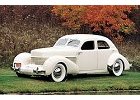 |
 |
1937 - 1938
The last of the Cords was also the last of the American
front wheel drivers for some 30 years, until the Oldsmobile
Toronado was released. Already known for making front wheel
drive vehicles, this Cord was no different however instead
of using a straight 8 it was powered by a side valve V8.
The car featured retracting headlights and wrap around
grille that sat below a long sleek hood. More>> |
|
|
|
|
 |
|
1966 - 1974
The DAF44 made its debut in 1966, and featured an attractive and larger body to previous iterations. The design was penned by Italian designer Giovanni Michelotti, who was able to take the utalitarian and make it rather more pleasing to the eye. More>> |
 |
 |
|
1967 - 1974
The DAF33 made its debut a year after the 44, effectively replacing the Daffodil when the company decided to drop the flowery name altogther. DAF then had two distinct bodies from which to chose, the "A" body as used for the 33, and the "B" body as used for the 44. More>> |
 |
 |
 |
1967 - 1972
DAF entered two 55´s in the 1968 London-Sydney Marathon, and despite plenty of cars that were not able to complete the arduous trek the two little DAF's accounted for themselves very well, finishing in position 17 and 57. More>> |
|
|
 |
|
1979 - 1985
On bush tracks
the Daihatsu really shined, the relatively large
engine size (in comparison to body size) allowing
the performance to be leisurely, and unlike the Suzuki,
not requiring the driver to continually change cogs
to get the best out of it. The achilles heel when
off-road was found with the standard dampers, they
fading rapidly on corrugated and hard-packed ripple
surfaces, giving the car a pitch and bounce ride.
Many owners chose to replace these dampers with good
quality after market units – a
strategy that quickly solved the problem. More>> |
 |
 |
|
1981 -
The diminutive Charade was the star performer
among petrol-engined vehicles in the 1980 Australian
Total Oil Economy Run, achieving a staggering 5.4
litres per 100 kilometres over the 1600 km course,
which included mountainous conditions and had to
be negotiated at high average speeds that required
some energetic driving, especially by crews of the
smaller cars. More>> |
 |
 |
|
1984 - 1987
These days buying a turbo charged car is par for the course, but in the early 80’s it was a rare thing, and usually associated with a performance vehicle. And that is exactly what the Daihatsu Charade Turbo was – a genuine hot hatch at a bargain basement price. When the Charade hit the showrooms it was asking just A$9195 – and it was almost as quick as the Nissan EXA. More>> |
 |
 |
|
1984 - 1987
When the Daihatsu DeTomaso Turbo Charade first appeared at the Tokyo Motor Show in 1982, there were more than a few chuckles from various motoring journalists and writers - surely this was a "concept only" toy car that would never make it into serious production. More>> |
 |
 |
 |
1984 - 1999
The Rocky went on to enjoy a long 15 year stay, however in the latter years the vehicle was seen as rather primitive. The 2.0 litre petrol engine was phased out in 1989, followed by the non- turbo diesel in 1990. By the mid 1990's the off road virtues of leaf spring suspension were largely forgotten, and the competition had evolved well beyond the solid underpinnings of the Rocky. What was once seen as solid was now perceived as primitive. More>> |
|
|
 |
|
1953 - 1956
Daimler replaced its elderly Consort model with an all
new 'Conquest' model in 1953. The new Conquest had a shorter
overall length and consequently less weight than the old
Consort and was of a more modern design, finally leaving
the pre-war styling cues behind. More>> |
 |
 |
|
1959 - 1968
An unlikely high performer the Daimler Majestic was fitted
with a brand new 4.7 litre hemi-head V8 that gave the
vehicle a top speed of 193 km/h. Quicker than rival Jaguars
and an astonishing 0 to 100 km/h in 9.7 seconds. More>> |
 |
 |
|
1959 - 1968
This striking coupe built on the "104" chassis,
so called because the prototype topped 104mph was made
by Mulliners using a composite alloy/steel construction.
Technically known as the 4 light saloon it became universally
known as the Sportsman Coupe. Performance easily exceeded
the 104 mph due to lighter weight and superior aerodynamics.
Daimlers records, never complete at the best of times
show app 69 cars built. More>> |
 |
 |
|
1959 - 1964
The SP250 was designed to appeal to export markets
- most particularly the USA - but never sold in the
hoped-for quantities, nor was it ever profitable to
its makers. Daimler, in fact, were taken over by Jaguar
in 1960, who persevered with the SP250, eventually
developing two improved versions of it, all with the
same styling. More>> |
 |
 |
|
1962 - 1969
Think of a V8 Daimler from the early 1960s and you will think of the SP250 - and why not, it was a brilliant car. But there was another V8 Daimler that came in saloon form, and was very nearly the equal. The 2.6 litre V8 was Daimler's sole representative in the medium price, luxury car field, but it offered performance equalled by only a few. More>> |
 |
 |
 |
1979 - 1987
Introduced in March 1979, the Series III versions
of the Jaguar/ Daimler range represented a successful
attempt to broaden the appeal of the vehicle with a
number of important modifications which, most notably,
modernized its appearance. More>> |
|
|
 |
|
1964 - 1967
The ' Pininfarina' designed P410 Bluebird replaced the
English inspired design of the 310/311/312 series, and
usered in Datsun's use of unitary construction of the
body, rather than a separate chassis. More>> |
 |
 |
|
1964 - 1967
The 'Pininfarina' designed P410 Bluebird replaced the
English inspired design of the 310/311/312 series, and
usered in Datsun's use of unitary construction of the
body, rather than a separate chassis. More>> |
 |
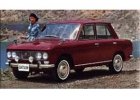 |
|
1964 - 1967
The ' Pininfarina' designed P410 Bluebird replaced the
English inspired design of the 310/311/312 series, and
usered in Datsun's use of unitary construction of the
body, rather than a separate chassis. More>> |
 |
 |
|
1964 - 1967
The ' Pininfarina' designed P410 Bluebird replaced the
English inspired design of the 310/311/312 series, and
usered in Datsun's use of unitary construction of the
body, rather than a separate chassis. More>> |
 |
 |
|
1964 - 1967
The ' Pininfarina' designed P410 Bluebird replaced the
English inspired design of the 310/311/312 series, and
usered in Datsun's use of unitary construction of the
body, rather than a separate chassis. More>> |
 |
 |
|
1965 - 1970
The lack of handling compared to its rivals resulted
in Datsun not having the sales success they had hoped
for - and needing to design an entirely new type of car.
Enter the 240Z and the title of 'World's best selling
sports car'. More>> |
 |
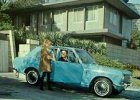 |
|
1967 - 1970
Released in 1967, the Datsun 1000 would quickly become one of the world's most popular small cars, and in just 2 short years Datsun had managed to manufacture and sell over half-a-million of them. More>> |
 |
 |
|
1967 - 1972
When the Datsun 1600 hit Australian dealerships, the car was nothing short of a revelation. Sure, there was competition, but to come anywhere near the potential you needed to fork out around A$3000. You could shop around, and get near the quality for $2500 but you would have been peeing the proverbial against the wall. More>> |
 |
 |
|
1967 - 1972
From 1967 to 1972 there was a car that won the respect
of nearly everyone that drove it. Perhaps with less showroom
appeal than the competition, the Datsun 1600 quickly
etched itself into the psyche of many young Australians
as arguably the first true "Performance 4". More>> |
 |
 |
|
1969 - 1974
Early in 1969 Datsun was to release their "family six" alternative to the big Aussie sedans of the day, the handsome "Big Datsun Six". But Australia was one of some fifty-seven countries where the all new car was unveiled, it truly being a world car. More>> |
 |
 |
|
1969 - 1975
Building street cred with such vehicles as the Honda S800
and Toyota 2000GT, Japan was starting to emerge as a legitimate
sports car maker. The challenge for the Japanese was to
break into the lucrative US market. More>> |
 |
 |
|
1970 - 1973
The Datsun 1200 was the second generation Sunny in Japan.
This new Sunny sported MacPherson strut front suspension and the A series engine had grown to 1171cc. More>> |
 |
 |
|
1973 - 1977
Never a glamorous car in its hey day, the perennial 120Y
can still be seen on the highways of today and, due to
its poor road manners is not particularly collectable.
But, as with all cars that have been out of production
for over 20 years, they are becoming more scarce and an
extremely good condition vehicle could just make a good
buying decision. More>> |
 |
 |
|
1973- 1977
Both the 180B and 200B models were extremely popular with
Australian motorists, although it is rare to see one on
the roads today. The time is fast approaching when 70's
nostalgia buffs will lust for a good clean example, only
to find there are none. More>> |
 |
 |
|
1973- 1977
The 180 B SSS hardtop was a punchy, willing performer, but the main emphasis was on luxury and exclusivity. Unlike the 180B sedan, it was fully imported from Japan and the 45 per cent tariff burden precluded any chance of a saturation sales campaign. Notwithstanding, for 1973 its basic, manual-transmission price of A$3395 assured a competitive footing in the small prestige coupe market. More>> |
 |
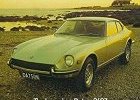 |
|
1974 - 1978
Despite the increase
in engine capacity, the new "Z" was actually slightly
slower, and less sporting, than its predecessor. While
it remained on sale to global markets for four years,
in the US (which was its principle market) it was replaced
by the lustier 280Z in less than a year. More>> |
 |
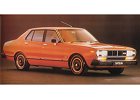 |
|
1977 - 1981
The Datsun 180B was replaced in October of 1977 with the
200B. Continuing with the Japanese styling the sedan was
released with the fully imported as a sedan, a coupe that
retained the SSS badge and a wagon. More>> |
 |
 |
|
1977 - 1981
Launched outside of Japan in 1979, the Datsun Skyline was really a technically sophisticated coupe update of the old 240Z GT fastback, which was subsequently replaced by the 260Z and then the 280ZX. More>> |
 |
 |
|
1978 - 1982
In Australia we knew it as the Stanza, but in other markets it was variously known as the "Violet", "Auster", "510", and "160J". Available locally in either GL or better equipped GX form, the Stanza was a revival of the shape and specification of the original highly successful Datsun 1600, which to our mind was the first really good Japanese car to be marketed overseas. More>> |
 |
 |
|
1978 - 1983
It is always hard to follow up a brilliant first model car with subsequent iterations. Manufacturers really have no choice - they have to keep their product fresh in an attempt to lure buyers into their showrooms. More>> |
 |
 |
|
1979 - 1982
The Datsun Cherry first appearing in 1970, then weighing 1477 Ib (670 kg). It was 11.84 ft (3.61 metres) long, and was one of the first Japanese front-drive cars. Over the years the Cherry ripened in size and weight, so much so that the third generation model, released in 1979, weighed 1885-1940 Ib (855-880 kg) in running order, and was 12.76 ft (3.89 metres) long. More>> |
 |
 |
|
1979 - 1986
The fully imported Sunny was introduced in early
1979 as a successor to the outgoing 120Y model,
and to supplement the locally built Stanza which
had failed to produce the expected sales figures
for Nissan. But following in the 120Y’s footsteps
would certainly be a hard act to follow, particularly
when the 120Y’s two major attributes were
that it was both low priced an inexpensive to run. More>> |
 |
 |
 |
1981 - 1986
In May 1981 the 200B was replaced with the Bluebird. The
styling of the Bluebird moved towards a more European
look with lower waistlines and simple lines. Retaining
much of the running gear from the 200B, with a front engine,
rear drive layout. More>> |
|
|
 |
|
1966 - 1974
Historically speaking, the mid 1960s could well have been the apogee of the type of small company which took 'off-the-shelf' items from standard cars and arrived at a vehicle specification which proved to be simple to construct yet which endowed the finished motor car with reserves of power, road-holding and handling far in excess of the rather prosaic motor cars produced by the big companies. A typical example of this kind of approach was in the products of Davrian Developments. More>> |
|
|
 |
 |
1911
DeLorean's have a fibreglass body tub to which the
stainless steel panels are bolted and a mild steel
chassis which has an resin coating to protect against
rust. More>> |
|
|
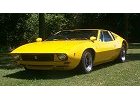 |
|
1966 - 1971
While looking every bit the Italian exotic, the power
was to come from the bargain Ford 289 ci V8 - but of course
it was the Shelby-tuned version that had already appeared
in AC Cobra, Ford GT-40 and Mustang GT-350. More>> |
 |
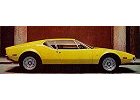 |
|
1970 - 1990
Powered by a Ford "Cleveland" 351 (5.7 litre) V8, this
Italian-built exotic was able to offer supercar performance
at a bargain price. Dubbed "The Poor Man's Lamborghini",
the close relationship between Ford and De Tomaso saw
Ford fully back the Pantera project in order to boost
its image. More>> |
 |
 |
 |
1972 - 1984
The Deauville was designed to deliver high-performance
luxury transportation for four, and featured a flowing-yet-muscular
design, handsome from any angle. More>> |
 |
 |
 |
1972 - 1989
When the Longchamps was released, Alejandro de Tomaso had been designing, racing and building cars for 20 years. By that time Ford had completely bought out his interest in Ghia, Vignale and De Tomaso Automobili, so there was plenty of speculation as to what he would do with the superb looking Longchamp prototype. More>> |
|
|
 |
 |
1981 - 1983
DeLorean's have a fibreglass body tub to which the
stainless steel panels are bolted and a mild steel
chassis which has an resin coating to protect against
rust. More>> |
|
|
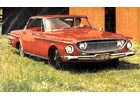 |
|
1960- 1973
The Phoenix was introduced in May 1960 as an Australian assembled version of the American Dodge Dart, positioned above the locally developed Chrysler Royal. It was offered only as a four door sedan and only with a 318 ci V8 engine. The Dart represented a then new American category between compacts and full-sized sedans - and it appealed to Australian motorists - who wanted a large but not gigantic luxury car with loads of power. More>> |
 |
 |
|
1966 - 1969
Production of the Dodge Charger commenced in 1966, the
car fitted with the 383ci, 325-horsepower V-8. Styling
was based on the "fastback" roofline, featuring
hidden headlights and four bucket seats. More>> |
 |
 |
|
1970 - 1974
While the Charger is the muscle car most highly regarded
today, the Challenger remains a close runner up and, like
its predecessor, was available as a R/T model in both
2 door coupe and convertible configurations. As with all
such American cars, the 'base' engine was an in-line six-cylinder
unit, but the most exciting of the V8's, and the one which
most people bought, was the 426ci 7 litre 'Hemi'. More>> |
 |
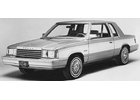 |
|
1980 - 1989
The Chrysler Corporation, deep in financial trouble by 1980, announced its front-drive 'K Cars', seemingly late in the day for the small US car race, but there was little doubt the corporation was depending very much on the new downsized models to get back in the black. More>> |
 |
 |
 |
1992 - 2002
From the late 70s to early 80s, Chrysler was troubled
by recession and bankruptcy. New president Lee Iacocca
introduced a radical cost reduction regime, reducing models
and reducing platforms - eventually to only one (the boring
front-drive K-car platform). These changes helped Chrysler
return to profitability, but the model lineup was unadventurous
and hardly inspired car enthusiasts. More>> |
|
|
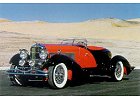 |
 |
1929 - 1937
After buying out the Duesenberg operation, Cord also enlisted the help of Harry Miller to help design the Model J, the brief being that this new car would be the best in the world, no small feat! More>>
|
 |
 |
|
1935
The development of the Mormon Meteor came about because of one man, Ab Jenkins.
Known at the time as the "Speed King", Jenkins enlisted the help of the Duesenberg brothers to help develop a car capable of setting new speed records. More>> |
|
|
 |
 |
1957 - 1959
The 1957 Edsel has been rather unceremoniously referred
to as a marketing blunder. Timing was probably the major
reason for its reputation, as car buyers at the time were
looking more for smaller vehicles and the Edsel became
a victim of its own massive hype. Ford pitched this car
at the lower medium market sector and forecast sales to
be in the 200,000 region. More>> |
|
|
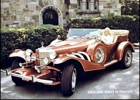 |
 |
1963 - 1990
Vintage and veteran cars began to become popular in the 1950s and 1960s, collectors and scouring the world looking for un-discovered cars. Soon most of the available cars were in the hands of collectors and prices began to escalate dramatically, so much so that the less wealthy enthusiast was unable to even to contemplate buying a vintage car. Many owners simply put their cars away as investments in just the same way as paintings and other antiques. More>> |
|
|
 |
 |
1967 - 1976
Introduced in late 1968, the TX cars offer the individuality of the specialist sports car with the easy servicing and maintenance of the mass-produced sports car. The Fairthorpes-based on a backbone chassis, are powered by 1500 or 2000cc Triumph engines and designated the TX1500 and TX2000 respectively. More>> |
|
|
 |
|
1954 - 1955
Long on performance but short on tolerance, the Monza was as a potent as it was beautiful. It became known as a mean machine, with a killer-car reputation. At the 1955 Le Mans it proved that it was no ordinary car as it hurled the 750 Monza Ferrari around the Sarthe circuit. More>> |
 |
 |
|
1956 - 1961
The phrase "Testa Rossa" means "red head." The most well known, the 250TR, was produced from 1957 to 1958; only 2 factory cars and 19 customer cars were built. After the 250 GTO, the 250 Testa Rossa is the second most valuable Ferrari model A 1957 250 TR sold in 2011 for $16,400,000, a new world record auction price for a car. More>> |
 |
 |
|
1962 - 1964
GTO - three letters signifying a peak in a famous, possibly the most famous, autohistory. 12 cylinders, 3 litres, 280bhp, 175mph - bald figures, without gazing at the sleek aluminium coachwork. More>> |
 |
 |
|
1964 - 1968
The Ferrari road car really made its presence felt with
the release of the 275 GTB. For the first time Ferrari
had produced a car with sophisticated suspension ensuring
that a car as quick as this could be driven in comfort. More>> |
 |
 |
|
1967 - 1974
Designated "206GT", in which 20 means 2.0 litres and
6 means six cylinders, the engine was actually built
by Fiat and shared with Fiat Dino, not because it would
be cheaper, but because Ferrari needed the additional
volume to qualify for FIA's production requirement for
racing engines. More>> |
 |
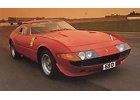 |
|
1968 - 1973
The Ferrari Daytona 365 GTB/4 was perceived proudly by
the manufacturer as its last attempt at superfast front-engined
Grand Tourers. More>> |
 |
 |
|
1973 - 1980
When introduced in 1973 (officially unveiled at the Paris Motor Show) the Ferrari Dino 308 GT4 was much more than a big brother to the familiar, beautiful little 246GT. It was almost an entirely new car, save for the steering wheel and alloy road wheels. More>> |
 |
 |
|
1975 - 1985
There was something special about the 308 GTB. It represented the then latest Ferrari's Dinos and it had its suspension tune polished by no less a test driver than world champion Niki Lauda. Sceptics suggested that Lauda's name was hung on all the Ferraris, but it wasn't so. At Fiorano, Ferrari's own test track outside Modena in north eastern Italy, Lauda spent a lot of time roaring around the track being monitored by TV cameras all the way. More>> |
 |
 |
|
1976 - 1989
An automatic Ferrari - the idea seemed almost like sacrilege when the 400 was introduced in 1978. Somehow it seemed totally out of keeping with the Italian marque's traditions, as was the fact that the automatic transmission was from the American giant General Motors. More>> |
 |
 |
|
1977 - 1985
Noise is both difficult and expensive to engineer out of a car – it is inherent in the engine and gearbox. But when a manufacturer creates the perfect balance of mechanical noise, it can only be enhanced when such a car is available sans roof. Even with the wind charging over the top of the windscreen of the Ferrari 308 GTS at high speed every sound was to be enjoyed, savoured. More>> |
 |
 |
|
1994 - 1999
The Ferrari F355 was the first new model under the new
vision Luca di Montezemolo . Individual butterfly valves for each cylinder improved throttle response, resulting
in a record-breaking 108.7 hp/litre specific output. In
total, there are 380 horses running under the F355's bonet
at 8,250 rpm. More>> |
 |
 |
|
2003 -
While Ferrari increased the size of the already awesome
V12 engine to 5748cc, it is the Formula 1 derived transmission for which the 575M Maranello is most famous. More>> |
 |
 |
 |
2003 -
The F60 develops a blistering 650bhp, has seven gears
and punches to 100 km/h from a standstill in 3.2sec,
just 0.1 seconds slower than the Ferrari F2002 of Michael
Schumacher! More>> |
|
|
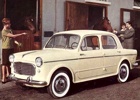 |
 |
1955 - 1960
The Fiat 1100 is built on very practical lines. It was well equipped, for a low-priced car, with such refinements as a really good heating and ventilating system, screen washers, self-parking wipers, and lights in engine and luggage compartments. More>> |
 |
 |
 |
1955 - 1977
The Fiat 600 series was part of the postwar Italian 'Economic
Miracle' and was produced in relatively large numbers
from its debut at the Geneva Motorshow of 1955. More>> |
 |
 |
|
1957 - 1977
This tiny egg-shaped car is now seen in somewhat cult
status with its miniature size appealing to millions.
It was introduced in 1957 as a type of transportation
for the masses and by the end of production some four
million were built. More>> |
 |
 |
|
1963 - 1967
The 1500 Cabriolet was an enjoyable car to drive. It was aimed more at the touring sports car buyer than at the race driver, and it performed and handled almost as well as more powerful sports cars in its price class. More important to most buyers of two-seater roadsters was the fact that the Fiat was very comfortable, extremely smooth and quiet, and had more usable luggage space than almost any other car in its class. More>> |
 |
 |
|
1963 - 1972
The Abarth was also no noisier than the 500, despite the two very large diameter tail pipes of the special exhaust system. Best of all, the Abarth conversion made an already good car "great", just as reliable, incredibly nimble, more agile and with the Italian flair for knowing what a driver enjoys. In a word - Brilliant. More>> |
 |
 |
|
1965 - 1972
Like any entirely new model, it was only natural that the Fiat 500 should mature. Thankfully Fiat resisted the temptation to enlarge the car, nor change the character - but maybe that was because it had become so damn popular. Just as collectable as the original Fiat 500, just as sexy, and one of the only micro cars that a bloke will look "seriously cool" driving. And while we can't give it a 5 star collectability rating, it deserves the 5 star cool rating. More>> |
 |
 |
 |
1965 - 1971
The 850 sportscar arrived just a year after the saloon
model in 1965 as a neat fast-back four seater. Despite
near useless rear seats the 850 was hugely popular. More>> |
 |
 |
|
1966 - 1973
In 1969 the Fiat Dino had its V6 engine increased from two to 2.4 litres, and its cylinder block was cast in iron instead of light-alloy. The new block was standardised to simplify manufacture (the old light-alloy block had separate cylinder liners which had to be inserted) and to ensure against water leaks as the engine aged. More>> |
 |
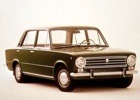 |
|
1966 - 1974
At first glance the 124 could be considered unremarkable; it was boxy and had un- aerodynamic lines, being obviously based on the earlier 1100 Saloon, but those lines were also functional and were capable of containing five adults in reasonable comfort. An wagon version was announced at the same time. More>> |
 |
 |
|
1966 - 1985
Manufactured for nearly 20 years shows why the Spider
has been one of the most successful Italian sportscars
ever produced. More>> |
 |
 |
|
1967 - 1972
In 1968 the Fiat 125, with a fully imported price of A$2898, was arguably one of the best value cars in Australia, apart from the Big Three compact models and the eternal Peugeot 404. The 124 sold quite well in Australia too, but was deemed a little pricey for its size and weight by some, although they probably never actually drove it. More>> |
 |
 |
|
1971 - 1977
Despite being unpopular this car was actually very finely
engineered with perfect proportions and superb elegance
with ample room for four passengers. More>> |
 |
 |
|
1972 - 1982
Unfortunately many believed the Fiat 132 was a somewhat backward step, particularly given that the car, as a replacement for the Fiat 125, retained both rear-wheel-drive and a live back-axle. The cars lower line met with a mixed reception, some people considering that the 132's shape was " Japanese-inspired". More>> |
 |
 |
|
1972 - 1982
Fiat X1/9 was the earliest lightweight mid-engined sports
car made - the biggest challenge at the time being how
to locate all the mechans without compromising useable
space. More>> |
 |
 |
|
1972 - 1993
The Fiat 126, successor to the 500, represented a modernisation and mild revision of the old Fiat 500 formula. The result was a low-priced car with a rather more boxy outward appearance, but still possessing all the desirable qualities of the earlier Fiat 500. More>> |
 |
 |
|
1974 - 1984
Motoring journalists at the time noted that the 131 Mirafiori's engine was "...more lusty than refined", churning out the power eagerly. It was not a great car, but it was well accomplished and offered a better than reasonable drive for the money. More>> |
 |
 |
|
1974 - 1980
The Abarth acted as a replacement for the valiant 123 Spider as Fiat's warhorse for road events. The main modifications included: two-litre engine with twin overhead camshafts, four valves per cylinder, 140-147 bhp DIN (104 - 110 kW), five speed gearbox, independent rear suspension, four wheel disc brakes, extra wide wheelrims and aerodynamic stabilisers on the chunky bodywork. More>> |
 |
 |
|
1978 - 1988
It would be difficult to determine whether it was the
Alfasud or the Fiat Strada that won the “race to
rust” championship, but both were worthy contenders
and near the top of their field in their ability to self
destruct. More>> |
 |
 |
|
1980 - 1986
The small front-drive Fiat Panda was so named, we assume, because of its stripey look. Most people were no doubt thankful that the Fiat Group decided to abandon type-numbering for their cars with the introduction of the Panda, and more would fall in love with the cars practical and clever design, which due to the use of many already-in-production components, minimised its manufaccturing problems. More>> |
 |
 |
|
1981 - 1986
The Italian flair for high performance luxury cars was never more evident than in 1981 when Fiat released the second major facelift of the 132 model, the wonderful Argenta.
At the time it was Fiat's Australian flagship, and for good reason. The new model was bristling with modern technology, and was brimming with high equipment levels. More>> |
 |
 |
|
1985 - 1996
The Croma received a significant facelift in 1991 with new front design including changes to the lights, bumpers grille and sheet-metal changes to wings and bonnet. Also in 1991 the direct injected diesel engine was equipped with variable geometry turbocharger. The original Fiat Croma was a much loved favourite of the used-car bargain-hunter in Europe, but was strangely berated by everyone else (including Fiat dealers). More>> |
|
|
 |
|
1969 - 1972
The Ford Capri was first introduced into Australia
in May, 1969 and was initially available only as a
1600 Deluxe or a 1600 GT. In February, 1970, the 1600
GT was replaced by the more powerful V6 3000GT, although
a 1600 XL model was introduced to fill the void left
by the 1600 GTs demise. More>> |
 |
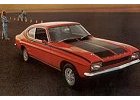 |
|
1969 - 1970
Capri 1600 GT - "The car that reshapes your life" was
how the official Ford brochure described the Capri! .....you
slip behind the wheel and something happens. The world
suddenly looks a little better to you. And you relax
back in your snug bucket seat knowing that your Capri
makes you look a little better to the world, too. More>> |
 |
 |
|
1970 - 1972
The Capri 3000GT was released into Australia in 25th February, 1970, and then only as a 4-speed manual. Although a little pricey, it was an immediate success, selling 1,502 units to the end of 1970. The 3-speed Borg Warner 35 automatic version was released later in the year and sold some 167 units before years end. More>> |
 |
 |
|
1970 - 1973
The name ‘Perana’ coined by Basil Green Motors, of Johannesburg for its engine transplant conversions on popular Ford models has come to be synonymous with “performance",
both on road and track. More>> |
 |
 |
|
1970 - 1974
Mike May (Europe's first Formula Junior champion and a winning Spyder RS racer) was a German-domiciled Swiss turbo specialist – and his V6 2.6 turbo kit was keyed to a specific engine/gearing combination, as designed on his own engine dyno. These were then sold as after-sales kits through selected Ford dealers. More>> |
 |
 |
|
1970 - 1974
The one millionth Ford Capri was an RS2600, and was built in August 1973. This Capri was never officially sold in the UK, although a few have now been imported. More>> |
 |
 |
|
1973 - 1974
In November 1973, at Ford's Halewood plant in the UK, production of the RS3100 began. Production of the RS3100 actually overlapped with the Capri MKII and was intermittent at best. More>> |
 |
 |
|
1974 - 1978
In February 1974, the Capri Mk2 was introduced. After 1.2 million cars sold, and with the 1973 oil crisis, Ford chose to make the new car more suited to everyday driving, with a shorter bonnet, larger cabin and the adoption of a hatchback rear door. More>> |
 |
 |
|
1974 - 1978
One of the lesser known iterations of the iconic Capri was the Ferguson Formula. Only subtle clues marked this Capri as different from the thousands of other Cologne-built coupes. A skid plate neatly tucked under the front end and a small bulge to the right of the transmission hump hinted at the extensive modifications within. More>> |
 |
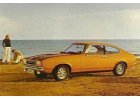 |
|
1974 - 1978
Today there is a growing allegiance of Capri aficionados, and one of the most keenly sought is the Capri Ghia V6 3 Litre. At launch the Capri II 3000 GT was considered to be one of the best value-for-money performance cars on the market, although the replacement of the "GXL" and "E" iterations with the Ghia moniker did not present quite the value you would have expected. More>> |
 |
 |
 |
1978 - 1986
The Capri MKIII, officially referred to as "Project Carla",
was little more than an update of the MKII. Production
began in April 1977 with the first cars being available
in March 1978, but failed to halt a terminal decline
in sales. However, this model was used in the TV series
The Professionals, which was credited with keeping interest
in the car in the UK. More>> |
|
|
 |
|
1962 - 1966
In the late 1950’s it was apparent that the aging Anglia 105E would no longer be able to maintain it’s market share, and an all new car would be needed to help Ford compete against the likes of the Vauxhall Victor and Hillman Minx. More>> |
 |
 |
|
1962 - 1966
The Estate Wagon version of the Consul-Cortina was very popular at release - and for good reason - it was an exceptionally good and well packaged car. It was economical too, with an overall fuel consumption figure of around 20 mpg, rising to around 25 on the open highway, and around 18 mpg in city traffic. More>> |
 |
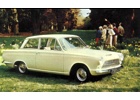 |
|
1963 - 1966
The Consul-Cortina GT quickly garnered a stellar reputation. There were factory teams and privately owned cars that were all doing well in saloon races in the UK – and this inevitably led to success on the European rally circuit. Ford felt the car was so good that they decided to export it to the USA. More>> |
 |
 |
|
1963 - 1970
When Colin Chapman and Ford collaborated to develop a
race and rally winner - the end result was the Lotus
Cortina. From Ford came the basic two door Cortina shell
and front suspension, where Lotus installed its own
105 bhp twin-cam engine, close ratio 4-speed gearbox
and rear suspension. More>> |
 |
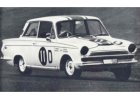 |
|
1965
A car seldom remembered these days, except perhaps for the Cortina aficionados, is the wonderful Cortina GT500. The brainchild of Harry Firth, the GT500 was manufactured by Ford Australia to satisfy homologation rules to allow it to race in the Armstrong 500. More>> |
 |
 |
|
1966 - 1972
The second incarnation of the Cortina was designed by Roy Haynes, and launched on the 18th October 1966, four years after the original. Although the launch was accompanied by the slogan "New Cortina is more Cortina", the car, at 168 inches (430 cm) in length, was fractionally shorter than before. More>> |
 |
 |
|
1966 - 1972
In autumn 1966 the Mk.II Cortina GT was released. The
body was, of course, completely restyled, along with the
entire Cortina lineup, but initially the car was still
using most of the Mk.I GT drivetrain. More>> |
 |
 |
|
1966 - 1970
With the Mark 2 Cortina, Ford would continue their association with Lotus. The new model Cortina retained much of its dynamic performance too, yet it was a much more refined car than its predecessor. More>> |
 |
 |
|
1967 - 1970
One of the best loved versions of the Cortina appeared in 1967, the 1600E. The 1600E offered a blend of sporting style and luxury with its comprehensive specification. Standard equipment included sports suspension, Rostyle 5.5" J rim wheels, spot lamps, vinyl roof and metallic paint. More>> |
 |
 |
|
1967 - 1970
The "Big Engine - Light Chassis" formula had been tried before, and Uren knew that significant chassis modification would be required if the V6 iteration was to be anything more than simply a quick straight-line performer. More>> |
 |
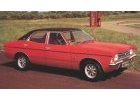 |
|
1970 - 1974
There are perhaps 2 main reasons for the downturn in the
popularity of the Cortina, for starters the Japanese were
making big inroads at the time, and unfortunately the
Cortina was quickly gaining a bad reputation for poor
quality and reliability. More>> |
 |
 |
|
1974 - 1977
Most commentators of the day knew that the objective
of the TD release was to remedy the misdemeanours of
the previous model, but many lamented the continued lack
of quality and poor road manners. Brake fade, steering
with a mind of its own on unmade surfaces and, in the
case of the 4 cylinder, completely underwhelming performance
became the hallmarks of the TD. More>> |
 |
 |
 |
1977 - 1979
When the TE body style first appeared it almost created
a sensation; it was the first of the European-look medium
cars. It looked impressive and solid, and gave an air
of rugged dependability. Buyers were familiar with the
engines and their reliability had never been in doubt. More>> |
 |
 |
 |
1980 - 1983
The rest of the world knew it as the Cortina Mark V, but here in Australia we knew it as the TF. Released in 1980, there were 4 variants, from the L, GL and Ghia variants and with an optional S-Pack also available (There was over $1000 of options on the S Pack list, but Ford only asked for an extra $583). More>> |
 |
 |
 |
1983 - 1987
When the Telstar was launched Ford claimed that the Cortina replacement was very nearly sourced from the UK, and the brilliant Sierra. Instead we got Toyo Kogyo’s 626 - partly because of Ford’s existing relationship with the Mazda sourced Laser/Meteor range, and partly because adapting the Sierra for Australian compliance and roads would have been a little more expensive. More>> |
|
|
 |
|
1968 - 1975
The rear-wheel-drive Mk1 Escort came as an 1100 or
1300 and in both 2 or 4 door sedan, and in some markets
also as a two-door estate, or in sporty form as a GT
or Twin Cam. All the Escort engines were based on a
new Kent crossflow unit, which proved very suitable
for tuning and modification. More>> |
 |
 |
|
1968 - 1970
While other sporting Ford's could be called sedans capable of being raced or rallied, the Twin-Cam Escort was unashamedly a racing sedan de-tuned for road use. In production form, with quantity sales needed to justify its homologaation as a Touring Car, the Twin-Cam gave the customer exactly what they expected More>> |
 |
 |
|
1970 - 1974
The successful Escort Twin Cam was replaced by the more
powerful Escort in 1968, the RS1600. The letters "RS"
stood for "Rally Sport", a brand name invented by Ford
and one that continued for many years. Quickly the term
"RS" came to be known for high performance
Ford's. More>> |
 |
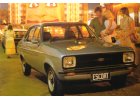 |
|
1975 - 1981
The first major styling revision occurred in 1975, giving
the Escort a crisp lean flowing style that was well in
proportion and arguably a cut above the small car offerings
emanating from Japan. The interior was always functional,
but was somewhat Spartan in comparison to the Japanese
cars – but on the plus side the seats were extremely
comfortable even on very long drives. More>> |
 |
 |
|
1975 - 1981
For the over ten years that the Ford Escorts was
on the Australian market, it underwent many and
varied model improvements, including different
engines and changes to its image. Starting
off with the 1.1 litre Kent, they had six engines
in the next eight years, and by 1981 the 1.6 litre
was offered on the L Sedan, with the option of
the 2.01itre in the GL, and the 2.0 litre only
in the top-of-the-line Ghia. More>> |
 |
 |
|
1975 - 1977
Based on the Mk II Escort the RS1800 closely followed
the original RS1600 concept. The RS1800 used a 1835cc
version of the Cosworth BDA engine and produced 115bhp.
Many special features were standard on the RS1800 including
stiffened suspension, wide wheels and an uprated gearbox. More>> |
 |
 |
|
1976 - 1980
The RS2000 used a 110bhp Pinto engine which meant the
car could reach over 110mph. Cosmetically, the biggest
difference to the previous model was in the uniquely
angled GRP nose panel which contained four headlamps. More>> |
 |
 |
|
1980 - 1986
The long-awaited 'Erika' was an expensive event for the Ford Motor Company, and revealed itself to be the Company's second front-drive model, but with an even more upmarket specification than the Fiesta which had brought them into the front-drive/transverse engine sector. More>> |
 |
 |
|
1981- 1984
The concept of the RS 1600i Escort was defined in the prototype shown almost at the 1980 Frankfurt car show, and the definitive version of the car went on to be produced in the number of 5000 necessary for homologation in Group A. More>> |
 |
 |
|
1986 - 1990
The Escort Mark III received a facelift in early 1986. Codenamed within Ford as "Erika–86", it was instantly recognisable as an updated version of the previous model, with a smooth style nose and the "straked" rear lamp clusters smoothed over. More>> |
 |
 |
|
1981 - 1983
Ford's long serving rear-wheel-drive Escort was due for
replacement both here in Australia and in Europe. Through
various model updates and styling changes the Escort
was able to stay in service far longer than its mechanical
specifications suggested it should, although the smallest
of the Ford’s always had a huge allegiance of fans,
and we are sure many will take us to task on making this
claim. More>> |
 |
 |
 |
1983 - 1985
The Laser/Meteor range was a pleasantly straight forward product which had established itself as a number one in the small car market by the end of 1982, with sales in excess of 50,000. Meteor backed this performance right from its introduction in March 1983. More>> |
|
|
 |
|
1967 - 1968
Through the years, the various models of Fairlane followed
the Falcon onto the market, changing when the Falcon
did, and using their own unique two letter code to distinguish
the cars. The ZA closely followed the XR Falcon onto
the market, and used many of the smaller car’s
components, not just drivetrain and suspension, but even
the doors were the same. More>> |
 |
 |
|
1968 - 1969
Minor revisons to the front and rear styling marked the
ZB. The tail lamp treatment was altered, retaining the
large square Galaxie style lampdivided into 2 parts by
a rectangular indicator lens, replacing the central circular
one. The optional V8 changed too, increasing in size form
289ci to 302ci. The range retained its two trim levels,
Custom and upscale 500. More>> |
 |
 |
|
1969 - 1970
The ZC marked the first noticeable change to the Fairlane,
swapping from horizontal to vertical headlamp orientation.
For long a U.S. styling device, it was unusual that Ford
in Australia would go to this design after it had been
abandoned across the Pacific. By necessity it did raise
the front wings to accommodate the lights and this gave
the ZC a larger and more imposing look. More>> |
 |
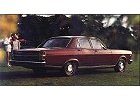 |
|
1970 - 1972
There were minor styling changes to the ZD, the grille
became bolder and the tail lamps were changed and separated
by a broad trim panel. While the car had not altered much
in style, it retained its grip on the market place, despite
the appearance of locally produced rivals. More>> |
 |
 |
|
1972 - 1973
The ZF marked a complete new re-styling of the Fairlane,
now wholly Australian designed and produced. It is easy
to see that the design was influenced by the new XA Falcon,
retaining, as the previous cars had done, the basic central
structure including the doors, and bulking out either
end. More>> |
 |
 |
|
1972 - 1973
The ZG marked yet another gentle revision of its predecessor
with a bolder, four horizontal bar grille and tail lamp
tweaks. More>> |
 |
 |
|
1976 - 1979
The ZH was Ford's answer to all the citiscism of its predecessors.
While again retaining the central structure of the XC
Falcon, the designers put much extra bulk into the car,
not only giving it a big car look, but also actually lengthening
it as well. More>> |
 |
 |
|
1979 - 1982
The new Fairlane was smaller and lighter than its predecessor as it
shared its floorpan with the Falcon Wagon. Fortunately though the engineers
were able to maximise interior space so that, inside the cabin at least,
the new model was actually bigger than before. More>> |
 |
 |
|
1982 - 1984
Released in March 1982, visually there was little to differentiate
the new model Fairlane from its predecessor, the ZJ. It was naturally
under the skin where most changes occured, the most important being the
improvement to the 4.1 litre six cylinder engine. More>> |
 |
 |
|
1973 - 1976
The Landau was a coupe version of the LTD, based on the
Falcon hardtop, and was Ford Australia's first Aussie
designed luxury two-door coupe. It retained the frontal
treatment of the full size LTD with its disappearing head
lamps and the full width tail lamps. More>> |
 |
 |
|
1973 - 1976
The LTD was launched as Ford's new flagship model, replacing
versions of the imported U.S. Galaxie. It marked a bold
initiative by Ford, determined to capture the local top
of the range market and become the de facto limousine
of choice for government and business. More>> |
 |
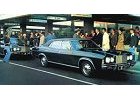 |
 |
1976 - 1979
Once more it is apparent that the FB, or P6, LTD is based
upon the equivalent Fairlane, but with an impressive frontal
treatment. With its Rolls Royce style grille, and the
large circular head lamps set in a bluff vertical front
panel, the P6 presented a bold and dominating presence
to the road. Also impressive was the even greater wheelbase,
and a list of standard features that wanted for nothing. More>> |
 |
 |
 |
1979 - 1982
The introduction of the ZJ Fairlane and the FC LTD luxury Fords, based on the XD Falcon, demonstrated just how much thought Broadmeadows had put into its program for the 1980s. So many of the parts that made up XD, ZJ and FC were totally interchangeable, and were manufactured on the same machine ensuring savings in tooling and manufacture. While the LTD had 75% of its parts in common with the XD Falcon, the remaining 25% were specifically ZJ/FC. More>> |
|
|
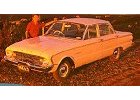 |
|
1960 - 1962
The XK was the first Falcon released, and was based very
much on the equivalent U.S. Falcon, copying its styling
almost without change. More>> |
 |
 |
|
1962 - 1964
The tail lamps were revised and the rear roof line was
changed to reflect Ford's Thunderbird style theme. More>> |
 |
 |
|
1964 - 1965
The XM was another styling facelift of the original XK,
with a much heavier and impressive front grille. More>> |
 |
 |
|
1965 - 1966
The XP was the last facelift of the original Falcon and
featured an aggressive, squared off look to the front
end and more solid styling overall. More>> |
 |
 |
|
1966 - 1968
The new XR range again followed a US design, hoping to
capitalise on the phenomenal success of the Mustang. More>> |
 |
 |
|
1968 - 1969
The XT Falcon was a mild restyle of the previous model,
with a barely altered grille, but distinctive new tail
lamps, circular lamps still, but cut by large rectangular
indicator lenses. More>> |
 |
 |
|
1969 - 1970
The XW represented the first real attempt to more definitely
differentiate the Australian Falcon from the styling of
its U.S. equivalent. More>> |
 |
 |
|
1970 - 1972
The XY marked the apogee of the second generation Falcons,
superior in performance to its competitors, better built,
fitted with a range of locally designed six cylinder engines,
and in GT form, producing the ultimate and fastest Falcon
of them all. More>> |
 |
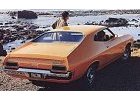 |
|
1972 - 1973
The XA model was the first Falcon completely designed
and built in Australia. More>> |
 |
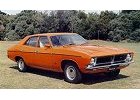 |
|
1973 - 1976
The XB featured a slight restyle of the previous model,
featuring a cleaner but more aggressive front end with
a forward sloping bonnet. More>> |
 |
 |
|
1973 - 1976
The Grand Sport rally pack was itself nothing more than dressing up – even Ford admitted as much. The only practical inclusions in the pack were the complete instrumentation which included tacho, oil, fuel, temperature gauges and voltmeter. More>> |
 |
 |
 |
1976 - 1979
The XC was a further re-style of the third generation
Falcon. The refined look was achieved by reducing the
slope of the grille and introducing large rectangular
headlamps. More>> |
 |
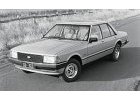 |
|
1979 - 1982
The XD Falcon marked the start of Ford's determined push
to become market leader in Australia, a goal they ultimately
achieved, but one that at the release of the XD beyond
their grasp. More>> |
 |
 |
|
1982 - 1984
The XE celebrated a defining point for Ford Australia
as they finally passed GMH in the sales wars, and with
a product that they least expected, the Falcon. More>> |
 |
 |
|
1984 - 1988
The XF represented the last of the fourth generation cars,
and featured softer, more rounded styling with revsions
to the grille and bumpers, and new tail lamps. More>> |
 |
 |
|
1988 - 1990
Much like the "BA" of 2002, the "EA"
had countless improvements over its predecessors. Most
importantly for Ford was the introduction of new fuel
injected 3.2 and 3.9 litre (SOHC) engines - which were
a great improvement on the harsh and thirsty 3.3 and
4.1 litre pushrod sixes they replaced. More>> |
 |
 |
|
1991 - 1993
The EB facelift hardly altered the apearance of the EA,
however the big news for V8 fans was the re-introduction
of the V8 (available for the first time since 1983). More>> |
 |
 |
|
1993 - 1994
Even though there were over 280 changes made to the EB
to create the ED, Ford's continued development of the
EB had seen so many improvements that the ED was simply
an evolution of an already popular and reliable car. More>> |
 |
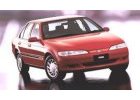 |
 |
1994 - 1996
Undoubtedly the most significant "facelift"
of the "E" series Falcon was the "EF".
With the notable exception of the doors, the remaining
panels were all new, and now the luxury Fairmont and
Fairmont Ghia versions could be distinguished by completely
different frontal treatments. More>> |
|
|
 |
|
1968 - 1968
In 1968 the XR model began the legend that was to be the
GT. This family car muscled out 225HP thanks to the 289
Windsor V8. More>> |
 |
 |
|
1968 - 1969
The XT GT was more refined and faster than its predecessor.
Producing 230hp thanks to a 4.9L 302 Windsor V8, only
1415 of these were built. More>> |
 |
 |
|
1969 - 1970
Ford upped the ante with the XW by fitting the 351 cubic
inch (5.8 litre) Windsor V8 with an output of 290 bhp
(217KW) and 385 ft/lbs of torque. More>> |
 |
 |
|
1970 - 1972
Simply put - it was the world's fastest four-door production
car for many years. More>> |
 |
 |
|
1972 - 1973
The XA GT was the first Australian designed Ford, and
the GT version was a much more refined car than its predecessors
which had been designed more as road going race cars than
true Grand Tourers. More>> |
 |
 |
|
1972 - 1973
The Superbird started life as a one off show special,
designed to attract attention at the Melbourne and Sydney
motorshows. It was such a success however that Ford decided
to release a limited run of Superbirds. More>> |
 |
 |
|
1973 - 1976
The XB ran out the GT line, existing until June, 1976
after which there were no more GT's. More>> |
 |
 |
|
1975 - 1976
Alongside Kevin Bartlett ("KB"), John Goss
won the James Hardie 1000km race at Mount Panorama in
1974 in a very close race, and in August, 1975 Ford released
a run of XB based John Goss Special limited edition hardtops. More>> |
 |
 |
 |
1978 - 1979
When they decided that the XD Falcon would be a four door
model only, Ford found themselves near the end of the
XC production run with 400 unsold hardtop body shells.
To sell them they created the Cobra, and in so doing created
an instant classic. More>> |
|
|
 |
|
1938 - 1959
The Ford Prefect was first introduced in 1938 and at the
time was the first Ford to be designated by a model name.
Its model number was E93A. More>> |
 |
 |
|
1940 - 1967
Developed during the 1930’s as a cheap-and-cheerful
mode of transport following the lack of success of the
more expensive Model A, the original Anglia featured
typically conservative design cue’s with its upright radiator and black paint work, and looked almost identical
to the 4 door Prefect. More>> |
 |
 |
|
|
 |
 |
|
1951 - 1956
Despite outward appearances, both the FJ Holden and Zephyr had a lot in common. Both were powered by small capacity sixes, the Holden's displacing 2171cm3 and the Zephyr's 2262cm3. In straight line performance there was little difference and both were hotshots in their day with quicker acceleration than most other family sedans and some sports cars. More>> |
 |
 |
|
1962 - 1966
The MKIII Zephyr was introduced in 1962 which saw an end to the 1950's style Consuls, Zephyrs and Zodiacs. Arguably the Mark III Zephyr's biggest claim to fame was that it was the first car assembled in Australia to have curved glass side windows, an innovation aimed to provide passengers with more elbow and hip room. More>> |
 |
 |
|
1963 - 1970
The Corsair had unusual and quite bold styling for its day, with a sharp horizontal V-shaped crease at the very front of the car into which round headlights were inset. This gave the car an apparently aerodynamic shape. More>> |
 |
 |
|
1976 - 1979
The transition from the Mark III to the new Mark IV Cortina in 1976 was a good indication of just how alert Ford was to changing fads and fashions in the motor industry. Indeed to a great extent the company led fashion rather than followed it with the Mark IV. More>> |
 |
 |
|
1976 - 1983
By 1978 the Fiesta had proven extremely popular, and it seemed a good time for Ford to release a 'hot' version. This came in the form of a 1300, available in 'S' or Ghia versions, powered by a special five-bearing transverse pushrod OHV engine derived from the Escort Sport/Ghia. More>> |
 |
 |
|
1977 - 1985
The most striking change on the Mark 2 Granada was the bodyshell which, like the Cortina, was given a lower bonnet line and a greater glass area. The nose section was elongated, helping to eliminate the blunt look of the old Granada, and making the new model far more elegant. More>> |
 |
 |
|
1979 - 1980
During the decade that was the 1970s, Colani built several full scale models and mock-ups of C-Form wing cars. The Colani GT80 prototype unveiled at the Frankfurt show in 1980 was the result of these many years of aerodynamic study and development. In 1973 the first 1:1 mock-up model of this very advanced project was ready at Colani's studio at his Harkotten water-castle near Munster, Germany. More>> |
 |
 |
 |
1982 - 1993
One of the most important events in the automobile industry in 1982 was, without doubt, the announcement of the Sierra, the car that replaced Ford's best-selling Cortina/Taunus model. Released on 21st September 1982, the Sierra was designed by Uwe Bahnsen, Robert Lutz and Patrick le Quément. The code used during development was "Project Toni". More>> |
 |
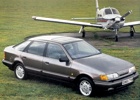 |
 |
1985 - 1994
When Ford’s European HQ set about designing their mid 1980s generation of flagship passenger cars, they made a deliberate effort at achieving a more externally compact car than the previous Granada model. It seemed that the maximum practical width for a European car had been reached, or even exceeded, and it was time to start trimming back the body without sacrificing passenger accommodation. More>> |
|
|
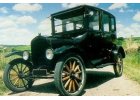 |
|
1908 - 1927
Ask most people to name a vintage car, and the answer will invariably be “The Model T”. With over 15 million being manufactured in the USA, South Africa, Canada and Australia, it is widely regarded not only as the car that “put the nation on wheels”, but the car that put the world on wheels. More>> |
 |
 |
|
1927 - 1931
The Model A Ford was the successor to the popular Model T, it first being released to the public on December 2nd, 1927. Ford desperately needed the Model A, with sales of the once popular Model T having been in decline for several years. More>> |
 |
 |
|
1932 - 1934
Unlike the Model T that had enjoyed a near 20 year production run, Ford knew that to retain market share, they would have to turn models over regularly as did their competitors. And so the Model A was replaced in 1932 by the Model B, carrying over the 4L engine layout however offering some minor refinements. More>> |
 |
 |
|
1952 - 1956
Immediately following the war most manufacturers, understandably,
continued with the manufacture of designs dating back
to the previous decade. Ford’s first and much
anticipated new model line up arrived in 1949, however
the 1952 revision, while based heavily on the 1949
design, heralded a new design direction. More>> |
 |
 |
|
1955 - 1957
Although it does not look like a sporty 2 door car, the
Thunderbird was in fact designed to counter GM's Chev
Corvette. More>> |
 |
 |
|
1955 -
Gaining notorioty recently for all the wrong reasons,
the perennial Crown Victoria has lineage dating back to
1955. Today however it is best known as a police vehicle,
accounting for over 90% of the police fleet in the US
and Canada. More>> |
 |
 |
|
1956 - 1959
The beauty of any big American car of the era was its ability to soak up the miles effortlessly,
and at the end of a long trip there were none better able to deliver both driver and passenger free of fatigue and in such great comfort. More>> |
 |
 |
|
1956 - 1959
As there were less than 13,000 of the vehicles made, these
cars are today seen as being highly collectable - if you
are lucky enough to find one! More>> |
 |
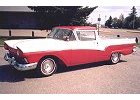 |
|
1957 - 1979
The Ranchero, the first US designed "Ute", was an ever
popular model in the Ford line-up - its popularity ensuring
it would enjoy a longevity spanning 23 years, from 1957
through 1979. Naturally during this time the vehicle
underwent several significant revisions, with the last
model bearing no resemblance to the first - however in
all versions the car remained exceedingly popular, with
some 508,000 vehicles manufactured. More>> |
 |
 |
|
1961 - 1964
Although first introduced in 1959, it was the sleek models
of the 1960's that presented an all-new style, abandoning
the ostentatious ornamentation of the 50s for a futuristic,
sleek look. It was obvious that Ford's stylists were abandoning
the aviation influences of the previous decade and instead
capturing the new obsession - the space race. More>> |
 |
 |
|
1963 - 1965
The Ford Falcon Sprint first came into prominence at the beginning of 1963 at the time of the Monte Carlo Rally, which it narrowly missed winning. The rally cars were hardtop coupes, specially prepared and tuned, although a little more attention to the durability of the suspension components should have been made to the Aussie design (for more on this, read the Ford Falcon Story). More>> |
 |
 |
|
1964 - 1966
The story of the GT40 goes back to the early 1960s, when
Henry Ford was negotiating to buy Ferrari. His offer was
rejected by Enzo Ferrari in last minute negotiations,
and in retaliation Henry set about building a Ford able
to dominate racing and beat the Ferrari teams. More>> |
 |
 |
|
1966 - 1996
From the ground up, the Australian assembled Bronco had specifications and equipment levels equal to or better than the competition. Only aesthetic areas remained open for criticism which seemed to polarise opinions – some loved it, some hated it. The team here at Unique Cars and Parts fall into the first category, considering it a neat example of U.S. styling that carried with it a continuation of the Ford world-wide grill and headlight treatment. More>> |
 |
 |
|
1968
Ford made it hard for the competition with their formidable line-up of the ‘60s. Much is said about the Mustang, but there was another in the stable that was utterly brilliant. A true muscle car in every sense of the word, the 1968 Torino took the fight up to just about everything. As delivered from the factory, the Torino was a quality vehicle. More>> |
 |
 |
|
1975 - 1980
Ford USA's Granada-Monarch (Ford and Mercury versions respectively) were originally conceived as a replacement for “compact” Maverick. Ford looked at importing the European Granada instead of designing a completely new car, but the cost of "federalizing" the German vehicle was prohibitive. And it was during the design of the Granada that it became a totally new car both in concept and execution. More>> |
 |
 |
|
1977 - 1985
The Courier was powered by Mazda's well known but noisy 1.8 litre ohc four cylinder, which endowed the 1145kg vehicle with respectable un-laden performance. Standard kit on the XLT was the column mounted 4 speed gearbox, which had the added advantage of allowing you to travel 3 up in the front – although you would have wanted to be very good friends as it was a considerable squeeze. More>> |
 |
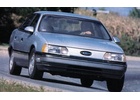 |
 |
1986 - 1991
Things can change quickly in the automobile business. In 1980, Ford's US. operation was losing a record $1 billion a year attempting to sell a line of products that were outdated and dull. In comparison, the competition had showrooms filled with high-tech, front wheel drive cars designed for the eighties. Ford was still cranking out rear-wheel drives styled for the seventies. Although Ford's European operation was healthy and dynamic, the US. company was in serious trouble. More>> |
|
|
 |
|
1964 ½
The date was April 17th, 1964. Intermediate sized muscle
cars, with big block engines were gradually replacing the
full sized muscle car. Lee Iacocca, Ford's General Manager,
had always envisioned a small sports car to be the next
hot item in the street wars. More>> |
 |
 |
|
1965
The Ford Mustang debuted as a simple sports car powered
by a 170 cid six cylinder and a pair of V8's. Originally
named for the fighter plane, the P-51 Mustang, preliminary
allusions were made to the horse, and the horse motif quickly
became the emblem for the Mustang. More>> |
 |
 |
|
1966
1966 saw further refinement of the Mustang. The gauge
cluster was redone to separate the Mustang from its Falcon
roots while the 260 cid V8 was replaced with 2 and 4 barrel
versions of the 289 cid V8. More>> |
 |
 |
|
1967
1967 saw a massive restyle of the Ford Mustang. Changes
included bulkier sheet metal below the beltline, a more
aggressive grill, a concave tail panel, and a full fastback
roofline for the fastback body style. More>> |
 |
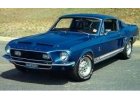 |
|
1968
The 1968 Ford Mustang received a simpler grill, side
trim and a limited number of 427 engines were slipped into
the engine bays. These 427 engines were slightly detuned
but still cranked out 390bhp, enough to strike fear on
the streets. More>> |
 |
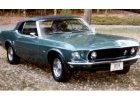 |
|
1969
The Mustang was restyled for 1969, gaining 3.8 inches
of length, all ahead of the front wheels, and about 140lbs
in curb weight. More>> |
 |
 |
|
1970
Both the Boss 302 and 429 continued into 1970. The
428 Cobra Jet continued as the top engine choice for the
Mach 1 Mustang. New for 1970 was the 429 Cobra Jet, standard
in the Boss 429. More>> |
 |
 |
|
1971
Ford's decade of "Total Performance" was
drawing to a close. The Mustang grew by 2.1" in length,
2.8" of width, 1" of wheelbase, and about 100
lbs. Coupled with this weight gain was the disappearance
of the Shelby models, the Boss 302 and Boss 429 models. More>> |
 |
 |
|
1972
Following industry lead, all power ratings for 1972
and later were listed in net ratings which included all
accessories. This lead to some drastic drops in power listings
which, coupled with the drop of all big block options,
sealed the end of Ford Mustang performance. More>> |
 |
 |
 |
1973
All engine choices and power ratings dropped once again
as emission controls tightened. New federal guidelines
resulted in mandatory bumpers that could withstand a 5mph
collision, all of which didn't help the bloated body styling. More>> |
|
|
 |
|
1974
Answering the call for a lighter, more nimble Mustang,
Ford's Lee Iacocca, dictated that the new Mustang, officially
called the Mustang II, which debuted in 1974 would be light,
sporty, and more European. Iacocca wanted it to be "a
little jewel" and this direction drove every aspect
of the new design. More>> |
 |
 |
|
1975
The biggest boost for the Mustang II's image was the
introduction of the 302 cubic inch V8 back to the Mustang
option list. Available in any Mustang II, but only with
an automatic transmission, the V8 was topped by a two-barrel
Autolite carburettor and was rated at 134 bhp. More>> |
 |
 |
|
1976
Catalytic converters were made standard on all Mustang
IIs for 1976 as Federal emission laws were further tightened. More>> |
 |
 |
|
1977
The only change for 1977 was that production of the
Cobra II option was now done in-house by Ford. More>> |
 |
 |
 |
1978
1978 saw the introduction of the King Cobra Mustang
II. The King Cobra package was offered only with the four-speed manual transmission and featured a better suspension with
front and rear stabilizer bars, the 302 V8 with a Variable
Venturi Carburettor, Goodyear P195/70R13 radial tyres,
and a wild paint and graphics appearance package. More>> |
|
|
 |
|
1979
1979 saw the debut of the new Mustang (the "II" was
dropped) based on the new Fox platform. More>> |
 |
 |
|
1980
For 1980, the Cobra option now included the Recaro
seats. But this couldn't make up for the loss under the
hood. More>> |
 |
 |
|
1981
The 2.8 litre V6 was dropped for 1981, with the 3.3
litre V6 receiving a slight boost in power up to 91 bhp. More>> |
 |
 |
|
1982
Performance fans finally were rewarded in 1982 with
the reintroduction of the beloved 302 V8, now named the
5.0 litre HO (High Output) and rated at a decent 157 bhp. More>> |
 |
 |
|
1983
The convertible finally returned for 1983. All Mustangs
also received a redesigned grille and taillights. In
addition, engine choices were shuffled up, mainly for
the better. The 3.3 I6 was dropped, and replaced with
a new 3.8 litre V6 rated at 112 bhp. More>> |
 |
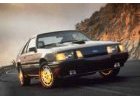 |
|
1984
To mark the 20th anniversary of the Mustang, Ford released
a special Twentieth Anniversary GT model. This featured
a GT350 badge were it had been 19 years before. Unfortunately,
although Carrol Shelby had licensed the Cobra name to Ford,
the GT350 and GT500 names were not licensed. Ford had to
discontinue using the GT350 name, making this a one year
only model. More>> |
 |
 |
|
1985
The big news for 1985 was improvements to the 5.0 litre
V8 H.O. The engine received true dual exhausts, and 1960s
era stainless steel tube headers. Along with a longer duration
lift cam and hydraulic roller valve lifters, power output
increased to a respectable 210 bhp. More>> |
 |
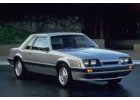 |
|
1986
The regular turbocharged Inline 4 was dropped for
1986, while the SVO engine was slightly detuned for 1986,
its last year, to meet the requirements of lower octane
gas. More>> |
 |
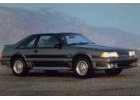 |
|
1987
Although the SVO Mustangs were gone, a lot of their
parts found their way to lesser Mustangs. All Mustangs
received the SVO drooped nose, and thus all radiator breathing
was from under the front bumper. More>> |
 |
 |
|
1988
The T-Top option was dropped for 1988 as the only change. More>> |
 |
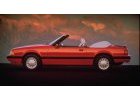 |
|
1989
There were no changes for the 1989 Mustang. More>> |
 |
 |
|
1990
For 1990, all Mustangs received a new 140 mph speedometer to replace the previous 85 mph unit. In addition, Ford
created a special run of 2,000 Emerald Green GT Convertibles
with white leather interiors that it referred to as the
Limited Edition Twenty-Fifth Anniversary model, (evidently
forgeting that the Mustang's 25th anniversary was in 1989). More>> |
 |
 |
|
1991
Sales dropped again in 1991 as prices for the base
Mustang rose past US$10,000.00. More>> |
 |
 |
|
1992
A new special edition Mustang GT in Red with a white
leather interior was introduced for 1992. A total of 2,196
were sold. More>> |
 |
 |
 |
1993
Finally, a new Cobra model was introduced mid-year
with its 5.0 litre V8 tweaked to 235 bhp, while changes
to the SAE rating method dropped the regular 5.0 V8 to
200 bhp. The Cobra was produced by Ford's Special Vehicles
Team (SVT) which had taken over the functions of the former
SVO group. More>> |
|
|
 |
|
1994
There are many stories about the long-awaited arrival
of the Ford Mustang. Major U.S. daily newspapers, news
magazines and several overseas journals carried "exclusive" features
detailing the newest entry in the Detroit sweepstakes.
It has been estimated that nearly 30 million television viewers
witnessed the unveiling on April 16th and, on the day of
the launch at the New York World's Fair, over 2,500 newspapers
ran advertisements. More>> |
 |
 |
|
1995
There are many stories about the long-awaited arrival
of the Ford Mustang. Major U.S. daily newspapers, news
magazines and several overseas journals carried "exclusive" features
detailing the newest entry in the Detroit sweepstakes.
It has been estimated that nearly 30 million television
viewers witnessed the unveiling on April 16th and, on
the day of the launch at the New York World's Fair, over
2,500 newspapers ran advertisements. More>> |
 |
 |
 |
1996
There are many stories about the long-awaited arrival
of the Ford Mustang. Major U.S. daily newspapers, news
magazines and several overseas journals carried "exclusive" features
detailing the newest entry in the Detroit sweepstakes.
It has been estimated that nearly 30 million television
viewers witnessed the unveiling on April 16th and, on
the day of the launch at the New York World's Fair, over
2,500 newspapers ran advertisements. More>> |
|
|
 |
 |
1959 - 1988
The marque Frazer-Nash is popularly regarded as being thoroughly British, but after World War 2 the cars displayed a good deal of German influence. The 1949 Le Mans replica was the first. More>> |
|
|
 |
|
1959 - 1988
IN A free from competition market like the USSR used to be, every model was planned to fill a certain niche. There was no need to replace a design for marque prestige alone. Hence the Gorky Automobile Factory's flagship GAZ-13 Chaika (the seagull), first built in 1959, remained in production for years longer than any similar car would have in the West. More>> |
 |
|
|
1956 - 1970
Making the M21 Volga individualistic was the
high waisted style, even though many design elements from contemporary US cars seemed to be present. More important than any perceived similarities however was that the new Volga be more adept at handling the unforgiving roads and climate in which it would operate. More>> |
 |
 |
|
1962 - 1970
Six years after the introduction of the GAZ M21 Saloon came the M22 Estate (station wagon) version, which remained in production from 1962 to 1970. Best known of these was the 5 door M22D "Universal", which entered service in the Soviet Union as an ambulance. More>> |
 |
 |
 |
1970 - 1992
The replacement to the M21, the all new M24 Volga entered limited production in 1968. The new model would spawn other unique models, such as the 1973/1974 experimental GAZ 24-95, which featured an all-wheel-drive system, although only 5 were ever produced, one being proudly owned by Soviet leader Leonid Illich Brezhnev. More>> |
|
|
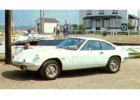 |
 |
1971 - 1978
British Enthusiasts were fortunate in having a handful of small, specialist sports car manufacturers to offer them a more individual, usually higher performance alternative to the relatively mundane, massed-produced sports cars of (mainly) British Leyland origin. Like Australian buyers of the Purvis Eureka, many referred to the "kit cars" as "Poor men's Porsches". More>> |
|
|
|
|
 |
 |
1956 - 1958
When aircraft designer Ernst Heinkel saw the BMW manufactured
Iso Isetta, he decided that he could do one better, using
aircraft principles and making it lighter and faster by using a smaller engine. More>> |
|
|
 |
|
1932 - 1970
The Raymond Loewy design organisation developed the Audax body style for the Rootes group, after their success with Studebaker coupes in 1953.
The sedan version was launched in 1956, while the Estate followed the release of the popular Humber Hawk saloon mid 1957. More>> |
 |
 |
|
1954 - 1970
Despite its looks, the Husky was not a hatchback. Instead, the designers incorporated a single side-hinged rear door. The Mark VIII Minx DeLuxe sedan, convertible and "Californian" hardtop used a then new OHV 1390cc engine, while the Husky continued to use the older 1265cc 35 bhp (26 kW) sidevalve engine with single Zenith carburettor which it shared with the Minx "Special" sedan and wagon. More>> |
 |
 |
|
1956 - 1967
Rootes' development engineers were always working to improve the consumption of the 1,725 c.c. Minx engine fitted to the Series VI. Obviously wind has a greater effect on lighter and less powerful cars, and in the case of the Minx the acceleration figures of 50-70 m.p.h. in third gear would take the engine well over its power peak so that, especially into wind, the car would take an unrealistically long time to reach 70 m.p.h. More>> |
 |
 |
|
1961 - 1967
Announced in October 1961, the Super Minx gave Rootes, and particularly its Hillman marque, an expanded presence in the upper reaches of the family car market. It has been suggested that the Super Minx design was originally intended to replace, and not merely to supplement, the standard Minx, but was found to be too big for that purpose. More>> |
 |
 |
|
1963 - 1976
The Hillman Imp was the first mass-produced British car
to have the engine in the back, and the first to use a
light aluminium alloy die-cast engine. More>> |
 |
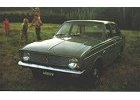 |
|
1966 - 1979
First introduced into Australia as the "Arrow",
the Hunter was a conventional design, square four-door
sedan (and later estate) with a live rear axle and ohv
engine (initially 1725cc with a 1496cc in 1970). More>> |
 |
 |
 |
1967 - 1969
For those living in the UK and not satisfied with the performance on offer from the stock Hillman Hunter, from Davenport Vernon, then Rootes main dealers at London Road, came a rather more sporting iteration - the "Master Hunter". More>> |
|
|
 |
 |
1959 -
The majority of Ambassadors on Indian roads feature drum brakes, unassisted steering and tyres with tubes - hardly features that a classic car collector would be looking for but surely making this car very unique! (and dangerous?) More>> |
|
|
 |
 |
1919 - 1934
The Hispano-Suiza H6 was arguably the pinnacle of the manufacturers endeavours.
Available since 1919, it would remain in production for over a decade and remained, during a time of unparalleled automotive advances, amazingly up to date, even if those in quest of the ultimate opted for the 'stretched' eight-litre 46 CV, a mere stripling launched in 1923. More>> |
|
|
 |
|
1982 - 1984
Manufactured in Australia by Holden, the Camira was designed
by Opel and used an international parts bin that included
an Isuzu dash and transmission. Apart from these few items,
the Camira was largely built from Australian components,
and boasted more local content than the (VL) Commodore
of the day. More>> |
 |
 |
|
1984 - 1987
The big news for lovers of Holdens Camira came in 1984
with the release of the "JD" model and the
introduction of the all new fuel injected 1.8 litre Family
II engine. The new motor became standard on all models
except the SL. More>> |
 |
 |
|
1987 - 1989
The Camira was soon to suffer the same fate as the Gemini.
During the mid to late 80's the then Federal Minister
for Trade and Industry John Button was restructuring
the local motor industry, and this involved local manufacturers
sharing models. More>> |
 |
 |
 |
1981 - 1988
The original Holden Rodeo, the KB, went on sale in Australia in February 1981 – and in doing so scored two 'firsts' for General Motors-Holden's Ltd. It was the first vehicle to bear the Holden name to be built outside Australia, and it was the first four wheel drive vehicle to be marketed as a Holden. More>> |
 |
 |
 |
1986 - 1987
Despite the bravado of the Italian design, under the
skin lurked a thoroughly conventional small Japanese
sedan with double-wishbone front suspension, five link
live-axle rear suspension and four-wheel disc brakes. More>> |
|
|
 |
|
1978 - 1980
The VB Commodore of 1978 was to replace the aging HZ
model, an update of the model line first introduced with
the HQ Holden in 1971. The base level Commodore came
with the 2.8 ltr. 6 cylinder motor coupled to a 4-speed
manual transmission. Engine options available at the
time of introduction included the 3.3 ltr. 6 cyl. and
4.2 ltr. V8 engines. You could also upgrade to a Tri-Matic
auto, corded cloth interior, power steering and air-conditioning. More>> |
 |
 |
|
1980 - 1981
A model update from the VB, the VC's main improvement
was the introduction of the "Blue" engines
(the
"Red" motors being carried over to the previous
model VB from the Kingswood). The VB's slat grill was
replaced with a "crate"
style grill on the VC, and unlike the VB it was attached
to the front structure of the vehicle instead of the
bonnet. More>> |
 |
 |
|
1981 - 1984
The VH was the third Commodore series in four years,
with five engines and, for the first time, a five-speed
gearbox. The transition from VB to VC and then VH was
one of evolution rather than revolution, and so many
knew the bugs had well and truly been ironed out by the
time the VH arrived. Naturally any model change required
some form of cosmetic change, Holden opting for a subtle
reworking at the front giving the VH Commodore a longer
and lower appearance. More>> |
 |
 |
|
1984 - 1986
The VK Commodore represented the first major change to
the Commodore since the release of the VB in 1978. Sporting
an all new and more aggressive look than the previous
models, the additional side windows helped make the VK
look longer, and by reworking the rubber seals the GMH engineers were able to give the VK a squarer, more prominent
look. The inside was to come in for a substantial makeover
too, although the newly squared-off design of the instruments
was not to everyones liking. More>> |
 |
 |
|
1986 - 1988
The VL Commodore represented a substantial makeover of
the VK, and would be the last of the "compact" Commodores.
The engineers sought to soften the lines of the VL, rounding
off the panels and introducing a small tail spoiler built
into the boot lid. To all
that saw it, the VL looked vastly more modern than the
previous models, but there was one major concern
for the Holden faithful, the 6 cylinder red engine that
had received such a comprehensive makeover for the VK
was completely dropped in favour of an imported Nissan
3 litre straight six unit. More>> |
 |
 |
|
1986 - 1988
One of the hottest Holden’s ever to roll off the production line at Fishermens Bend was not a V8. And the engine was not American or Australian. But it was every bit as quick as a 350 Monaro GTS; as fast as a Torana A9X. And in stock form it was right up there with all but the best from Peter Brock’s HDT Vehicles Division. More>> |
 |
 |
|
1988 - 1991
Launching the VN Commodore, Holden said the totally new
car had been designed to achieve the dramatic market
impact reserved only for the most historic and significant
Holden models. And so it proved. There were a few VL
Commodore components still under the skin, but the new
VN had been stretched - in every important dimension. More>> |
 |
 |
|
1990 - 1994
The VQ Statesman and Caprice models were more than just another car for Holden; they represented a big technological step forward and a return to the luxury car market - a market Holden handed to Ford six years earlier when the WB Statesman was scrapped. While the Statesman was more than just a luxury car, it was also much more than a stretched VN Commodore. More>> |
 |
 |
|
1991 - 1993
The VP was always going to be a face-lifted VN, however
there were considerable and detailed improvements made
over the latter model. Independent Rear Suspension (IRS)
was introduced, fitted as standard equipment on the Calais
and Commodore SS and optional across the range, the system
being adapted from the long wheelbase VQ. More>> |
 |
 |
|
1993 - 1995
The VR Series was the first Australian built car to offer
a driver's airbag. The introduction of the airbag, plus
webbing clamps on the front seats and a lap/sash belt
for the centre rear passenger, made the VR the safest
Holden ever. More>> |
 |
 |
|
1995 - 1997
The major improvements with the VS are the introduction
of the ECOTEC 3800 V6, and a passenger airbag. The ECOTEC
(Emissions and Consumption Optimisation TEChnology) V6
is more powerful, more economic, produces less emissions,
quieter and smoother than the previous 3800 V6. More>> |
 |
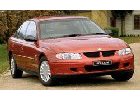 |
|
1997 - 2000
The VT is a completely new model, like the VB in 1978
and the VN in 1988. Taking the 1995 Opel Omega GM2800
platform and redesigning it to suit, the Commodore was
now both wider and longer - and subsequently stronger.
There is more front and rear leg room, and more shoulder
room. Boot capacity is up by 26%. More>> |
 |
 |
|
2000 - 2002
The VX, while looking very similar to the VT, has some
significant improvements. The V6 has been upgraded, and
now puts out 152 kW @ 5200 rpm and has improved fuel efficiency.
This is due to upgraded engine management system which
now allows individual spark control on each cylinder,
and a new inlet manifold. The V8 has also been upgraded
and now boasts 225 kW @ 5200 rpm. More>> |
 |
 |
 |
2002 - 2004
The VY represents another large investment by Holden,
with refinements to body structure, powertrain and chassis
dynamics delivering appreciable improvements in performance,
ride, handling, safety and build quality. A new model
has been introduced, the SV8, which slots in below the
SS. More>> |
|
|
 |
|
1975 - 1977
In 1975 GMH began the manufacture of the Gemini in Australia,
and within a year of its release the little Gemini had
become the most popular car on the market (no doubt helped
by the low price tag and its being named Australian Car
of the Year). More>> |

|
 |
|
1977 - 1978
The new model TC was, as could be expected after only
2 years, merely a facelift of the old model, however Holden
decided to introduce some important handling options,
such as a front stabilizer bar and steel belted radial
tyres. The drive train however remained unchanged. More>> |
 |
 |
|
1978 - 1979
The most noticeable visual change was the introduction
of more attractive and up-market looking square headlights.
The grille was, as always, changed again and now the little
Gemini incorporated RTS ( Radial Tuned Suspension) which
was much heralded in its big brother, the Holden HZ. More>> |
 |
 |
|
1979 - 1982
The Gemini had now spanned the casm between the traditional
large Holden HZ to the new smaller Commodore VB, and the
styling changes reflected Holdens new visual identity,
with the TE looking very much the little brother to the VB. More>> |
 |
 |
|
1982 - 1983
Seven years since the introduction of the Gemini and it
was time yeat again for another face lift. It was no surprise
to learn that the new model TF had a raft of appointment
upgrades over the old model, but there were to be very
few mechanical upgrades. More>> |
 |
 |
|
1983 - 1985
Picking a TF from the previous TG can prove difficult,
as most improvements were simply by way of upgrades, such
as standardising all models with the more upmarket SL/X
seats, and each model (except the base model) receiving
the previous models higher spec wheel trims. More>> |
 |
 |
 |
1985 - 1987
With the competition selling hatchbacks by the dozen,
and the Gemini now only available in sedan form, GMH actively
marketed the LB Astra hatch - which in it'self was another
nail in the Gemini's coffin. More>> |
|
|
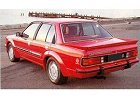 |
|
1980 - 1981
The HDT VC’s
were rather gregarious, but that was more fashion of
the time, if you were hot, show it. A huge air-dam was
fitted to the front, while the back featured a large
three piece spoiler, fat wheel flares and bold striping
in red, white or black, stretching from the front spoiler
and continuing along the flanks of the car. More>> |
 |
 |
|
1982 - 1984
First shown as a prototype at the 1982 Melbourne Motor
Show, the Brock VH HDT Special Vehicles would prove
popular before it was even released. Impatient buyers
were going to their respective Holden dealerships to
put down a deposit long before the car was even available.
Unlike the VC iteration, the VH came in four distinct
models, the Commodore SS Group One 4.2 V8, Group Two
4.2 V8, Group Three 4.2 V8 and Group Three 5.0 litre
V8. As you progressed through the models, each would
receive a little more by way of modification and refinement. More>> |
 |
 |
|
1984 - 1986
The HDT SS carried over the same grille from the donor
VK Commodore, but had a small rear spoiler and 15x7 HDT
wheels shod with Uniroyal ER60H15 tyres fitted. But it
was the Group Three that was creating all the interest,
with its additional air dam, bolder side skirts, rear
under-tray, letterbox grille and larger rear spoiler.
A rearward facing bonnet spoiler and bonnet wind splitters
that ran atop the front guards were popular options.
Colour options were restricted to either silver or white,
the previous black never proving popular but we cannot
determine just why red was abandoned. More>> |
 |
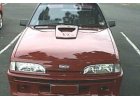 |
 |
1984 - 1986
The first of the HDT Special Vehicles Commodore's
for the VL range would be the Calais LE. Initially
it was powered by the same engine as the donor car,
the Nissan sourced 6 cylinder engine being used. Naturally,
as other engines became available on the general Commodore
range the HDT engineers were quick to use these for
their cars, and so both the turbo-six and Holden 5.0
litre V8 would also find their way under the bonnet
of the Brock VL. More>> |
|
|
 |
|
1988 - 1989
The Walkinshaw Commodore was at first rather difficult
to sell. For starters, it was not a “Brock Commodore”,
and the price was almost as over the top as the gregarious
body kit. Holden had undeniably got it wrong, deciding
that instead of producing the required 500 units they
would instead produce 750. Meanwhile HSV set about creating a more sedate Calais
SV88 model, which was released in April 1988. More>> |
 |
 |
|
1988 - 1991
The first of the HSV’s for the VN series Commodore
was, however, not particularly special. The SV3800 was
released in October 1988, the name indicating the size
of the new V6 carried over from the donor car. The HSV
body kit certainly gave the car a more sporting appearance,
and suspension mods firmed up the handling and steering. More>> |
 |
 |
|
1991 - 1993
There wasn’t much to separate the VP over the outgoing
VN, cosmetically anyway. But that would selling the VP
short. HSV were quick to incorporate IRS and other Holden
improvements into it’s own range. The VP would
see HSV clock up their 5000th vehicle, and only two years
later with the same model their 8000th, the latter marked
by the release of 138 special edition 5th Anniversary
models – each painted in Galaxy Blue over Panorama
Silver. More>> |
 |
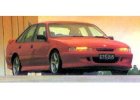 |
|
1993 - 1995
The new model HSV displayed bolder lines than its predecessors,
courtesy of a beautifully proportioned body kit which
featured a specially designed bumper incorporating large
central air intake flanked by smaller cooling slots for
brake cooling. You could now option your Club Sport with
a 185kW version of the ever reliable 5.0 litre V8; among
the enhancements were a recalibrated GM-Delco engine
management system linked to a Bosch electronic ignition,
a cold air box fed denser air to the system and reworked exhaust headers designed to reduce back pressure. More>> |
 |
 |
 |
1995 - 1997
With each successive model change in the HSV line-up,
the aspirant’s vehicle of choice had been edging
little by little out of the financial reach of most.
Remembering the quote from John Harvey with the release
of the VP Club Sport, that HSV wanted to create a performance
vehicle within the range of “Mr. Joe Average” (although
any HSV is anything but average), so begat the new entry
level Manta sedan and wagons. More>> |
|
|
 |
|
1968 - 1969
The sleek, pillarless two-door was introduced six months
after the rest of the range and soon took pride of place
in Holden dealer showrooms across the country. Its 'boy
racer' appeal was universal - a tribute to the foresight
of the then Managing Director of GM-H, Max Wilson. More>> |
 |
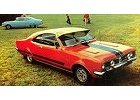 |
|
1969 - 1970
The HT Monaro upgrade exhibited even more of the self-assured
and extroverted attitude of the people who choose to drive
it. Most dramatic change was a new multi-louvred plastic
grille with a raised centre section and Monaro black-outs. More>> |
 |
 |
|
1970 - 1971
Regarded as the most sophisticated of the early Monaro
models, the HG is today one of the rarest and most sought-after
of the charismatic Holden coupes. More>> |
 |
 |
|
1971 - 1974
With the HQ series, Holden's design, engineering and manufacturing
team delivered the definitive Australian car - new from
the ground up and embracing the best of US and European
trends. More>> |
 |
 |
|
1973 - 1974
Inevitably, the trendsetting two-door Monaro had such
a strong influence on the rest of the Holden range that
sedans took on a similarly sleek look. The process began
with the HT sedan's 'faster' roofline and became more
apparent with the arrival of the fluid HQ. More>> |
 |
 |
|
1974 - 1976
As a rush of new European models entered the market and
Australians were presented with a wider range of choices
in general, the HJ Monaro upgrade had to satisfy a more
demanding enthusiast buyer. More>> |
 |
 |
|
1976
The HX arrived in July 1976 as the Australian automotive
industry concentrated on meeting new anti-pollution requirements.
There was no Monaro coupe in the new HX line-up, but the
name was emblazoned on a single, extroverted GTS four
door. More>> |
 |
 |
|
1976
This final coupe was exceptional and exclusive enough
to ensure that the original Monaro concept had an appropriate
send-off. Although the limited edition LE coupe did not
carry the Monaro nameplate, Holden fans regard it as a
true blue member of the breed. The LE arrived in August 1976, almost two months after the HX series release. More>> |
 |
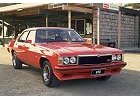 |
|
1977 - 1979
All cars in the HZ lineup brought remarkable advances in ride and handling with the introduction of Radial Tuned Suspension, delivering
a Holden that tamed local road conditions better than
any before it and handled the twisty bits with European-style
competence. The flagship in the Holden lineup was the GTS Sports Sedan. More
>> |
 |
 |
|
2001 - 2004
First seen at the Sydney International Motor Show as
a design concept in 1998, the stunning Monaro coupe would
make it to production, the first example rolling off
the assembly line in October, 2001 - a transition that
would take only 22 months. More
>> |
 |
 |
|
2003 - 2004
Any classic car collector will tell you the rarer
the car, the more quickly it will appreciate.
It may be a few years off, but if you are looking
at purchasing a second hand Monaro, the CV8-R
would be an astute investment. More
>> |
 |
 |
 |
2004 - 2005
It was always going to be difficult to improve on
the magnificent V2 Monaro, but essential to the
success of any update would be one ingredient, better
performance. And so the VZ Monaro was indeed a better
car, if power and torque is the gauge by which any
car should be judged. Boasting 260kW and 500Nm,
the VZ was, for a time, the most powerful mainstream
Holden ever manufactured. More
>> |
|
|
 |
|
1948 - 1953
Prime Minister Ben Chifley launched the car 'made in Australia,
for Australia' in 1948, and nobody guessed what a runaway
success this plain and practical sedan would immediately
prove to be. Australians took the Holden straight to their
hearts, commencing a love affair that continues to this
day. More
>> |
 |
 |
|
1953 - 1956
The FJ came along after five years of producing the 48-215
(FX) and was basically the same car with a few minor alterations
to the body. Nevertheless the FJ proved to be such a marketing
success that there were waiting lists at every dealer! More >> |
 |
 |
|
1956 - 1958
GMH recognised that buyers wanted their cars to be an
individual statement about themselves, and so introduced
new colour schemes and models - in fact seven distinct
models were now available including, in 1957, the introduction
of a station wagon (at the time referred to as a "Station
Sedan"). More>> |
 |
 |
|
1958 - 1960
As with the introduction of the FJ, Holden had learnt
that to revise or "facelift" a model half way
through its life would maintain interest and therefore
sales. And so the FC was simply an improved version of
the FE, and following the FX to FJ formula it sported
more chrome and a more elegant grille. More>> |
 |
 |
|
1960 - 1961
The FB had its engine size increeased from the original
132ci to 138ci which gave it 3kw more but because of the
heavier body it was actually slower than the older model. More>> |
 |
 |
|
1961 - 1962
The EK was the first Holden to offer an automatic ("hydramatic") transmission as an option on all models. This transmission was imported from America, and was regarded as one of
the best available in the world. More>> |
 |
 |
|
1962 - 1963
The EJ was the last model offered with the popular 'grey
motor', which had been in use since the first Holden produced
in 1948, albeit with a few refinements. More>> |
 |
 |
|
1963 - 1965
Holden Motor Company's greatest seller at the time, this
model introduced the new "Red" motors using an oversquare
design with a seven bearing crankshaft. They were the
first Holden to use hydraulic valve lifters, and external oil pump and oil filter for easier servicing. More>> |
 |
 |
|
1963 - 1965
The Premier sedan had a top speed of 96 miles per hour, and the wagon was a little slower at 91.8 m.p.h. Zero to 50 m.p.h. would come up in 9.9 sec. and 10.2 sec. respectively. Those figures were mighty impressive in 1963, and put it into the same league as the Valiants. More>> |
 |
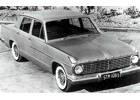 |
|
1965
The original design of the EJ Holden was deemed so dated by Detroit HQ that a major re-work was made, and more attention paid to what the "locals" were desiging. Had that original EJ design made it through untouched, the EF Holden may have become a reality. More>> |
 |
 |
|
1965 - 1966
Dubbed 'Holden's Disaster', this model was considered
the ugly duckling after the public's acceptance of the
EH's shape. More>> |
 |
 |
 |
1966 - 1968
Basically a face-lift of the previous HD model, GM's US
stylists redesigned the somewhat unpopular HD shape and
came up with one much more appealing to the Australian
public. This was reflected in sales, with many more HR's
being sold than HD's. More>> |
 |
 |
 |
1966 - 1968
The 186S in “Special” trim had none of the glamor gear of the Falcon GT. There was no tacho, although there were some additional instruments - not beautifully jazzed-up by Stewart Warner and styled into a luxury console as on the Falcon. There were no special seats, accessories or dress-up items. Closer to basics there was no V8 engine, and the gear ratios were not sorted by an engineer with a relief map of Mount Panorama as a starting point. More>> |
 |
 |
|
1968 - 1969
The all-new Holden HK was the most ambitious series to
date, bringing a large array of additional models and
mechanical features - most importantly of which was the
imported Chev V8 engine. More>> |
 |
 |
|
1969 - 1970
Another year, another facelift. The obligatory revisions
to the grille and tail lights were completed, but Holden
needed to advertise that there were some 65 major improvements
over the previous HK model for the buying public to take
notice. More>> |
 |
 |
|
1969 - 1970
To counter the growing popularity of the Ford Fairlane, the General introduced a lavish luxury "large car", the Brougham. The linage was evident to even the most casual observer, it appearing much like a Premier on steroids. More>> |
 |
 |
|
1970 - 1971
The HG Holden was the final refinement of the HK-T series
and introduced the Australian- Built, Three speed Tri-Matic
automatic transmission to the full size Holden. More>> |
 |
 |
|
1970 - 1971
The Brougham, with its 111 inch wheelbase, could never hope to match the ride stability and passenger space offered by its competitors. Aware of this, (although not prepared to openly admit it) GMH went to great pains to ensure that the Brougham at least came out ahead in the finish department. More>> |
 |
 |
|
1971 - 1974
This model was arguably a high point of GMH styling,
and an Australian classic. They still proliferate the
Australian landscape (an icon of cars that were "built to last")
in their various configurations of body styles and engine
combinations. More>> |
 |
 |
|
1974 - 1974
After the release of the Series II HQ Monaro, Holden took
a serious view to making a truly sporty recreational vehicle
after the 'sun and surf' youth culture of Australia was
starting to take hold. More>> |
 |
 |
|
1974 - 1976
The facelifted HQ was released as the HJ model in 1974,
and while many improvements were made to the vehicle
the re-introduction of the "swipe" style speedo immediately dated the interior and was reminiscent of
the HK. More>> |
 |
 |
|
1974 - 1976
Released in October 1974, the HJ Sandman followed the
lead of the Monaro with the bold blunt front that somehow
seemed to suit the van better than the sedan. Once again
the Sandman was tricked up with all the GTS options and
came equipped with the same decals as the HQ series. More>> |
 |
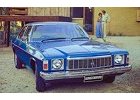 |
|
1976 - 1977
The HX represented only minor cosmetic changes over the
HJ, so much so that the HJ and HX are arguably the hardest
pre-Commodore Holden models to tell apart. In fact, the
major reason for the release of the HX was so that Holden
could comply with the new Australian Design Rule 27a,
a rule designed to lower exhaust emissions. More>> |
 |
 |
|
1976 - 1977
Released in July of '76 the HX Sandman had all the features
of the previous model with the major refinement being
the steering column mounted windscreen wiper/light dipper
switch, however its detoxed engine combinations were
a problem as in the Monaro. More>> |
 |
 |
|
1977 - 1978
Following on from the HX was the last of the line for
the traditional large Holden sedans, the wonderful HZ.
There was plenty to celebrate with the new model, and
the new Radial Tuned Suspension (RTS) created a revolution
in Aussie big car design. The fact that all other local
car manufacturers were forced to rush handling modifications
into their cars proved just how right GMH got it. More>> |
 |
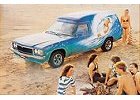 |
|
1977 - 1978
The HZ was equipped with all the visual, interior and
performance features of a loaded GTS sedan. With the suspension finally cured with the addition of the much-vaunted Radial
Tuned Suspension (RTS), the Sandman could truly be considered
a 'sports' as well as a 'lifestyle' vehicle. More>> |
 |
 |
 |
1980 - 1985
The introduction of the Commodore by GM in Australia
as the new "family sedan" left an important
segment of its line up floundering, being the ever popular
commercial vehicles and the up-market luxury Deville
and Caprice. More>> |
|
|
 |
|
1967 - 1969
In the early 1960s other car manufacturers began offering
motorists a broader range of motor vehicles, particularly
smaller more economical and considerably cheaper models
- particularly as Australian households became 2 car family's. More>> |
 |
 |
|
1967 - 1969
When the Torana was released the image was very much chiffon lace and sex-in-the-sand-hills thanks to its TV advertising and Press handouts. The Torana was marketed strongly as both " Holden" and "new" from every inch of its hippy line panel-work. GM-H made sure of that and for good reason. More>> |
 |
 |
|
1969 - 1972
The HB was replaced by the LC Torana in October 1968.
A much better car than its predecessor, it did however
share the same floorpan (although on 6 cylinder models
the wheelbase was lengthened). More>> |
 |
 |
|
1969 - 1971
At just $2778 the two-door only GTR came standard with an Opel floor mounted four-speed box, front disc brakes, heavy duty suspension (firmer springs, shock absorbers and an front anti-roll bar), full instrumentation, striking stylistic details which included louvres on the front
fenders, handsome two-piece wheel covers and bold paint
colours. More>> |
 |
 |
|
1970 - 1971
By the time the XU-1 hit the market everyone knew the intent, and no doubt the people over at the blue oval were wondering where the chink was in the XU-1's armour was. They didn't have to look far. As GMH didn't have their own 4 speed transmission, they had to stick with the Opel sourced unit, and its dislike for long hard track work was already well known. More>> |
 |
 |
|
Never (Initially 1970)
The Torana with the greatest reputation is, unfortunately,
one that did not make it into production. Designed during
the LC development, but most likely to be released alongside
the new LJ models, the GTR-X used a sleek wedge-shaped
body running XU-1 components under a fibreglass skin. More>> |
 |
 |
|
1972 - 1975
The LJ Torana of February 1972 was a facelift of the LC,
and offered more refinement with better handling, suspension revisions and greatly improved noise suppression. More>> |
 |
 |
|
1972 - 1974
The LJ versions of the GTR and GTR XU-1's had their engine
capacity raised to 202 cubic inches (3300cc). In September
1972, it received a number of refinements including fine-spline
rear axles and Globe Sprintmaster wheels. More>> |
 |
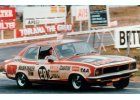 |
|
1972 - 1974
The scene was set for another Holden vs. Ford showdown at the Mount during the 1973 Hardie-Ferodo 1000, and everyone wondered if the XU-1, and Peter Brock, could retain the crown. Many felt the new race distance, extended to 1000 kilometres for the first time, would prove a bigger endurance test for the more temperamental GT's - no doubt many Torana fans hoped so. More>> |
 |
 |
|
1974 - 1976
At last Australians could enjoy an Australian designed
medium sized car from Holden - the LH Torana. Most
agreed it was a big improvement over its predecessor,
but was the LH a replacement or a different class of
car? Unlike the previous models that owed their heritage
to the English Vauxhall (from its entirety in the
HB to the chassis in the TA), the LH Torana series
could best be described as a scaled down Kingswood. More>> |
 |
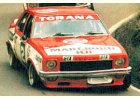 |
|
1974 - 1976
The LH Torana sure looked the part, once and for all dropping any semblance of linage with the Vauxhall Viva's from which it originated. And while the LH was a truley great car, it was the dominance of the GT Falcon at Mount Panorama that many believed drove the General to shoe-horn an all-Aussie V8 under the hood. More>> |
 |
 |
|
1974 - 1976
In a European vs. Australian comparison, a Mercedes 250 was pitted against an SL/R in highway and freeway conditions. Surprisingly (or should we say, not so surprisingly), the SL/R came out on top, being less affected by cross winds, easier to point at speed and generally more controllable. It seemed the achillies heel was only in the braking department, where the Torana tended to suffer brake fade due to overheating under continued fast stop testing. More>> |
 |
 |
|
1976 - 1978
A facelift of the LH model, the LX is best rembered for
two reasons, the introduction of the hatchback and, unfortunately,
the last to be fitted with a V8. The hatch was available
is SL and SS versions, and in base form cam equipped
with a 3300 engine, however you could option the 253
4.2 litre V8, while the 5.0 litre V8 came as standard
with the SS. The hatch looked great, however in practical
terms the shallow boot did not swallow as much luggage
as many thought it should. More>> |
 |
 |
|
1976 - 1978
To create the free flowing lines, the GM stylists dropped the roofline sharply from approximately six inches behind the thick B-Pillar - and in doing so created a genuine fastback style. The down-side was that the rear roof-height was somewhat compromised, meaning tall passengers would probably have preferred to travel in the back of a standard LX Torana sedan. More>> |
 |
 |
|
1977 - 1978
The penultimate Torana, and one of the best ever Australian Muscle Cars, the Torana A9X became an overnight legend. That the Brock Commodore's would take four years to surpass their performance speaks volumes about the car's innate power and roadholding ability. More>> |
 |
 |
|
1978 - 1980
The UC was unfortunately the last model in the Torana lineup.
The most obvious changes over the previous model LX were
in the front end re-styling, which featured a new grille
and rectangular headlights. Modifications were also made
to the tail-lights and interior, the latter offering increased
room and superior appointments. More>> |
 |
 |
|
1978 - 1980
There was no way the Sunbird could ever hope to keep up with the larger engined Torana. Not in a straight line, not even in a corner. The two may have looked identical, but when you were behind the wheel of a Sunbird you knew there was a difference. The Sunbird felt like an underpowered Torana. Not that it was a bad car, but because of its size and the way it felt on the road, the Sunbird, understandably, would always feel like a Torana without any go. More>> |
 |
 |
 |
Never (Initially 1969)
In the late 1960's Holden were at the forefront of experimental
car design. Most know of the wonderful GTR-X, but only
a handful will truly remember the Hurricane. Unlike the
GTR-X, the Hurricane was never really intended to make
it into production. Rather, Holden described it as an
experimental research vehicle, allowing them
"‘to study design trends, propulsion systems
and other long range developments". More>> |
|
|
 |
|
1963 - 1966
A plaque in the Honda Collection Hall recalls the days
when Soichiro Honda went from being a motorcycle manufacturer
to a maverick carmaker. "I didn't want to build a car
like everyone else's". More>> |
 |
 |
|
1965 - 1979
Undercutting the Mini Cooper and Triumph Spitfire in price,
the vehicle soon made in-roads into the more traditional
British sports car category and the rest was history. More>> |
 |
 |
|
1968 - 1973
The Honda Scamp changed a lot of pre-conceived ideas about mini cars with mini engines – the concept of which had become a little maligned by the likes of the Glas Goggomobil and Lightburn Zeta. More>> |
 |
 |
|
1968 - 1973
In Australia, as in Japan, we had two versions of the Honda Z. There was the Honda 360 or Scamp, and the Honda 600. They were pretty much identical, apart from the engine size. More>> |
 |
 |
|
1969 - 1973
Superb and incredible. Not our words, but those of motoring journalists after getting behind the wheel of the diminutive front wheel drive air-cooled Japanese Coupe. There were two models of the 1300 Coupe on sale in Australia: the "9" and its baby brother, the "7". The cars were identical in body and trim specification and shared the 1300 engine capacity. More>> |
 |
 |
|
1972 - 1979
To break into the lucrative international markets Honda
needed to produce a vehicle perceived as 'economical',
having the appeal of the venerable Mini, while offering
new levels of ride and comfort. More>> |
 |
 |
|
1976 - 1981
When the Accord was released Honda had manufacturers from Wolfsburg, Milan, Turin, Billancourt and even Japanese Toyota in their sights. Of course with the benefit of hindsight we can claim the Accord was a brilliant car – arguably better than any of the competitors. It was beautiful, it went well, cornered well and stopped well. More>> |
 |
 |
|
1986 - 1990
The Honda Legend was arguably the first attempt by a Japanese manufacturer to compete head on with the European luxury car makers, the first Japanese car purpose built to tackle Mercedes-Benz, BMW, Audi, Volvo and Saab on their own terms. More>> |
 |
 |
|
1991 -
In 1991 Honda was to release undoubtedly their finest
car, and a worthy flagship for the marque, the mighty
NSX. Graced with sleek and purposeful styling, the NSX
was embodied with a sublime rear-wheel drive chassis and
a fantastic mid-mounted V6 engine - the only thing lacking
was the cache of its European rivals. More>> |
 |
 |
 |
1999 -
The Honda S2000 produces more power per litre than any
other non- turbo production engine and sends the rev counter
needle sweeping around to the 9,000 mark. Honda built
this remarkable two-litre car to celebrate its 50 year
anniversary. More>> |
|
|
 |
 |
1951 - 1954
Hudson Hornets were available as a two-door coupe, four-door sedan, a convertible and a hardtop coupe. The models were priced the same as Commodore Eight, which was priced from US$2,543 to $3,099. All Hornets ( 1951 - 1953) were powered by Hudson's high-compression straight-six "H-145" engine. More>> |
 |
 |
|
1955 - 1957
In the mid 1950s it seemed there were two quite distinct forms of motor cars and motoring, the European and the American. The Hudson Hornet was a car specifically and undeniably made to meet the technique and needs of American drivers. The Hudson was a very large car, weighing in at a little over 34cwt at the kerb, it was over 17ft long, and 6ft 6in wide. This car would accept six adults with space to spare. More>> |
|
|
 |
|
1957 - 1967
While the Hawk was generally a sound and solid car, there were some minor irritations noted by motoring journalists of the era. These included a sub-standard rear view mirror, poor gear ratios and heavy steering. Many of these minor issues were remedied with the release of the Series 1A in 1959. More>> |
 |
 |
 |
1958 - 1967
The Series I Super Snipe was introduced in 1958 with
a 2655cc Six Cylinder engine, and sharing the same bodyshell
as its smaller engined stablemate, the Humber Hawk, which
used a 2267 cc four cylinder engine. Although mainly
sold as a "saloon", other versions of the vehicle
included the "limouisine" and "estate"
models. More>> |
 |
 |
 |
1963 - 1966
At the time, the Humber Vogue had the reputation for being "the safest car in wet conditions" then available in Australia. Of course to achieve that feat, it was also blessed with excessive understeer on a dry surface. Pretty much all Rootes cars, with the exception of the Imp, had very laudable built-in "fail-safe" systems of handling. More>> |
|
|
 |
 |
1985 - 1994
The Excel was always a car with few pretensions. If getting from A to B as cheaply as possible was the only criteria of which to judge a car, then maybe the Excel would have made a case. But we could never forgive a car that is potentially dangerous – so that on any objective analysis, the Excel did not put forward a compelling case. But, for the sadists among us, it offered poor performance, sloppy suspension and bugger all comfort. More>> |
 |
 |
|
1988 - 1993
The Y2 Sonata was part of Hyundai's expansion in North America after the success of the Excel. It was introduced in South Korea on June 1, 1988. It was then introduced in Canada in September 1987 as a 1988 model, in 1988, as a 1989 model in the United States, and in March 1989 in Australia. The exterior was designed by Giorgetto Giugiaro of ItalDesign. More>> |
 |
 |
|
1990 - 1995
The Scoupe was released in 1990, a time when Hyundai were making inroads on local markets by offering cheap reliable cars, but all were pretty forgettable. The Scoupe was to be a little different, however. It was even rumoured to have been designed by Giugiaro. But, being a Hyundai, it was the cheapest coupe available in many markets. More>> |
|
|
 |
 |
1974
Where the car really shone was with it's brilliant chassis. Rivolta proposed the use of a platform chassis to allow easier and more cost effective mass production, the challenge was for Bizzarrini to produce something that was cost effective yet maintained rigidity. His answer was the design of a pressed-steel and welded panel chassis designed to flex up and down, which would be countered by the body that was designed to flex forward and backward. More>> |
|
|
 |
|
1975 - 1980
The International Scout Traveler filled its role well,
that of a large multi-purpose 4WD. There was plenty of
room in the back, in fact enough for two to sleep comfortably,
and enough to transport a serious amount of gear for
that extended trip off the tarmac. It stood in stark
contrast to the svelte shape of the Range Rover, making
no pretence at being small, nimble or, for that matter,
fuel efficient. More>> |
 |
 |
|
1975 - 1980
During the 1970’s the American adage that “Big
is Beautiful” usually held true, but there were
a few notable exceptions. Ford had proved this with
their top selling Bronco, small by US standards it
was able to go places the bigger 4x4’s simply
were unable to go, mainly because of their sheer size!
International followed suit with the Scout Terra, but
in the process stole a march on the opposition by producing
it as a pick-up which was smaller than other 4WD pick-ups
on the market. More>> |
 |
 |
 |
1975 - 1980
The Scout Traveltop from International Harvester was
aimed at buyers of four-wheel-drive vehicles who wanted
the power and comfort of the enormous Scout Traveler
but without the size and weight of the top-of-the-line
vehicle in the Scout range. The short wheelbase iteration
carried over almost identical mechanicals, although purists
thought the styling of the SWB iteration was less than
beautiful when compared to the LWB versions. More>> |
|
|
 |
|
1962 - 1968
Where the car really shone was with it's brilliant chassis. Rivolta proposed the use of a platform chassis to allow easier and more cost effective mass production, the challenge was for Bizzarrini to produce something that was cost effective yet maintained rigidity. His answer was the design of a pressed-steel and welded panel chassis designed to flex up and down, which would be countered by the body that was designed to flex forward and backward. More>> |
 |
 |
|
1964 - 1974
In 1964 a prototype Grifo A3/C raced at Le Mans, being driven by Edgar Berney and Pierre Noblet. The Grifo proved itself on the day, coming a credible 14th place. Bizzarrini was left to ponder what could have been, the two hour pit stop to address brake problems costing the car a possible podium finish. In the end, only 22 A3/C's were constructed before the Rivolta/Bizzarrini collaboration came to an end. More>> |
 |
 |
 |
1969 - 1974
There were two versions of the Lele (pronounced Lay-lee), the standard model and the Sport, while there was a longer wheelbase, four-door, four-seater sports saloon called the Fidea. The car is named after Lele Rivolta, wife of Piero Rivolta (son of Iso company founder Renzo). More>> |
|
|
|
|
 |
|
1936
While not pioneering any technical innovation that characterised
the post-war Jaguar models, no one could deny the SS100's
fine performance, handling, styling, build quality and
competitive price. More>> |
 |
 |
|
1948 - 1951
At the 1948 Motor Show, Jaguar was to unveil both the
Mk. V and XK 120 - the first new design post war Jaguars.
The Mk. V was available with either a 2.5 litre or 3.5
litre engine, the smaller capacity 2.5 being the "entry"
model for the Mk V range. More>> |
 |
 |
|
1948 - 1954
Designed to be a low-volume dream car rather than a high
production motor car, the Jaguar XK120/140/150 became
an overnight sensation and highly profitable. More>> |
 |
 |
|
1954 - 1957
The new Jaguar XK140 featured similar body pressings as the XK120, but the doors were now 3 inches longer as the engine, bulkhead and windscreen had been moved forward to improve the interior space. More>> |
 |
 |
|
1955 - 1957
Although Jaguar were to leave racing at the end of 1956,
private teams would continue to enjoy success driving
the D-Type. At the 1957 Le Mans, D-Types were to finish
first, second, third, fourth and sixth! A great success,
but without the arch rival Mercedes-Benz perhaps not terribly
surprising. More>> |
 |
 |
|
1956 - 1959
The 1956 - 1959 Jaguar Mark VIII was a slightly heavier replacement for the Mark VII/VIIM sedans. It featured minor styling changes and more power, but was otherwise the same. More>> |
 |
 |
|
1957 - 1960
The interior of the XK150 featured walnut veneer on the dashboard, while mechanically one of the main changes were the Dunlop disc brakes now fitted both ends, replacing the previous disc/drum setup. More>> |
 |
 |
|
1961 - 1970
This car still holds the title as being the broadest British
production saloon being 1.93 metres across its rear. It
offered independent suspension and power-steering and
was half the price of its rivals. More>> |
 |
 |
|
1961 - 1975
The Mk. II was the last proper sports saloon made by Jaguar
and became somewhat of a 60's icon. Quiet, comfortable
and stately in appearance, under the Mk. II bonet lay
an eager and impressive motor capable of 201 km/h in 3.8
litre form. More>> |
 |
 |
|
1961 - 1975
This car was arguably the most beautiful sportscar of
the 1960's with its cool aerodynamics and unashamed showmanship. More>> |
 |
 |
|
1967
Although the Bertone Jaguar Pirana was never intended to be more than a concept car, it was a fully functioning vehicle worthy of supercar status, and more importantly was completed in record time using parts already available courtesy of an E-Type donor car. More>> |
 |
 |
|
1968 - 1987
The XJ6 was launched in 1968 with a design that boasted
ride comfort, quietness and great road-handling. It was
a front-engined, rear-wheel drive, coil-sprung saloon
and had a ride that was softer and quieter than a Rolls
Royce. More>> |
 |
 |
 |
1975 - 1991
Launched as the replacement for the E-type in 1975, and
available in either coupe or convertible format, the XJ-S
is now getting the recognition it deserves. More>> |
 |
 |
 |
1979- 1992
Jaguar's of the 1970's were never perfect. Like all others, there were design and manufacturing weaknesses. They had problems and failures. But compared with their international rivals, Jaguar's XJ saloons were unrivalled. Bob Knight was the chief architect of the original XJ chassis, and by the time the Series III was released, he had been promoted to Jaguar's Managing Director. More>> |
|
|
|
|
 |
|
1948 - 1954
We doubt many would know that Jensen Motors Ltd., of West Bromwich, introduced a six-wheeled outfit known as the Jen-Tug after World War 2. It was, to say the least, an interesting machine designed to perform work comparable to that of a horsed vehicle, although its robust construction was probably an invitation to some operators to overload it. Pressed steel channel-section side members were employed for the tractor frame. More>> |
 |
 |
|
1966 - 1971
The Jensen Interceptor (and FF) was clearly the most outstanding
vehicles built by Jensen. It was both good-looking and
quick and displayed a new touring-style body. More>> |
 |
 |
|
1971 - 1974
Like the Aston Martin DBS V8, the Jensen Interceptor Mk.III seemed to fly in the face of the Supercar Superscare, with its huge 7.2 litre Chrysler V8 fed through a four-barrel Carter carburetter. Of course if you speak to anyone lucky enough to have owned one of these special Jensen's they will tell you there was a therapeutic quality derived from jumping behind the wheel, something that made the cost of fuel seem somehow irrelevant. More>> |
 |
 |
 |
1972 - 1976
When Jensen obtained the services of Donald Healey, who had just finished working at BMC, together with Donald’s son Geoffrey, the idea of a stylish yet affordable Jensen seemed a shoe in. The winning formula would capture much of the charisma of the 1960’s Austin Healey’s, and combine that with the engineering prowess of Jensen. That was the theory. More>> |
|
|
 |
|
1949 - 1953
The original idea for a hatchback design was not European, but American, and like so many other innovations in automobile design, it came from one of the smaller post World War II manufacturers. More>> |
 |
 |
|
1950 - 1954
Referred to by Frank Zappa as the “ironing board from hell” (after experiencing the back seat while doing a cross-country tour) the Henry-J was naturally enough the brainchild of Henry J Kaiser, chairman of Kaiser-Frazer Corporation, who thought that by adding a car that could be built inexpensively he would be able to emulate the success that Henry Ford had with the Model-T. More>> |
 |
 |
 |
1953 - 1954
Kaiser needed a hero car, something to raise the profile and show it could compete with the best that Ford or GM could produce. It was a huge jump from the more humble Henry-J to this wonderful streamlined 2 door convertible, and had it made serious production it would no doubt have garnered a huge following for the marque. More>> |
|
|
 |
|
1977 -
The Niva (2121) was Lada's (VAZ/AvtoVAZ) first non-Fiat based model. Much of its mechanicals were carried over from the Fiat based Lada models, though the body, four-wheel drive system, and front suspension were designed by Lada. More>> |
 |
 |
|
1978- 2001
Lada set about making changes to the 124 design to ensure some degree of longevity in the harsh climate of Eastern Europe. These included the use of aluminium brake drums which were added to the rear, and the original Fiat engine was dropped in favour of a newer design also purchased from Fiat. This new engine had a modern overhead camshaft design but was never used in Fiat cars. More>> |
 |
 |
 |
1984 - 2004
The Lada Samara had a short stay in Australia, and few shed a tear when it left our shores. The brand name Samara originally was used only for exported models, being named after the city of Samara in Russia. On home soil the same model was called "Sputnik", although we are not sure what the Russian words are for "space junk", which would have been far more accurate. More>> |
|
|
|
|
 |
|
1964 - 1968
Released in 1964, the 350 GT was deemed to be Lamborghini's
first production car. More>> |
 |
 |
|
1968 - 1978
Lamborghini's Espada offered not only comfort and space
but, when it originated, was the fastest four-seater in
the world. More>> |
 |
 |
|
1966 - 1972
This dramatic road car lifted Lamborghini to the manufacturer
of advanced supercars, surpassing Ferrari in some pundits
eyes. More>> |
 |
 |
|
1970 - 1976
There wasn't a whole lot of front leg room, either. A dead pedal next to the clutch (LHD model) effectively kept that leg bent unless you weaseled the left foot underneath their clutch and behind said brace. A man of say 5 ft 10 in. with smallish feet could get his left leg comfortable ... if he didn't like to shift very often. If we were writing for Top Gear, we would say it was perfect for the Hampster, but not so for Jeremy. More>> |
 |
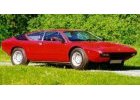 |
|
1972 - 1977
The Urraco was an ambitious project, Ferruccio Lamborghini
wanting to move over 2,000 units each year, thus turning
Lamborghini into an Italian success story like their nemesis
Porsche. While the theory was good, the timing was completely
wrong, with the 1970's energy crisis putting pay to this
adventurous project. More>> |
 |
 |
|
1982 - 1988
Evolving from the Urraco, the Lamborghini Jalpa was the
cheapest from the marque during the 80's, and was intended
to compete with the likes of the Ferrari 308 and 328GTB. More>> |
 |
 |
 |
1990 - 1998
The Lamborghini Diablo was launched in 1990 as successor
to the legendary Countach, and it went on to survive
for 11 years during which time some 2884 cars were built.
Interestingly, the name Diablo means "Devil" in Spanish
(not Italian). More>> |
|
|
 |
|
1951 - 1956
At the Turin motor show of 1950, Lancia introduced a typically innovative new saloon, the B-10 Aurelia. While it continued Lancia's traditional sliding-pillar independent front suspension, and Lancia's equally traditional mono-constructed bodyshell, the car had as well a new system of independent rear suspension by semi-trailing arms, rear-mounted clutch/gearbox/differential, and the world's first production V6 engine. More>> |
 |
 |
|
1957 - 1970
A brilliant looking car built in very small numbers by Lancia was the Flaminia convertible. Launched in 1958, the Flaminia featured a 2458cc V6 engine that developed a healthy 140 bhp. The Flaminia (which replaced the Aurelia) was specially developed as a six-seater for the wealthy. As such, it was one of the most expensive Italian cars then available, and was therefore much favoured by politicians and film stars. More>> |
 |
 |
|
1958 - 1965
Carrozzeria Touring designed and built the beautiful aluminium bodied two-door Flaminias, these being easily distinguished by their four round headlights (rather than two on Pininfarina Flaminias), and a shorter cabin - the wheelbase was decreased significantly for the GT and Convertibile, allowing for only two seats to be mounted. The GT was a coupé, while the Convertibile was obviously a cabriolet version (with optional hardtop). More>> |
 |
 |
|
1960 - 1970
Refinement, performance, sophistication. The Flavia had bucket loads of personality, and just enough quirks and foibles to remind you that you were driving an Italian car. That was always part of the experience. Those that couldn't appreciate a car with personality would never have stopped by at their local Lancia dealer, which was probably a good thing. More>> |
 |
 |
|
1965 - 1973
Look under the bonnet and you would see where the money went. In many aspects of the car's character, the Fulvia coupe could be likened to a precision watch. The exclusive styling attracted a lot of attention and the practical package size made it a terrific car around town. But out on the open road, its true breeding would begin to show and the coupe would become a fast touring car with few rivals. More>> |
 |
 |
|
1968 - 1969
As far as the Fulvia goes, the 1.6 HF was seen to be the best. It boasted two world championships and was capable of reaching 184 km/h. More>> |
 |
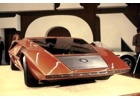 |
|
1970
The Lancia Stratos HF prototype was a styling exercise by Bertone, first show at the Turin Motor show in October 1970. It was a futuristic design with a wedge shaped profile and stood just 33 inches (84 cm) from the ground. It was so low, that conventional doors where not used. Instead, drivers had to flip up the windscreen and walk into the car, to gained entry. More>> |
 |
 |
|
1973 - 1976
The Lancia Fulvia 1300 was not a car for an unsympathetic (read lazy) driver, simply because of the need to use the gearbox and engine energetically. It was instead a fabulously rewarding little car for a good driver. More>> |
 |
 |
|
1973 - 1975
Lancia took a rather novel course with the design of their Stratos - instead of the more conventional scheme of transforming a "Gran Turismo" into a competition machine, the new model was a competition car adapted for road use and destined for rally work. More>> |
 |
 |
|
1975
Few would argue that, in the mid 1970s, Italian designers reigned supreme, by virtue of their stranglehold on innovative, practical styling. Manufacturers beat a path to their doors from America, Japan, Australia, Korea, and many major European producers – even Communist bloc car-makers sought out the Italian design studios. More>> |
 |
 |
|
1975 - 1984
Style and performance were not all that this suave Italian offered, the fuel economy usually bettering 30 mpg on a country trip and not much under when in heavy traffic. Yes, the Lancia was not without its faults, but it featured beautiful lines, great all-round performance and quickly became a very desirable machine. More>> |
 |
 |
|
1975 - 1982
From Italy, sired by the huge Fiat conglomerate, the two-seater, mid-engined, Lancia Beta Montecarlo appeared - finally a mid-engined sports car for the masses! An almost "ugly-but-beautiful", low and stubby design stamped front and rear by the US-mandatory, impact-absorbing bumpers/body-work. More>> |
 |
 |
|
1976 - 1984
When the Gamma arrived in 1977 it seemed something of a departure for the Italian company. Part of the answer to this lay in the fact that Lancia was part of the Fiat group, and had been since 1969; the Lancia name had always had connotations of quality and prestige, it seemed a good idea for the new Fiat 'flagship' which replaced the old Fiat 130 to have the Lancia stamp. More>> |
 |
 |
|
1979 - 1983
Lancia's small hatchback, code-named Epsilon but renamed Delta after months of introduction delay due to the strikes that paralysed Italian industry, could well be regarded as a cousin to Fiat's Ritmo/Strada. Designed by Giorgetto Giugiaro, the Delta was, for a period of time, also sold in Sweden by Saab Automobile, badged as the Saab 600. More>> |
 |
 |
|
1982
There's was little more than a family resemblance to the Beta Monte Carlo in the Lancia Rally, built in a limited series of 200 to make it eligible for Group B commpetition. More>> |
 |
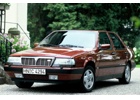 |
|
1984 - 1994
During the mid-1980's the Fiat group began to rationalise it chassis/platforms so that the same body could be used on different Fiat, Alfa Romeo and Lancia models. More>> |
 |
 |
 |
1985
Sadly, during the 1986 Corsica Rally, driver Henri Toivonen and navigator Sergio Cresto were killed in their S4. Resultant FIA findings saw the termination of Group B rally cars - deemed to be too powerful and dangerous. The Lancia Delta S4 became the most outstanding rally car in history not to win a world title. More>> |
|
|
 |
|
1948 - 1958
The car's most notable appearance in a movie was in the
South African film 'The Gods Must Be Crazy', and from
our expericence the brakes were never that good although
the film version did go to extremes! More>> |
 |
 |
|
1958 - 1971
After 20 years of uninterrupted producction Rover claimed that 600,000 Land-Rovers were operating in more than 170 different territories all over the world. Over that time the outward appearances changed remarkably little, but major developments, particularly to the power unit, had been introduced over the years. More>> |
 |
 |
|
1958 - 1971
Did the fitment of the 6L engine improve what was already very good? The simple answer is yes. The vehicle did not lose any of its character, remaining very much a utility vehicle, specifically designed for hard use and exacting conditions. The 6-cylinder engine option only improved hill climbing and offered better performance. The "character" of the Matilda remained - and that was a good thing. More>> |
 |
 |
|
1970 - 1996
Whoever it was at Rover that convinced the powers to
be to develop a "high end" Land Rover must have
had an accurate crystal ball, the resulting Range Rover
proving to be a huge sales success and spawning a love
affair for many with the notion of driving a large, expensive
fuel guzzling monster capable of obliterating pedestrians
and other road users without ever having the intention
of taking the vehicle "off road". More>> |
 |
 |
|
1980 - 1986
1980 heralded big news for lovers of the Land Rover,
as now for the first time the Rover V8 engine could be
optioned! Dubbed the "Stage 1", the V8 offered vastly
superior performance and made the Land Rover a much more
drivable conveyance on the highway - and was the first
Land Rover to feature full time 4WD. More>> |
 |
 |
 |
1990 -
Many commentators were critical at the time of the Disco's
bland styling, which looked traditional and obviously
familiar. But they were missing the point, here was a
Range Rover for the masses, and the public loved it. It
was a shame then that the quality control was not able
to keep pace with the rapid expansion of the production
facilities, and the inevitable damage to the Discovery's
reputation followed a string of reliability issues. More>> |
|
|
|
|
|
|
|
|
 |
|
1958 - 1959
It was Lotus's most powerful sports car of the late 1950s, with the still-stretching Coventry Climax twin-cam four of either 1.5 or 2.0 litres as a power-plant, and a compact Chapman/Costin chassis controlling the trajectory. While probably not more than 30 Fifteens were built in all (Series One and Two in 1958, and about six of the Series Three in 1959), they were very successful machines in short-distance UK racing. More>> |
 |
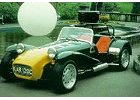 |
|
1961 -
It had no doors, just cutaway sides and with its hood
raised it was nearly impossible to get into this car. More>> |
 |
 |
|
1962 - 1966
Formula One racing's "Age of the Monocoque" can be said to have dawned on May 20, 1962, in the Dutch Grand Prix at Zandvoort. On that day Jim Clark started his brand-new Lotus 25 from third-fastest place on the grid, led the entire field going away for 12 laps, and then slowed as he struck clutch trouble. More>> |
 |
 |
|
1957 - 1963
The overhead-cam 1216cc engine powered the car reaching
a top speed of 189 km/h. What made this vehicle unique
was its quick handling. More>> |
 |
 |
|
1962 - 1973
Its acceleration was dynamic - it could get to 96 km/h
as fast as a Lamborghini Islero and once in top gear could
easily mix it with cars like the 246 Dino and 911E Porsche. More>> |
 |
 |
|
1966 - 1975
The Europa lays claim to being the worlds first everyday
useable mid-engined car. More>> |
 |
 |
|
1970 - 1975
The Lotus think tank developed a simple wedge-shaped body form which combined the maximum negative lift force with a low pitching moment thereby reducing tail-end squat and front-end dive to a minimum and providing a stable platform. The smooth response and acceleration of of the turbine engine helped in this respect, but the behavior of the 56 spoiled Lotus's drivers when they returned to Formula One. More>> |
 |
 |
|
1974 - 1982
Launched in 1974, the Elite Type 75 was Lotus' very first saloon car, which featured a fibreglass hatchback bodyshell designed by Oliver Winterbottom, mounted on a steel chassis that had evolved from the Elan and Europa. More>> |
 |
 |
|
1976 - 1980
These first cars eventually became known as S1 (or Series 1) Esprits. With a steel backbone chassis and a fibreglass body, the Esprit was powered by the Lotus 907 4 cylinder engine, as previously used in the Jensen Healey. More>> |
 |
 |
|
1980 - 1987
Introduced in April 1981, the Turbo Esprit and S3 (Series 3) Esprits marked a necessary consolidation: both new models had a common chassis, inheriting much of the configuration of the Essex cars, whilst body production was based on a single common set of moulds. More>> |
 |
 |
|
1986 - 1988
The Esprit was seen as a Ferrari or Lamborrghini rival, which it was in dynamic and visual terms, but it was way behind these in mechanical refinement and practicality, even by mid-engined standards. At either end of the scale there were more useable mid-engined cars: a Ferrari Testarossa or a Toyota MR2 both enjoyed better visibility, though neither was as impressive to look at as the Esprit. More>> |
 |
 |
 |
1988 - 2004
Improve on one of the most perfect shapes from one of the greatest automotive designers; that was the scale of the challenge Lotus faced in producing a new Esprit. More>> |
|
|
 |
 |
1929 - 1930
The best known Marmon of all is arguably the 1929 "Straight 8" Roosevelt. The Roosevelt was unbelievably cheap, and took the honours as being the first 8 cylinder car to sell for less than US$1000. Better still, it was also the first ever car to be fitted with a factory installed radio.
The low price put the Roosevelt
within reach of those that previously had to settle for 4 or 6 cylinder cars, and in its first year of production Marmon managed to sell 22,300 - a huge number at the time. More>> |
|
|
|
|
 |
 |
1973 - 1980
In 1973 Matra entered a sales agreement with Chrysler
attempting to benefit from the conglomerates widespread
dealer network. Named after the panther from Jungle
Book, the Matra-Simca Baghera was powered by the
Simca-1100TI 1294cc engine, arguably underpowered,
however the low air-resistance from the Bagheera’s
lovely low slung body helped make the car reasonably
quick. More>> |
 |
 |
 |
1974
The Matra Bagheera was a fine car - but it was powered by a 1294cc, 84-bhp four cylinder engine. Underpowered when you consider how well sorted the chassis was. It was a car that was crying out for more power. But rather than opt for bolting on a turbo, the French engineers came up with the U8 – simply put, two four-cylinder engines bolted together but running independently. More>> |
|
|
 |
|
1966 - 1972
The Cosmo was Mazda's rather futuristic car and was designed
from the ground up. It was perceived as Mazda's first
foray into the world of high-performing excitement machines. More>> |
 |
 |
|
1967 - 1974
In many regards the 1500 was the car for the time, bridging the gap between large family 6 cylinders and the small 4 cylinder variety, this market segment dominated by the Japanese but now being challenged by locals such as the HB Torana and Ford Escort. More>> |
 |
 |
|
1967 - 1974
Even a superficial examination of the Mazda 1500 DeLuxe showed this was a quality made car, parallel perhaps with BMW in Germany or Rover in the UK, although it lacked the Rover 2000's technical enterprise. More>> |
 |
 |
|
1968 - 1974
The Mazda 1800 was aptly called "The Leading Lady", it at the time heading the magnificent range of Mazda Sedans.
By putting a powerful 1800cc 104 bhp engine into the delightfully styled Mazda 1500 body shell, the engineers at Toyo Kogyo had given the chassis the type of power it deserved, and needed. More>> |
 |
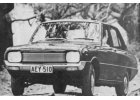 |
|
1968 - 1974
In 1968 the Mazda 1200 set a new bench mark for affordable quality in the small car segment, it then being the cheapest 4 door car on the market. The all-alloy engine was specifically designed by the Mazda engineers for the 1200, and the 73 horsepower engine was enough to push the car to 90 miles an hour, for those who dared. More>> |
 |
 |
|
1968 - 1974
The Mazda R100 Rotary Coupe was powered by the dream engine of the 1960's - an engine so small two would fit into the space of most big sixes, an engine so smooth you needed a rev counter to tell it was going. And the most amazing fact of all - it developed the horsepower of piston engines two to three times its size. More>> |
 |
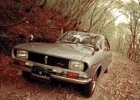 |
|
1970 - 1977
TAlthough the Mazda 1500/1800 series went over pretty well with Australian motorists, it was never a great seller in Japan. To address this, Mazda released the Capella – which they believed would be a better competitor and take the fight up to the big sellers from opposition Japanese companies Toyota, Datsun and Mitsubishi. More>> |
 |
 |
|
1970 - 1978
The Mazda RX2 is credited with being the first "normal"
car to be fitted with a rotary engine. Available as a
4 door sedan or 2 door coupe, the RX2 quickly gained
a reputation for good performance and poor petrol economy. More>> |
 |
 |
|
1972 - 1978
The good folks at Mazda have proven to be rather adept at manufacturing extrodinarily exciting cars -
today's RX8 and MX5 both being brilliant cars to drive while remaining relatively affordable. And back in 1972 the affordable pocket rockets were undoubtedly the Mazda RX2 and RX3. More>> |
 |
 |
|
1972 - 1977
The Mazda RX4, known in its home market the Luce Rotary, was one hell of a car, whether it be in sedan or hardtop form. The RX4 featured the 130 bhp Capella Wankel engine, and unlike the previous RX3, this was the very first Mazda to have been designed by Toyo Kogyo as exclusively Wankel powered. It was a bigger car than the Capella, being within a whisker of the TC Cortina in external and internal dimensions. More>> |
 |
 |
|
1973 - 1977
Mazda's 929 was their top of the range 1800cc-engined sedan - capable as a family car yet retaining just enough executive overtones to make it a little special. But 1800 was too few "cc" for those who really enjoyed their driving. If you pushed the car hard, the fuel economy would fall through the floor, and there was little to be gained anyway. Instead, the car suited those who enjoyed the gentle, easy approach. More>> |
 |
 |
|
1975 - 1977
The intelligent and advanced concept of global outsourcing
applied to the development of the Mazda Roadpacer AP offered
a high-quality small volume mass-produced vehicle with
a shortened development time and less cost in terms of
investment. Well - that was the theory. More>> |
 |
 |
|
1975 - 1981
The Mazda 121 was, to our eyes, one of the best looking cars from the late 1970s. It seemed to buck the trend of the Japanese to embellish their cars with fancy scrolls and plenty of bright work. It was obviously aimed at the American market, hence the opera window behind the door, which was a US design trend at the time, along with the pronounced grille that finds favour in the States. More>> |
 |
 |
|
1977 - 1981
The 929L's design was American inspired, with stacked rectangular headlights and a large chrome grille. A more efficient 2.0 litre L4, producing 90 hp (66 kW) with a single-barrel carb replaced the existing engines. First presented in Japan in October 1979 was a facelifted version with large, rectangular headlights and a more orthodox appearance. More>> |
 |
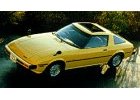 |
|
1979 - 1985
By the early 1970's Mazda had proved its commitment
to the rotary engine, in 1971 alone Mazda building over
200,000 rotary-powered vehicles. However the road for
the rotary has never been smooth, and for Mazda things
took a turn for the worse when the oil crisis of 1973 turned peoples attention to the poor fuel economy of the
rotary. More>> |
 |
 |
|
1979 - 1982
The Mazda 626 series 1 proved to be a durable and reliable
car, and was influential in developing Mazda's enviable
reputation for quality. More>> |
 |
 |
|
1979 - 1982
Our review of the Mazda 626 was penned many years ago – and it was favourable partly because we were very familiar with one particular example that proved its reliability and solid construction – engine notwithstanding. But as good as the 626 was, there was one model that really was worthy of superlatives – the Super Deluxe Coupe. More>> |
 |
 |
|
1980 - 1984
Mazda’s 4th generation 323, the BD, was released on October 10, 1980. It came hot on the heels of Mazda investing $A471 million at their Hiroshima plant during 1979 / 1980 - which had saddled the company with huge long term debt, which effectively prevented the company from joining the Japanese rush into US production. More>> |
 |
 |
 |
1988 -
The MX5 owes much to the Lotus Elan, as that is where
its designers sought inspiration - although Mazda always
wanted to ensure that its car would be more reliable
and solid than the little Lotus. They also wanted to
ensure their new sports car offered modern "sedan"
type comfort levels, despite the inevitable noise and
climate problems associated with a "rag top". More>> |
|
|
 |
|
1904
The Mercedes 70hp was powered by a huge four-cylinder engine that displaced 9230cc, the engine of course being started via use of crank-handle. Getting into the driving seat was something of an acrobatic exercise, as the floor of the car was high off the ground and there was no step. More>> |
 |
 |
|
1907 - 1914
A century ago, the owner of a Mercedes usually delegated cranking, praying and probably cursing as well to his unfortunate chauffeur. You would certainly need to be in good form to swing four cylinders totalling over 7¼ litres. More>> |
 |
 |
|
1928
Designed by Ferdinand Porsche, the Mercedes SSK is regarded
by most as the finest pre-war sports built. More>> |
 |
 |
|
1934 - 1939
Definitely one of the most desirable masterpieces in the
pre-war period, this car foresaw the trend of Mercedes-Benz
in having incomparable build quality and elegance of design. More>> |
 |
 |
|
1936 - 1953
In April 1945 Daimler Benz executives announced that
the company had "ceased to exist", however
some of the less damaged manufacturing plants fell into
the Allied occupied zone and, after as many ex-employees
could be located, production resumed on the 170. More>> |
 |
 |
|
1949 - 1955
For a diesel powered Mercedes to be successful, the engineers
needed to create a car that would perform as well if not
better than its petrol cousin. And, as always, the Mercedes
engineers succeeded. More>> |
 |
 |
|
1949 - 1955
While the design of the 170S was not actually new, in
fact its routes stretched back as far as 1936, it did
play an important role in re-establishing Mercedes in
post-war Europe. More>> |
 |
 |
|
1951 - 1956
Introduced after a showing at the Frankfurt Auto Show
of 1951, production began in July of 1951. Closely resembling
the Mercedes 170S, the headlights were instead moved to
the front fenders and the model featured much more elegant
interior appointments. More>> |
 |
 |
|
1951 - 1956
First introduced to the public at the 1951 Frankfurt Motor
Show, the 300 is important in the post war Mercedes line-up
as it represents the return by Mercedes to manufacturing
outstanding high quality and luxurious automobiles. More>> |
 |
 |
|
1951 - 1958
Simply put, these were not just good automobiles, they were great. The 170 may have helped re-establish Mercedes as a manufacturer, but it was the 300S that re-established it as the world's best automotive marque. More>> |
 |
 |
|
1953 - 1962
When the 180 was introduced in 1953, its main feature
was the new chassis design - one that used sectional steel
side members tied into the floorpan - resulting in improved
rigidity and noise reduction. More>> |
 |
 |
|
1953 - 1962
The 180D used a four door unitary bodyshell which formed
the basis for many other Mercedes saloon models. As with
all Mercedes cars the 180 was well built and offered excellent
reliability. More>> |
 |
 |
|
1956 - 1965
The new look 190 was vastly more modern in appearance,
the Mercedes designers incorporated fins for the first
time, of course fins being almost mandatory on cars built
in the early 1960's. More>> |
 |
 |
|
1956 - 1959
The 219 represented an evolution rather than an evolution,
and as is still the case with cars of today such an evolution
involved increasing the length of the wheelbase and the
power output of the motor. More>> |
 |
 |
|
1956 - 1959
The 220S sedan was the third of the new generation models
shown to the public at the Frankfurt Show in 1956. It
was also the most powerful one of the trio and the most
expensive one as well. More>> |
 |
 |
|
1958 - 1960
While production of the 220SE began in April of 1958, the model would not come to market until September, and even then the Mercedes regular production lines would not get underway until October. More>> |
 |
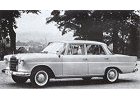 |
|
1958 - 1965
While it was usual for the Mercedes diesel model to follow the release of the petrol driven variety, it would take an astonishing 2 years for the 190D to debut. More>> |
 |
 |
|
1958 - 1968
Today there are still many "Finnies" on the
road, such was the high build quality of these cars,
and because the fins that were to date the design of
the car so quickly are now seen as an exercise in design
and beauty the 220 and 220S are appreciating in value. More>> |
 |
 |
|
1959 - 1965
As with the model it was replacing (the 219), the new
220 was available with the "Hydrak" transmission until 1961. In fact for almost a year, between 1961 and
1962, the 220 was available in manual form only until
Mercedes introduced a new "Auto" transmission as an option. More>> |
 |
 |
|
1963 - 1981
In 1961 Mercedes built the 600 to be the world's ultimate
saloon car, a luxurious Rolls Royce type car that had
no regard to cost or compromise. It offered affluent
members of society a 320 cm wheelbase and 5.5 metre four
door saloon. More>> |
 |
 |
|
1965 - 1968
Production of the "Fintail" 200 lasted until 1968 and,
during the first year of its life, was the smallest
of the seventeen models of passenger cars manufactured
by Mercedes. More>> |
 |
 |
|
1965 - 1968
It was during the production run of the 200D that the
500,000 Mercedes Diesel was manufactured - attesting to
the popularity of Diesel even back in the 1950's and 1960's. More>> |
 |
 |
|
1968 - 1974
The new model 250 broke fresh ground for Mercedes in having a new independent rear suspension using semi-trailing links instead of their famous low-pivot swing-axle. More>> |
 |
 |
|
1968 - 1974
Mercedes coupes have always been eye-catchers, the two
door design and resultant window shape making for sleek
sophistication. More>> |
 |
 |
 |
1969 - 1971
The 280SE 3.5 luxury coupe and convertible were introduced
at the Frankfurt Auto Show in 1969. The basic body style
actually dated back to the 1961 220SE model, and it was
only slightly altered. More>> |
|
|
 |
|
1972 - 1976
Overall a good, dependable and economical car, the four
cylinder motor did not have the performance of the larger
6 and V8 powered cars. More>> |
 |
 |
|
1973 - 1980
Information being compiled. More>> |
 |
 |
|
1975 - 1985
The 280E was enormously popular, thanks largely to the
sweet 6 cylinder being equipped with the Bosch K-Jetronic fuel injection system with air volume control (first seen
in the 6.9 litre monster 450SEL). More>> |
 |
 |
|
1975 - 1980
First offered in 1975, it shared the grand 600s 6.3 litre
V8 but had it bored out to 417ci/6.835Ltrs to produce
an appreciable 286hp and highway pounding 550Nm of torque.
It was and remains the biggest postwar engine mercedes
ever made. More>> |
 |
 |
|
1978 - 1985
The Mercedes "T" car was based on the popular W 123 sized sedan. It went on sale in Europe in 1977, but, as usual due to Australian Design Rules, it took until late 1979 for MB to start looking at the Australian market for the excellent luxury machine. Production for Australia originated at the Bremen plant of Daimler Benz. More>> |
 |
 |
|
1980 - 1985
Back when the 380 SEL was rolling off the Mercedes-Benz production line the car had few equals. BMW came the closest to the mark, while in a very different sphere, and Porsche was another over-engineered beast. All were German, the three of them bearing that unmistakable stamp of quality in every little feature. More>> |
 |
 |
|
1981 - 1989
The 300GD Gelandewagen four wheel drive model was Mercedes
answer to the Range Rover. Nobody had anticipated the
demand for a luxury four wheel drive, however the "Rangie"
was to prove far more successful in the showroom. Why?,
perhaps that the 300GD was such a good off-road performer
but lacked a little of the on road finesse of the Range
Rover says more about the type of people buying these
cars than the cars themselves. More>> |
 |
 |
|
1988 - 1990
The Mercedes-Benz 190E, quickly dubbed the 'Baby Benz',
brought the prestigious marque within the purchasing reach
of many. While this model featured nearly all the safety
features of its bigger brothers, and corresponding build
quality, the one model everyone seeks today is the 2.3-16. More>> |
 |
 |
|
1988 - 1991
The mighty 560SEL, the Mercedes "S" class (Sonderklasse)
flagship for 1988. Powered by the fearsome 5.6 litre
V8 producing 300bhp (220kw) the car could do 0 - 100kmh
in 7.2 seconds, presumably with the executive in the
back remaining blisfully unaware that his chauffer was
having a fang! More>> |
 |
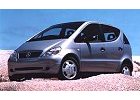 |
|
1997 - 2005
Mercedes' decision to apply its engineering genius to
totally new formats - rather than the further refinement
of established designs saw its ultimate realization with
the A-class. More>> |
 |
 |
 |
1997 -
The M-class, another part of Mercedes' dash for diversification,
was designed to enter the booming 4x4 (SUV) sector and
to succeed by addressing the problems inherent in the
majority of 4x4 designs. More>> |
|
|
 |
|
1954 - 1957
For the Mercedes enthusiast, the 300SL represents the
"Holy Grail". It is beautiful, old and extremely rare,
but probably the biggest appeal (apart from the blistering
performance) comes from the unique "gullwing doors"
and the spaceframe chassis. More>> |
 |
 |
|
1955 - 1963
The only 4 cylinder SL built (modern SLK's excluded),
this was a far simpler (and far less expensive) alternative
to the 300SL. More>> |
 |
 |
|
1957 - 1963
Almost identical to the Mercedes "Gullwing"
Coupe, the roadster had a lower door line that made entering
and exiting the vehicle much easier, something that the
rich and famous females that had fallen for the Coupe
had ultimately decreed as 'ungainly'. More>> |
 |
 |
|
1963 - 1967
The 230, 250 and 280 SL model Mercedes are still regarded
today as the pinnacle of German styling, quality and engineering.
Always popular with women, these fabulous cars boasted
fine handling, road holding and a surprisingly sporty
auto transmission. More>> |
 |
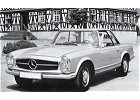 |
|
1966 - 1968
The 250SL was only in production for one year, and was
soon replaced by the larger engined 280SL. This has lead
to some debate amounst Mercedes fans as to which model
is the more collectable, the superior performing 280SL
or the low volume 250SL. Certainly from a rarity point
of view, the honours must go to the 250SL. More>> |
 |
 |
|
1967 - 1971
In November 1967 Mercedes released the last SL to use
the M129 body, the 280 SL - a car which most collectors
regard as the best of the trio. More>> |
 |
 |
|
1970 - 1980
Introduced early in 1971, this impressive two-seater sports
car replaced the 280SL. The body and chassis of the 3rd
generation SL was considerably heavier and longer than
its predecessor, but still showed a slight resemblance
to them. More>> |
 |
 |
|
1971- 1980
Some 360mm longer than its SL twin, and weighing approximately
50 kilo's more, the SLC featured a "useable"
rear passenger seat, and an even larger boot. But even
though it was larger than the 107 convertible, it was
substantially shorter and lower to the ground that the
outgoing 280SE model. More>> |
 |
 |
|
1973 - 1980
The main reason for the release of the 450SL was to enable
Mercedes engineers to cope with more stringent US anti pollution legislation. In fact, the increase in engine
size was necessitated out of the engines loss of power
after the anti-pollution gear was attached. More>> |
 |
 |
|
1974 - 1981
The smaller motor made the 280SL lighter, indeed 85 kilos
lighter than the 350SL!, and with the weight advantage
came a better handling motor car - many believing the
6 cylinder variants were indeed sweeter and sportier.
We wont enter into the debate, the desirability of a R107
280SL today speaks for itself! More>> |
 |
 |
|
1974 - 1981
The delightful 280SLC was released at the same time as
the 280SL, and in coupe form featuring the highly efficient
smaller capacity DOHC six cylinder engine gives this model
the honours for the most fuel efficient 107 model ever
released. More>> |
 |
 |
|
1980 - 1985
By the time the 380SL was introduced to the market, some
85,000 R107 body shape roadsters had been produced since
the introduction of the 350SL in 1970/71. More>> |
 |
 |
|
1980 - 1981
By the time the 380SLC was introduced to the market, some
54,000 R107 coupes had been produced since the introduction
of the 350SLC in 1972. Although 85,000 SL's had been produced
by the same time, no one could question the popularity
of the SLC model! More>> |
 |
 |
|
1980 - 1989
For the first time you could option your SL to have ABS,
but most importantly for a car with sporting aspirations
the new model featured much better acceleration times,
0 - 100 km/h now taking just 7.8 seconds. More>> |
 |
 |
|
1980 - 1989
Interestingly, the new model 500SL and SLC's engine developed
the same horespower rating as the legendary 300SL from
almost 30 years prior. Even acceleration times were
near identical, the new model SL and SLC beating the
older model by only .6 of a second, attaining 0 - 100
km/h in 8.1 seconds. More>> |
 |
 |
 |
1988 - 1992
Fitted with an electro-hydraulically operated top as well
as a hard top, the vehicle also had an automatically operated
roll bar - activating within 0.3 seconds when a critical
situation registered. More>> |
|
|
|
|
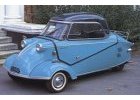 |
 |
1955 - 1964
Information being compiled. More>> |
|
|
 |
|
1935 - 1936
Cecil Kimber and his small team at Abingdon had a flair for designing, and producing cheaply, small, fast sports cars which caught the public imagination - and have held it for decades to come. "Kim" was so successful that the MG became the world's best-known and best-liked sports car. Even today, to many people MG means "sports car". More>> |
 |
 |
|
1945 - 1955
American servicemen stationed in England loved the TC
so much that they took them back home with them giving
America a taste for European sports cars that it never
lost. More>> |
 |
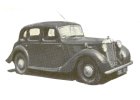 |
|
1947 - 1953
Post war cars which offered a little extra in the way of equipment, refinement and construction were bound to develop a keen following, and earn respect; and few could match this quality better than the MG Y 1¼ Litre saloon. More>> |
 |
 |
|
1954 - 1969
Designed by Gerald Palmer (of Jowett Javelin fame), the new MG featured modern Italian influenced styling, and was powered by the then new 1.5 litre (1489cc) B-Series engine. More>> |
 |
 |
|
1956 - 1961
Seen as the first modern post war MG, the A used much
of its inspiration from the Austin A50 saloon. More>> |
 |
 |
|
1961 - 1980
Originally designed by Donald Healey and his team, the car may have started life as an Austin-Healey Sprite, but was always manufactured by the MG Car Company at its factory in Abingdon, Berkshire. MG developed and improved the Sprite to the point where they felt it was fit to be known as the first post-war MG Midget. More>> |
 |
 |
|
1962 - 1968
The MG Sports Sedan was loaded with features – and it needed to be, given the marques badge was adorning what was very obviously an Austin/ Morris. Of course the Morris 1100 sported plenty of engineering innovation - making it one of the most advanced and practical cars then on the road. Although styled by Pininfarina, it did look pretty much like a box on four wheels. More>> |
 |
 |
|
1962 - 1980
With sales of more than 500,000 the MGB is arguably one of the most successful sports cars ever. It differed from the earlier model, the MGA by using a lighter construction shell. Its torque was excellent, but its 95 bhp at 3,000 rpm was viewed as credible, but not outstanding. It could manage 160 km/h and was safe and handled well. More>> |
 |
 |
|
1967 - 1969
Some of the very people that had called for more horses to better exploit the MGB chassis were now calling the new iteration a dud. Today more far-sighted enthusiasts appreciate what the car has to offer - they are now extremely valuable and highly collectable. More>> |
 |
 |
|
1973 - 1976
MG began offering the MGB GT V8 in 1973 utilising the aluminium-block 3528cc Rover V8 engine, first fitted to the Rover P5B, and subsequently used in the A-body platform Buick Special, Oldsmobile F-85 and Pontiac Tempest. At the time, the sweet spinning engine was the lightest mass-production V8 in the world, with a dry weight of only 144 kg, and was about 27 kg lighter than its 4-cylinder counterpart. More>> |
 |
 |
 |
1982 - 1989
Awakened by the outburst of criticism that greeted their closing of the MG factory, British Leyand revived the name by adding the famous octagon to a high-performance version of the Metro - arguably a highly unlikely donor car for performance aspirations. More>> recommended reading: Frazer Tickford Metro |
|
|
|
|
 |
|
1966 - 1970
It was easy to like the Colt 1100. Unlike many other small cars on offer, the little Mitsubishi had a vivacious personality, it not only being able to reward the enthusiastic driver, but also allowing the more complacent to remain as little affected by the atrocious Australian road conditions of the time - far beyond what any small car should. More>> |
 |
 |
|
1973 - 1979
Mitsubishi's Colt Lancer was another of those cars which, like Ford's Escort, was available in many different formats ranging from basic and economical transport to models with considerably better performance and specification. At the bottom of the twelve car Lancer line-up was the 1200 two-door Populaire. More>> |
 |
 |
|
1976 - 1983
Coinciding with the finalisation of Mitsubishi
Motors takeover Chrysler Australia was the
release of the first front-wheel vehicle sold by
either company in Australia. Mitsubishi's association
with Chrysler both here and in America went back
the better part of a decade, during which time
Mitsubishi has supplied cars to Chrysler either
in knock-down form or fully assembled to sell under
the Chrysler name. Chrysler also manufactured in
their Australian plants various Mitsubishi based
models under licence. More>> |
 |
 |
|
1976 - 1985
The elegant Sapporo was top of the Colt range in 1979; developed from the Colt Sigma it bore a strange resemblance to Tovota's pre-1978 Celica design. Under the skin there were very few surprises. The suspension was by MacPherson struts with anti-roll bar at the front, and the live rear axle was located by four trailing links angled to give a measure of lateral location as well. More>> |
 |
 |
|
1977 - 1983
At its introduction in late 1977 the Sigma was the same
car as that was made and sold in Japan, but attention
to customer feedback enabled Mitsubishi to tailor the
Sigma for local conditions. Inside and out, the range
underwent significant improvement over the years. But
it was the 4th generation model released in 1980 that
represented the most significant improvements for Australian
conditions – it even taking out the Car of the
Year award in New Zealand. More>> |
 |
 |
|
1977 - 1983
The downsizing trend which Mitsubishi exploited and increased
with their wildly successful Sigma inevitably made itself
felt in the wagon market. The GL and SE Sigma fours proved
strong competition for such stalwarts as the Toyota Corona
and the Datsun 200B. The GL wagon was available with
a 2.0-litre Astron engine which could be equipped with
a four or five-speed manual or three-speed automatic,
or with the 2-6-litre Astron which was available as a
four-speed manual or a three-speed automatic. More>> |
 |
 |
|
1978 - 1982
The Super Shift was a clever idea, and if one treats the range-change system as an overdrive system rather than an eight-speed gearbox, it made a whole lot of sense. The cost was minimal - and a conventional overdrive unit from the era could not be used on a transverse engine arrangement anyway. The British car industry must have realised the opportunity they let pass, namely the Laycock "sandwich" overdrive, which fitted between the clutch and gearbox, and was actuated by the clutch pedal. It too was installed on an unlikely front wheel drive car, the Triumph 1300. But Mitsubishi put it into production. And that why we remember it. More>> |
 |
 |
|
1980 - 1986
By 1980 the concept of the “People Mover” was gaining in popularity. The front bench seat was pretty much a thing of the past, which meant the traditional family wagon only had the ability to carry 5 – inevitably it was grandmother that would miss out on seeing the kids at their local sporting events. In a stroke of genius, Mitsubishi realised that their hitherto commercial van could be suitably adapted to fill the role of a family car. It was a brilliant idea. More>> |
 |
 |
 |
1982 - 1990
1982 was a notable year for Mitsubishi; after the introduction of the Lancer Turbo, with its advanced engine technology, the company spread the turbo influence throughout its range, with Turbo versions of the Galant, Sapporo, and even the little Colt. More>> |
 |
 |
 |
1982 - 1991
The first generation made its debut at the Tokyo Motor Show in October 1981, and was launched in May 1982. Initially, it was a three-door, short-wheelbase model available with a metal or canvas top and three different engines options, although more were gradually added, ending with a 3-litre V6 on top of the range. More>> |
 |
 |
|
1981 - 1985
The Mitsubishi Sigma Scorpion was originally released
in 1977, and underwent several model updates and
engine changes to keep it at the forefront of the
then “under $10,000” coupe market.
The Scorpion was powered by Mitsubishi’s
proven 2.6-litre 'Silent Shaft' four cylinder engine,
never an motor to set the world on fire but a reliable
and tractable unit that offered plenty of torque
across the rev range. But it was on the outside
that the Scorpion differed from the run-of-the-mill
4 cylinder also-ran’s of the late 1970’s
and early 1980’s. More>> |
 |
 |
|
1983 - 1986
The sweet 1.8 was tractable and smooth, giving the turbo version sparkling performance combined with exceptional fuel economy - provided you resisted the temptation to sink the boot. The Cordia Turbo was particularly popular with young drivers, and it was that very temptation that so often proved too hard to resist. Over the years, finding an example that had not been thrashed and trashed proved increasingly difficult. More>> |
 |
 |
|
1984 - 1986
When Mitsubishi's front-wheel-drive 1.8-litre Cordia Turbo hit the market there was plenty of competition in the turbo hot hatch/sedan market. Forced induction cars included the Saab 900, Porsche 930, Peugeot 505 (avec diesel), Nissan EXA, Volvo 760, Daihatsu Charade, Nissan Pulsar ET, and finally, from their own stable, the wonderful Mitsubishi Starion. More>> |
|
|
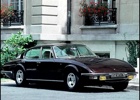 |
 |
1973 - 1974
The Monica 560 was a clean sheet design and was built-up from a completely bare workshop floor. It was the brainchild of one of France's top industrial magnates - Jean Tastevin, who wanted to give his country a real prestige car - something France had lacked since the demise of the Facel Vega which was never really successful. More>> |
|
|
|
|
 |
|
1955 -
This car, like all Morgans, used a simple ladder-frame
chassis, sliding pillar front suspension and ash framing
for its steel or light alloy bodies. More>> |
 |
 |
 |
1968 -
Production of the Morgan Plus 8 has seen over 4,000 cars
being built to date. Like the 4/4 there still exists a
waiting list of several years as demand for this unique
car is still healthy. More>> |
|
|
 |
|
1948 - 1954
By the late 1940's Morris desperately needed new models
to put on the showroom floor. The cheaper and more economical
version was to become immensely popular, the Morris Minor
MM, but the Oxford made its debut at the same time and
has, for those that are not Morris fans, become somewhat
forgotten. More>> |
 |
 |
|
1948 - 1971
Seen as the outstanding economy car of its time, the Morris
Minor was a best seller as well as being long standing
car in terms of production. More>> |
 |
 |
|
1955 - 1958
When the Isis was released, the Nuffield organisation emphasised that in developing the Isis - their first six since pre-war - they kept Australia well in mind. And, when judged against other cars available here in Australia at the time, they actually made a very good job of it. More>> |
 |
 |
|
1957 - 1960
The Marshal was manufactured by the British Motor Corporation (Australia) between 1957 and 1960, being a Morris branded version of the Austin Westminster which was marketed by BMC Australia's Austin dealers as the Austin A95 Westminster. The Marshal was offered as a 4-door sedan and as a 5-door station wagon. More>> |
 |
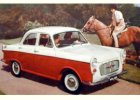 |
|
1958 - 1964
The Morris Major quickly developed a stellar reputation for reliability and durability, and even a hint of sporting prowess given their appearance in the 1960 Armstrong 500. To many people's surprise, a Morris Major would place 4th, it being driven by Peter Manton and Barry Topen. More>> |
 |
 |
|
1961 - 1963
The Mini may have been released in the UK in 1959, but it would take BMC's local operation until 1961 to have the then named Morris 850's rolling off the production line here in Australia. More>> |
 |
 |
|
1962 - 1973
Another Alec Issigonis success story, the Morris 1100
was the saloon version of the already hugely popular mini.
For its time, it was also extremely sophisticated, bristling
with technical features for car of its size. More>> |
 |
 |
|
1969 - 1973
The somewhat conservative character of the 1100 underwent subtle changes which gave a more aggressive, rugged appearance. Tyre size was increased, rims were slotted and the stainless steel surrounds for the side windows were scrapped, all of which added a certain amount of masculinity to the styling. More>> |
 |
 |
|
1971 - 1984
Many consider the Marina suffered a cursed life as industrial
difficulties within the British motoring industry were
to lead to compounding reliability and build quality
problems. And of course this was to pave the way for
the Japanese manufacturers, using their system of "total quality
control", to enter the Australian marketplace. Buyers
deserted the British car makers in droves, the rest remains
history. More>> |
 |
 |
|
1975 - 1978
Many of Crayfords earlier convertibles severely lacked torsional rigidity. The same could not be said of the Mumford Marina, the secret of success being undoubtedly the roll-over bar. Because Mumfords did not touch the running gear, there is little point in dwelling on the characteristics of the Marina in general except to say that it, too, was a "sow's ear". More>> |
 |
 |
 |
1980 - 1984
The Morris Ital was a remodelled Marina, penned by noted Italian stylist Giorgietto Giugiaro of Ital Design. Reintroduced in mid-1980, and without drastically reworking the four-door sedan body (the two-door Coupe body was discontinued) the Ital was given a new look by redesigning the front end with a greater fall away, fatter bumpers, bigger rear light and so on. More>> |
|
|
|
|
 |
 |
1984 - 1986
Production of the original MG TF from MG's Abingdon works ceased in 1955, but such was the aura that surrounded that car that a Yorkshire based car builder, Naylor, created a TF replica in the 1980s so faithful to the original that you could have (almost) been forgiven for thinking it was the real thing. The main concessions extended to a more modern engine, plus some chassis modifications and modern-day safety requirements. More>> |
|
|
 |
|
1960 - 1961
The Nissan Cedric was a vehicle of exceptional quality,
its only serious problem was that it was given one of
the most ridiculous names in the history of the motor
car. More>> |
 |
 |
|
1962 - 1975
The 31 series featured a new front end treatment, with
the headlights now mounted horizontally inside a new cast
alloy grille. It had a metal dash board with two large
round dials. As with the previous model, there was a choice
of two engines, the 1488cc 71hp OHV 4cyl. G series engine
or the new 1883cc 95hp OHV 4cyl. H series engine. Available
in 4 door sedan (31) and 5 door wagon (WP31). More>> |
 |
 |
|
1963 - 1965
The Cedric Special was a long wheel base version of the
Cedric 30 and Cedric 31 series. The extra length was needed
to accommodate the 2825cc 118hp OHV 6 cylinder K series
engine. Distinguishing it from the lesser Cedric's was
the different grille and lashings of extra bright-work. More>> |
 |
 |
|
1965 - 1970
The 130 series featured a whole new look for the Cedric.
The new body was designed by Italian stylist Pininfarina,
and was available with several different engines. There
was the 1983cc 99hp OHV 4cyl. H20 engine, the 1992cc 109hp
OHV 6cyl. J20 engine or the 1998cc 112hp OHC 6cyl. L20
engine. The Special 6 had a twin carb. version of the
L20 engine producing 123hp. More>> |
 |
 |
|
1967 - 1968
Nissan didn't wait long to instil some magic into the GT Prince after its take-over of this smaller Japanese company. The car didn’t lose from the merger - in A200 GT form it had gained. The ideas were almost certainly from the competition prone Prince side of the organisation but the money, the incentive and the backing were equally as attributable to Nissan. More>> |
 |
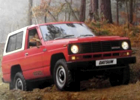 |
|
1980 - 1989
Over the years Nissan did very little to a design it got right to begin with. Occasionally a headlight or indicator were moved, and an extra instrument added to the dash, but that was about all. Back then, you really had to know Nissans to pick a 1968 model from a 1979 example. But that all changed in June 1980, when Nissan announced their new Patrol. The new model was officially called the Datsun Patrol, in deference to Nissan's normal product tag. More>> |
 |
 |
|
1983 - 1987
The Pulsar will be remembered in the anals of automotive history as brilliantly mediocre, however there was one particular Pulsar that was far from being forgettable. Right from the get-out, the EXA received a positive reception and went a long way to establishing the credentials of compact turbocharged performance cars that we all take for granted today. More>> |
 |
 |
|
1983 - 1988
For its time, the Gazelle was a modern, elegant and feature packed vehicle that, from an engineering perspective (both in exterior design and mechanically), stood head and shoulders above the rest. There are too few cars from the 1980's that remain appealing, most designs mimicking a "box-on-wheels" approach. The Nissan Gazelle is a rare exception. More>> |
 |
 |
 |
1989 - 1996
Following in the tradition of the hugely successful Datsun
240Z and 260Z, Nissan's third generation 300ZX started
a new wave of attack to the high-performance GT segment. More>> |
 |
 |
 |
1990 - 1995
The Primera may have been a Nissan in name, but for all intents and purposes it was a European car. The Primera, a car only loosely descended from the Tokyo Show car of the same name, was designed not just with Europe in mind, but with a specific focus on what the European consumer wanted. More>> |
|
|
 |
|
1958 - 1961
In 1955, the NSU engineering department was instructed
to build a new small car. Reportedly some seven and a
half million marks were borrowed to build an entirely
new plant for the project. Two years later, the new model
was revealed to the public at the 1957 Frankfurt Auto
Show. More
>> |
 |
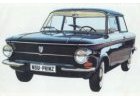 |
|
1961 - 1972
The NSU Prinz IV replaced the original Prinz (I
to III) in 1961. The Prinz was considerably shorter than
the NSU 1000, particularly in the rear, with the engine
compartment encroaching on the rear seating area. Like
its predecessor, the Prinz IV was powered by a 2-cylinder, air-cooled engine, the drive train and, some thought styling,
very similar to the Chevy Corsair. More
>> |
 |
 |
 |
1967 - 1977
Development of the RO80 began in 1961, with the car being
officially shown six years later at the 1967 Frankfurt
Auto Show. Originally to have a two rotor engine with
2 x 300 cc capacity, this was increased in size for the
production of the vehicle to 2 x 497 cc. More>> |
|
|
 |
|
1938 - 1948
The Oldsmobile of 1940 was the kind of car Cary Grant could have driven in one of his movies to reflect his screen image - a car of quality, sophisticated but not ostentatious. The Oldsmobile signified that its owner had attained a level of success that a Chev or Pontiac did not adequately represent. And while another GM Division asked, "Wouldn't you really rather have a more expensive Buick?". More>> |
 |
 |
|
1954
Designed during 1952 and 1953, the Oldsmobile F-88 was a
Corvette-inspired descendant of the 1953 Starfire, finished in brown metallic duco with pigskin upholstery, and powered by a 250 bhp 324 V8. The F-88 featured cone-shaped clear plastic headlamp covers and a functional hood scoop. More>> |
 |
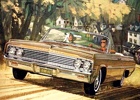 |
 |
1961 - 1964
The 5th generation Dynamic 88 hit the showrooms across the USA in 1961. The new cars featured an all-new body and chassis with perimeter "Guard Beam" frame and all-coil suspension replacing the previous leaf springs highlighted the 1961 full-sized Oldsmobiles, which were joined by the new compact F-85. More>> |
 |
 |
 |
1961 - 1963
General Motors began developing its first compact cars in 1956, beginning with the Chevrolet Corvair. The following year a second series of somewhat larger cars was planned for Buick, Oldsmobile, and Pontiac, what would be termed "senior compacts." They would share the same body shell and lightweight engine. Oldsmobile designer Irving Rybicki began work on the Olds model in 1957. It finally went on sale in 1960 as a 1961 model. More>> |
 |
 |
 |
1964
Oldsmobile widened their sales horizons in 1964 with a new Jetstar 88 series. Offering four models (a four-door sedan, Holiday four-door hardtop, a two-door hardtop, and a convertible), the Jetstar 88 weighed in with a price between the F-85 and the Dynamic 88 series. Yet it was a full-sized Oldsmobile, sharing the 123-inch wheel-base of the Dynamic 88. Model for model, its price was $75 to $100 less than the Dynamic 88's. More>> |
 |
 |
 |
1965 - 1970
It may not have been America's first front-wheel-drive car, but in 1965 it was the only locally built version, and better still, it was blessed with superior traction and roadholding properties, combined with powerful acceleration, and offered a 126 m.p.h. limit with extraordinary quietness and mechanical refinement. More>> |
 |
 |
 |
1965 - 1970
1965 was a big year of change for GM’s Oldsmobile Division. As you would expect every full-sized GM product got new bodies and trim, but Oldsmobile received more than that. Inside, outside, under the hood - even the chassis – everything was redesigned. Thus, the Dynamic 88 Delta was an entirely new car. It fitted between the Dynamic 88 and the 98 series, replacing the Super 88. More>> |
 |
 |
 |
1968
After Oldsmobile discontinued the triple-carburettor 1-2 engine option of 1957 - 1958, they sort of left the "car" business as far as performance enthusiasts were concerned. They'd been the builder until then, striking first in 1949 with the hottest set of wheels to roll off a production line in a decade. More>> |
|
|
 |
|
1970 - 1975
Released in September 1970, the Manta A may have beaten the Opel Ascona to the showrooms by 2 months, but it was always a rearguard action by GM to try and break the dominance of the Ford Capri. And in the Capri mould, the Manta was a two-door "three-box" coupe. In the UK market the first Manta was sold only as an Opel: there was no Vauxhall-branded Manta (or Ascona) until after the launch, in 1975, of the Manta B1 and Ascona B. More>> |
 |
 |
|
1973 - 1979
The General Motors 'T-CAR' had been put into production, in one form or another, in countries as far apart as North America and Japan, South America and Australia, in addition to Great Britain and Germany. In terms of total numbers built between 1973 and 1979, it was unarguably one of the most successful designs of all time. More>> |
 |
 |
|
1973 - 1979
The Kadett C appeared in 1973, and was Opel's version of GM's 'T-Car', it being built in Japan by Isuzu and rebadged for the European market as the Kadett, and in Australia as the Holden Gemini. More>> |
 |
 |
|
1975 - 1978
As good as the Opel Kadett was, unfortunately the City version was rather forgettable. It tried to be all things to all people, and in doing so was over-compromised. Too cramped to be a serious four-seater, too rakish to carry practical loads and too sluggish to be truly sporting, the best the City could ever hope for was to corner the youth market seeking a stylish hatchback runabout with good economy. More>> |
 |
 |
|
1975 - 1988
With the release of the 2nd generation Manta there were three models, the De Luxe 1600, the Berlinetta 1900 and the 1.9 SR. The SR fell in the middle of the range in most export markets, and had several fittings over and above the standard equipment of the De Luxe, such as extra instruments, opening rear quarter windows and halogen lights. More>> |
 |
 |
|
1978 - 1994
The Senator first appeared at the 1977 Frankfurt Motor Show, but it did not become available until May of 1978. With it Opel moved into the luxury car market with a vengeance providing very stiff opposition to the rival BMWs and Mercedes. A revised and more powerful version of Opel's in-line six-cylinder engine was chosen for the new car, and it was available in 2.8-litre or 3-litre forms. More>> |
 |
 |
|
1978 - 1994
Opel's Monza coupe utilised the mechanical components of the Opel Senator along with which it was introduced in 1978, and thus it was a fairly conventional mixture of a straight-six, overhead-cam engine driving the rear wheels, with semi-trailing-arm rear suspension and MacPherson strut front. More>> |
 |
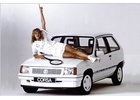 |
 |
1982 - 1992
The third phase of Opel's move towards front-wheel drive, following the Kadett in 1979 and the Ascona in 1980, the Corsa enables General Motors to attack a segment of the market which was previously closed to them, that of the supermini. More>> |
|
|
 |
 |
1960 - 1963
OSCA offered four basic versions of one concept, with side items to order for a price. Even then, all four 1600 GT models used the same chassis and motor with two kinds of shell and three stages of tune. Dimension-wise the line rested on a twin-tube frame of 88.6 in wheelbase, with 50/48 in track front and rear and overall length of 153.5 in. More>> |
|
|
 |
 |
1966 - 1975
The new model went into production on the 19th December 1966, these first iterations using the 1200cc Cortina engine. In October 1968 this was replaced by the 1300cc Kent engine, a much stronger and more reliable unit. Then in 1969 the dashboard gauges were updated with a new design and their positions were changed, even the steering wheel was given an ergonomic overhaul. More>> |
|
|
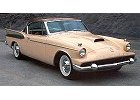 |
 |
1958
There was but one highlight in the amalgamation of Packard
and Studebaker - the Hawk. More>> |
|
|
 |
 |
1999 -
Under the control of Horacio Pagani, a composite and dynamics
specialist, Pagani's curriculum vitae is impressive with
machines like the fabled Lamborghini Countach Evoluzione
to his credit. Pagani Automobili's first model is the
Zonda, an exquisite piece of automotive engineering available
in either Berlinetta or Roadster configurations, the former
having been developed through several incarnations. More>> |
|
|
 |
 |
1948 - 1954
For Australians, the Panhard Dyna X was interesting 2 cylinder model. The sole representative in Melbourne of the Dyna Panhard made an interesting study for its ingenuity. Obviously of French origin, it was that it was built to a design influenced by France's era of severe austerity when motoring was a very expensive business in which everyone still wanted to be able to indulge. More>> |
 |
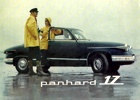 |
 |
1959 - 1965
Victory by Panhard in the Performance Index and in the Fuel Economy classification at the 1959 Le Mans could not have been better timed for Panhard, who introduced a successor to the Dyna sedan a few days later. The PL 17 was a replacement for the Dyna, which was introduced in 1954. Advanced for the time, the Dyna had initially featured aluminium panels but later switched to steel – and unfortunately the PL 17 stuck to the steel formula. More>> |
 |
 |
 |
1964 - 1967
The 24CT had four headlamps recessed behind streamlined fairings and the roof was supported on slim pillars giving good all-round vision. There were exceptionally comfortable seats for two adults, plus two seats for children and a lot of luggage space. But underneath the then modern exterior was a mechanical set-up that had not changed fundamentally from that of the little Dyna Panhard sedans. It had a flat twin air-cooled engine hung out in front and driving the front wheels. More>> |
|
|
 |
 |
1972 - 1981
These days we are somewhat accustomed to seeing modern interpretations of models long gone, such as the new Mini, Beetle and even the iconic Ford Mustang. Wind the clock back 4 decades and it seemed car makers were hell bent on designing for the future, and never looking back at the glorious past. And into this void, makers such as Panther-Westwinds found a ready market. More>> |
 |
 |
 |
1976 - 1982
By the time that the Lima had been released, Panther West Winds of Byfleet, Surrey (UK) had established a reputation for building exciting cars in the upper price bracket which had excellent standards of finish, blistering performances and a 'vintage' air about them. Cars like the J72, De Ville and Ferrari FF sold well but the company needed a cheaper and more readily available product for the masses. The Lima was the answer. More>> |
 |
 |
 |
1977 - 1978
When the Panther Six hit the showrooms, it joined the ranks of the more established exotic car manufacturers such as Ferrari, Porsche. Maserati, Lamborghini, Jaguar and Aston Martin. Manufactured by the British company Panther Westwinds, the Panther Six specification sheet was awe inspiring. More>> |
 |
 |
 |
1986- 1990
The Panther Solo should have had a longer life. It was good, and the design that went into the car made it a Ferrari 308 but at less than half the Ferrari price. Futuristic looking with very clean uncluttered styling, the mid-engined two-seater coupe, similar in proportions to Lancia's Montecarlo, originally went on sale in 1986. More>> |
|
|
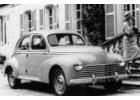 |
|
1948 - 1960
From 1948 to 1954 the Peugeot 203 was the sole model
in the Peugeot lineup, but what a beauty it was.
At Unveiled at the Paris Motor Show in October, the
new Peugeot represented the first totally new post-war
car, and in the process Peugeot adopted a unique
model policy. More>> |
 |
 |
|
1955 - 1966
For the size of the car - a six- seater - the 1.5-litre engine at first appeared on the small side. When driving the car its lack of cubic inches was not noticed (except that fill-up stations need rarely be visited). The 403 came with an enlarged version of the Peugeot 203's 1290cc petrol engine - it was oversquare, bore and stroke being 80 mm. x 73 mm. giving a capacity of 1468cc. More>> |
 |
 |
|
1960 - 1975
The build quality and strength of the Peugeot 404 was
superior to many, if not most, of its rivals. The suspension was capable of soaking up bumps on the roughest of roads,
it was fitted with an economical and bullet-proof 1.6
litre engine mated to a sturdy 4 speed transmission (when
most rivals had only a 3 speed). More>> |
 |
 |
|
1965 - 1975
The first fuel injection version of the Peugeot 404 engine was introduced in 1962, initially only for the Pininfarina cabriolet. The following year came an alternative installation for a Super Luxe version of the four-door saloon. Since the 404's introduction, the Peugeot engineers continued development work to the point that it seemed they were intent on releasing an entirely new car! More>> |
 |
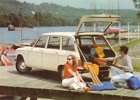 |
|
1965 - 1970
During the development of the 204, the French press managed to keep the public keyed up with a barrage of tantalizing rumours. The 204 was officially revealed by Peugeot in December 1964, it clearly following the lead of the B.M.C. 1100 and later Autobianchi Primula in having its 4-cylinder engine placed east-west. More>> |
 |
 |
|
1966 - 1970
We could say of the 204 coupe that is was stylish, innovative, practical and very economical. But there are many others that will quickly point out the lack of mumbo under the bonnet, and instead describe it as a wheezing underpowered try hard, that promised so much in design, and delivered so little on the bitumen. More>> |
 |
 |
|
1969 - 1984
During its tenure, the Peugeot 504 would become one of
the oldest cars on the Australian market – but
even as it neared the end of its production life it was
still considered to be among the world's best ten sedans.
Originally released in Europe in 1968 and in Australia
in 1969, it was, world wide, the largest selling model
of Peugeot. The 504 was assembled by Renault Australia
from knock-down kits at Renault's Victorian plant. More>> |
 |
 |
|
1969 - 1984
That the Peugeot 504 is not such an uncommon sight on the roads today goes to prove the durability of the fine French auto. But from a styling point of view, the Peugeot 504 is and was a plain, not-quite-pretty French sedan with a relatively big body (inside and out) for its engine size. More>> |
 |
 |
|
1969 - 1984
The 505 was one of the revelations of the early 1980's, it defining affordable quality and, in STi form, relatively good performance. Top of the range was the "Executive" sedan, which featured a distinctive two-tone paint job that was popular at the time, as well as a long list of standard features that most other manufacturers referred to as optional extra's. More>> |
 |
 |
|
1975 - 1985
The Peugeot 604 is not particularly collectable, however for the time it was refined and well polished in most areas. Disappointing then that the main feature of the car, the V6 engine, was such a let down. Build quality problems added to the cars woes. Sales, which were never particularly strong, dipped in 1980 following the launch of the 505, and the last 604 rolled off the production line in 1985. Peugeot's next major executive car, the 605, was launched in 1989. More>> |
 |
 |
|
1976 - 1988
When it was introduced, the Peugeot 104 was the smallest of the then current range, sizing up at only eleven-foot-long - but despite its size (or perhaps because of it) many believed it was one of the better Peugeots for those that liked driving, and the best of the 104 range was the ZS. More>> |
 |
 |
|
1979 - 1985
Like many diesel engines of the time the Peugeot 604 Turbo Diesel was hard to start in the cold weather. In nearly all cases the problem could be overcome by some minor tweaks to the glow plugs and compression. This problem in itself was not enough to tarnish the 604 Turbo-Diesels reputation, but sales were never particularly strong. The last 604 rolled off the production line in 1985. Peugeot's next major executive car, the 605, was launched in 1989. More>> |
 |
 |
|
1979 - 1985
With the introduction of the Peugeot 305 in 1977 the slightly angular look of the smaller Peugeots vanished; the 305 had, for the time, both a stylish and conventional look which, we are assured, became more attractive the longer you looked at it. It was designed by Pininfarina, an all-steel monocoque affair which strongly resembled the BMW 3-Series of the time. More>> |
 |
 |
|
1984 - 1994
The Peugeot 205 GTi can be considered the first true "Hot
Hatch", with a beautiful Pinnifarina styled body
and amazing performance it was at the time "King
of the Hot Hatch". More>> |
 |
 |
|
1984
Undoubtedly, the emergence of Peugeot 205 T16 represented
a new generation of Group B cars, taking engine technoogy
to new heights in both power output and torque, a recipe
that would quickly see the demise of Group B rally cars. More>> |
 |
 |
|
1987 - 1987
In July 1987 Peugeot unveiled ten versions of the 405 simultaneously for the 1988 model year, with sales on the European continent beginning before Christmas, and sales in the UK beginning in March. Deliveries began in October 1987 for the sedan, and May 1988 for the wagon. More>> |
 |
 |
 |
1994 - 2003
Information being compiled. More>> |
|
|
 |
 |
1957 - 1961
The Vespa 400 made its public debut on 26 September 1957 at a press presentation staged in Monaco. The ACMA directors ensured a good attendance from members of the press by also inviting three celebrity racing divers to the Vespa 400 launch. The 400 was a two seater with room behind the seats to accommodate luggage or two small children on an optional cushion. More>> |
|
|
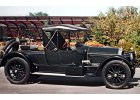 |
 |
1913
In the years of opulence before the First World War, reputations were being forged in America's luxury car market. One successsful survivor of a time when many firms failed was the Pierce company, established in 1901 in Buffalo, New York State. More>> |
|
|
 |
 |
1970
Always intended as an "idea car", if itt have of made production it would have been a potent one, with 550 bhp of fuel injected V12 under its shapely tail panels. The Modulo was first shown at the Geneva Motor Show in March 1970, and in modified form in Turin the following October. More>> |
|
|
 |
|
1958 - 1960
Featuring in Stephen King's horror flick "Christine" did little to enhance the reputation of the Plymouth Fury as a sought after classic for the collecting connoisseur, nevertheless it remains as one of the finest examples of stylist Virgil Exner's 'Forward Look' period at Chrysler, a watershed in 50's contemporary design. More>> |
 |
 |
|
1958 - 1960
While many cars have benefited from the aerodynamic enhancements added to cars to make them suitable for the race track, probably of most note in Australia being the Torana A9X, the Plymouth Road Runner takes the award for having the most ridiculous aerodynamic enhancements, putting even the Subaru WRX bonnet scoop to shame. More>> |
 |
 |
|
1964 - 1966
Released only 2 weeks before the Mustang, the stylish 2 door Barracuda coupe was really only a tidied up version of the Valiant 4 door sedan, however it did feature a dramatic fastback roofline incorporating a large wrap-around rear window. More>> |
 |
 |
|
1965 - 1967
When a new, larger Plymouth Fury was introduced for 1965 on Chrysler's full-size C platform, the Plymouth Belvedere name was moved to Plymouth's "new" mid-size line which was really a continuation of Plymouth's full-size 1962– 1964 models. The Belvedere Satellite was the top trim model in the series, above the Belvedere I and II. More>> |
 |
 |
|
1968
The Road Runner was the simplest, starkest, most brazenly pure, non-compromising super car in history. But it was this very simplicity that American muscle car aficionados would soon realise was very much a virtue. By 1968 the super cars had been around for a while, but the ’68 Road Runner was one of the first that had really come of age. More>> |
 |
 |
|
1978 - 1990
Following the release of the Simca Horizon, which was sold in Europe as an intermediate model between the 1100 and the Chrysler Alpine, Chrysler released the Horizon in the USA - a rather different car carrying a Plymouth badge. More>> |
 |
 |
 |
1984 - 1990
What made the Voyager special was the fact that it was "garageable". Prior to 1984, American built people-movers, including the first Chrysler people mover to use the Voyager moniker, were "full-size", and whilst offering capacious seating and space for a family as big as the Brady Bunch, their main drawback was that they were too large to fit through a standard height garage door. More>> |
|
|
 |
 |
1967 - 1991
On the face of it Fiat's decision to sell advanced car technology to Poland, in the shape of a licensing agreement whereby the Fabryka Samochodow Osobowych would build a version of the popular Fiat 124 model, was a dangerous move; there was always the very real risk that cheap imports would flow from Eastern Europe undercutting every manufacturer, including Fiat. More>> |
|
|
 |
|
1954 - 1966
GM’s Pontiac division made a concerted effort to gain a host of new owners in 1956. How they went about getting more sales was apparent from driving any of the ’56 models, or from watching the changed philosophy in advertising. For many years, Pontiac were very quiet about performance; but this changed in 1956 when they openly bragged about "Power to Go.” The boasting was justified. More>> |
 |
 |
|
1958 - 1986
For most of its life, the Parisienne was the Canadian nameplate for the Bonneville, sold in Pontiac's Canadian showrooms, while American Pontiac dealers sold the Catalina, Ventura, Star Chief and Bonneville (the Catalina and Ventura were also available in Canada). More>> |
 |
 |
|
1959 - 1960
The Catalina, though it was the lowest-priced full-sized Pontiac, was still a substantial step up from the Chevrolet Impala in trim and appointments and only a short step below the Buick LeSabre and Oldsmobile 88 in trim and appointments but priced about $100 to $200 less. More>> |
 |
 |
|
1961 - 1964
The 1961 full-sized Pontiacs were completely restyled with more squared-off bodylines, the reintroduction of the split grille first seen in 1959 and dropped for 1960 and an all-new Torque-Box perimeter frame with side rails replacing the "X" frame chassis used since 1958. The new frame not only provided greater side-impact protection than the "X" design but also improved interior roominess. More>> |
 |
 |
|
1965 - 1970
The 1965 full-sized Pontiacs were completely restyled with more flowing sheetmetal featuring "Coke-bottle" profiles and fastback rooflines on two-door hardtops. Wheelbases increased to 121 inches (3,100 mm) on all models. A new three-speed Turbo Hydramatic automatic transmission replaced the previous Roto Hydramatic unit on full-sized Pontiacs for 1965. More>> |
 |
 |
|
1971 - 1976
In 1971 the mid-level Executive was discontinued and replaced with the Catalina Brougham, which offered a more luxurious interior trim than the regular Catalina. The Brougham was dropped in 1973 after its sales failed to meet expectations. 1972 also marked the final appearance of the Catalina convertible. More>> |
 |
 |
|
1977 - 1981
In 1977, Pontiac and other GM divisions downsized their full-sized cars in an effort to lighten weight and improve gas mileage. The Catalina continued as Pontiac's entry-level full-size automobile with a Buick-built 231 cubic-inch V6 now standard in sedans and coupes (Safari wagons came standard with V8 power) and optional V8s of 301 CID, 350 CID and 400 CID displacements, each Pontiac-built engines and offered in all states except California. More>> |
 |
 |
|
1961- 1964
The Laurentian, like the Parisienne, were GM Canadian model line nameplates - and as such they were never sold in the the USA. Built specifically for the Canadian market, they were soon being exported from Canada as disassembled "crate" or "CKD" cars. It was from these "CKD" kits that GM Holden assembled the Laurentian in Australia, as did New Zealand, the Netherlands and South Africa. More>> |
 |
 |
|
1964 - 1974
In the two years following the release of the Pontiac
GTO every car company tried to emulate it, but none were
able to match the combination of style, performance, and
mystique. More>> |
 |
 |
|
1967 - 1969
There is an interesting story behind the creation of the
1967 Pontiac Firebird. Then head of the Pontiac Division
was John Delorean, who had envisioned a much sportier
car to compete with the Ford Mustang. More>> |
 |
 |
|
1967 - 1969
Like a dog big in the bollock department, the Pontiac had an edge over all of its rivals. It was an aura of excitement about the car, and its boldness, a car happy to wear its underpants on the outside. No other muscle car of the time had the audacity to plant an optional tachometer in a waterproof pod out on the hood. More>> |
 |
 |
 |
1970 - 1976
Perhaps the most dissappointing of the re-design was that
the new model no longer came available as a convertible
- perhaps a true muscle car could not be marketed successfully
as a drop-top. For whatever reasons, the Firebird lineup
was reduced from six to four. More>> |
 |
 |
|
1970 - 1981
Since the introduction of the first Firebird, exhaust emission control regulations and changing fashions resulted in a much tamer and more sophisticated vehicle for the 2nd generation Pontiac. By 1979 the Firebird Trans Am had acquired a particularly stylish body, and the styling was helped by the intelligent application of flexible and resilient mouldings to give minor crash protection. More>> |
|
|
 |
|
1938 - 1939
The Type-64 was only a drawing until the three racing cars were built. The body was also a compromise in that the cab had to look like a KdF car, but the rest was 'record' car. The VW beetle was the Type-60, and the name the "60K10" means body design 10 for the Type-60 Beetle. Its flat-four engine produced 50 bhp and gave a top speed of around 160 km/h (99 mph). More>> |
 |
 |
|
1950 - 1965
Perceived as a rather dumpy-looking rear-engined sports
car, the 356 was modelled on the VW Beetle which was also
designed by Ferdinand Porsche. Early editions of the 356
had split windscreens and an 1100cc flat four motor that
produced a mere 40 bhp. More>> |
 |
 |
|
1964 - 1973
Released in 1964 this triumph of development over design
is still as popular as ever. Despite many variations the
pre-1974 are perceived as the best classics of this model.
It is interesting to note that if it had not been for
Peugeot, who had patented all three digit number configurations
that contained a Zero (0) in the middle, the 911 would
have been instead the 901. More>> |
 |
 |
|
1969 - 1975
Born from a misconceived concept by Porsche to build an
affordable sports car for the masses, the 914 was launched
in 1969 using a Karmann-built targa top. Using the Volkswagen
sourced VW411 motor (producing 80bhp), its top speed
was a laclustre 107mph / 171kmh. More>> |
 |
 |
|
1969 - 1972
After years of co-operation, Volkswagen and Porsche decided to launch a "combined" sports car in late 1969. Bearing the name VW -Porsche the new car was mid-engined, with an option of the 1.77 litre electronically-injected four-cylinder VW engine, or the two-litre Porsche "911 "six". More>> |
 |
 |
|
1975
So what do you do if you've got a body-less sports-racing Porsche on one hand, a $50,000 budget in the other, and an obsessive desire to own an 'ultimate' street car? For Jack Zimmer the answer was simple. More>> |
 |
 |
|
1975 - 1985
The 924's life started as a VW, its powerplant and gearbox
came from Audi. The 924's 2L fuel-injected engine came
from Audi's 100 saloon. Porsche was designing its own
front engined model, the 928, at this point, but it appeared
after the 924 in 1977. More>> |
 |
 |
|
1978 - 1995
For 17 years, this Porsche headed the model line-up in
luxury and power. The 928 was a tourer; only offered as
a 2-door coupe with a big V8 engine. The concept of the
928 originated in 1971. The model was first shown at the
Geneva Auto Show in March of 1977. By this time, the 928
was ready and running. More>> |
 |
 |
|
1979 - 1985
The 924 had a humble beginning when you consider the donk was derived from the 2 litre unit used in a Volkswagen van. Of course the engineers went to work on that engine so that, by the time it was installed in the engine bay of the 924, there was little resemblance. But the 924's chassis was always cring out for more power - so how did the 2 litre cope with 10 psi of turbocharger boost? More>> |
 |
 |
|
1982 - 1991
The 944 was an overhauled version of the 924 and was everything
the 924 wasn't right from the start. As a result of the
944's release, Porsche decided to withdraw the 924 lineup
from the US market(the 924 came back to the US market
six years later as the 924S model). More>> |
 |
 |
 |
1987 - 1991
The 944 was an overhauled version of the 924 and was everything
the 924 wasn't right from the start. As a result of the
944's release, Porsche decided to withdraw the 924 lineup
from the US market(the 924 came back to the US market
six years later as the 924S model). More>> |
|
|
 |
 |
1974 - 1991
It was said of kit cars during the 1960’s that they were sheep dressed as tigers. This was true, and proved the major reason for buying one. However it was also said of kit cars that the mechanicals and suspension were so poor that you could hear them coming ten minutes before they arrived. But Alan Purvis worked tirelessly on overcoming the “kit car” reputation, thereby making a place for the Eureka in the Australian market. More>> |
|
|
|
|
 |
|
1947 - 1961
The first French car to reach the 1 million sales figure,
the Renault 4CV was manufactured from 1946 to 1961, it
being inspired by the economy and design of the Volkswagen
Beetle. During World War 2 and with Germany occupying
France Renault was under very strict instructions to
design and manufacture military and commercial vehicles. More>> |
 |
 |
|
1951 - 1960
Most commentators of the day felt the Fregate was Renaults
attempt to move "up market", an ambitious attempt
given the company was still under the control of the
French Government following its incestuous relationship
with the 3rd Reich. More>> |
 |
 |
|
1951 - 1960
THE Renault Domaine featured simple, straight-forward lines without the frills and unnecessary bright work that so many of its contemporaries had. Better still there was an honest 80 cubic feet of loading space with the rear seat folded, to catch a bit of the station-wagon business then booming in many parts of the world. More>> |
 |
 |
|
1956 - 1968
The Dauphine was, like its predecessor the 4CV, a unibody
constructed vehicle. The Dauphine however, was a four
door sedan with conventionally opening doors, unlike
the
"suicide" doors of the 4CV. More>> |
 |
 |
|
1959 - 1968
Renault entered the American postwar market in 1949 with
the small 4CV sedan. This car struggled with its tiny
760cc 19-bhp rear-mounted, water-cooled engine. With
a top speed of around 55 mph it was almost unsalable
in the US resulting in only 1400 sales in that time declining
to 374 by 1952. In 1953 Renault made some changes of
adding the 110 ¼ inch wheel base, 60 bhp Fregate
sedan but it was priced nearly $400 more than a Buick
special, so it never got off the ground. More>> |
 |
 |
|
1961 - 1993
The Renault 4 was the first car with a fifth door, and
thus it was the first true hatchback. Today it remains
the most produced French car ever, reaching production
figures over 8,000,000... More>> |
 |
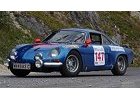 |
|
1963 - 1973
It was when Renault put a modified 1600 cc. engine borrowed
from the R16 that the Alpine became a world beater, taking
the first 3 places in Monte Carlo Rally in 1971 and World
Rally Championships in 1971 and 1973. More>> |
 |
 |
|
1963 - 1971
At the time, many journalists thought the R8 was a step
backward for Renault as they had, the previous year, released
the R4 with a more traditional front engine / front-wheel
drive configuration. What Renault engineers banked on
was the continuing popularity of rear engined cars in
the European market. More>> |
 |
 |
|
1964 - 1979
When Renault introduced its model 16 in December 1964
the concept of a five-door saloon was very new. It used
a rear hatchback door with fold-down rear seats and although
it had awkward styling, at the time it was unique. More>> |
 |
 |
|
1968 - 1979
The Renault engineers had done far more than simply bore the motor out a little, and the 16TS remains an object lesson in how to make something good something great. More>> |
 |
 |
|
1968 - 1971
The Renault 6 was designed to supersede the Renault 4,
and part of its design brief was that it should be larger,
better looking and more luxurious - and thus more expensive. More>> |
 |
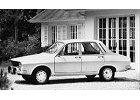 |
|
1969 - 1980
The Renault 12 featured very modern styling (for 1969!)
which had clean, straight-cut lines featuring a classic
"3 box" layout of four doors and a boot - however it
was never as good as the Renault 16. More>> |
 |
 |
|
1965 - 1971
If you took the time to take more than a casual glance at the Renault 10, you would quickly realise just how magnificently proportioned and well engineered this wonderful car was, its sleek thoroughbred lines, its discreet touches of chrome. It was beautiful, elegant and restrained, a beauty that was so typically French. More>> |
 |
 |
|
1971 - 1980
The Renault R17 TS had all the right GT credentials: injected engine, five speed gearbox, four-wheel disc brakes, and distinctive styline. The car did an honest 110 mph, ignored cross-winds and smoothed out rough surfaces well. That augered well, but there was an achillies heel - the Renault 2+2's of the era were prone to understeer, but the R17 TS was the equivalent of a snow plough. More>> |
 |
 |
|
1971 - 1984
The successor to the Alpine A110 was the A310, initially powered by tuned 17TS/Gordini four-cylinder engine, still rear-mounted. The maximum power reaching 127 PS (93 kW; 125 hp), thanks to the use of 2 twin-barrel 45 DCOE Weber carburetors. But by the time the new model was released, France was no longer renowned for building spectacular motor cars. More>> |
 |
 |
|
1972 - 1996
It was Renault's first supermini, and its most prominent feature was its styling by Michel Boue (who died before the car's release), which included a steeply sloping rear hatchback and front fascia. More>> |
 |
 |
|
1973 - 1979
Given the Renault 16TS had been released in 1968, to some extent the car had dated, however the TX remained a fascinating car nevertheless. More>> |
 |
 |
|
1975 - 1981
On April 25th, 1975 the Renault 30TS went on sale in its native France, offering more of everything than any modern Renault, and signalling to the rest of the world that the French factory intended to continue offering highly individual machinery throughout their range. More>> |
 |
 |
|
1975 - 1984
The Renault 20TL was equipped with the 1647cc push rod four, similar to the unit used in the 16TL and 17TS. In what was, by European standards, a large car, the engine was overstressed and underpowered, and this was born out in the mediocre performance and fuel consumption figures. A happy medium was reached when an overhead-camshaft 1995cc engine was installed in that same body shell to produce the 20TS. More>> |
 |
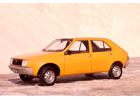 |
|
1976 - 1983
The 14 was designed for utility and comfort rather than high speed and brisk performance. The all-alloy transverse mounted, overhead cam engine of 1281 cc produced a hardly startling 57 bhp at 6000 rpm. What was disappointing was the very rubbery and vague feeling of the gear lever and linkages which made the gearbox feel like a unit from the pioneering days of front wheel drive - uncharacteristically disappointing from Renault. More>> |
 |
 |
|
1978 - 1983
The Renault 12 was introduced to Australia in 1970. A decade later it was finally superseded by a new model, but one that took Renault to an entirely different price group, and far away from the cheap-and-cheerful entry level. The Renault 18GTS had been introduced on French soil a few years earlier ( 1978), and for European buyers it was offered in basic TL form, powered by the same 1397cc engine fitted to the Virage. More>> |
 |
 |
|
1982 - 1987
The Renault American Alliance was more than just a new car at its release. Indeed many considerred it to be an important political event, marking the strong return of Renault to the American market through the medium of its relationship with American Motors, which built the Alliance - an Americanized R9 - in its plant at Kenosha, Wisconsin. More>> |
 |
 |
|
1980 - 1984
Set on fully exploiting their turbo image, the Regie Renault started to a modified R5 for Group 4 in 1975. Not only was the car intended to be a challenger in the World Rally Championship, it was also to be sold to the (sporting) public in detuned form, and was to embody a 'silhouette' look relevant to the front-drive/front-engined R5 hatchback so that the homme dans la rue could identify with the new car. More>> |
 |
 |
|
1980 - 1984
By no stretch of imagination could Renault's pre 1980 coupe range be deescribed as an overwhelming success. But things were about to change, with the release of a new semi-sporting two-door series which the big French manufacturer made great efforts to combine good looks with technical refinement. More>> |
 |
 |
 |
1986 - 1994
It had never been fashionable in France to knock the Regie, even when it was in dire difficulties in 1984-85, and Renault's return to full health was never in any doubt; only the speed at which this resurgence had been achieved. The 21 Turbo was a fine car - and ushered a new era of performance Renaults that we enjoy to this day. More>> |
|
|
 |
 |
1983 - 1985
Using a complete Holden 1 Tonne chassis made the Perrenti a solid beast, particularly given the body was fibreglass. The doors would open as you would expect from any mainstream manufacturer, and the rigidity helped prevent the "as loose as a sailors buttons on shore leave" characteristic typical on lesser quality kit cars. More>> |
|
|
 |
|
1926 - 1938
The Riley Nine was the most popular of the pre-war Riley’s
ever made, and with good reason. Enjoying a long production
run lasting from 1926 to 1938, the Nine would undergo
various mechanical and body style changes along the way,
under the direction of two of William Riley’s five
sons, Percy and Stanley. The mechanics, particularly
the engine, were handled by the older Percy, while Stanley
was responsible for the chassis, suspension and body. More>> |
 |
 |
|
1933 - 1935
Like the Kestrel on a smaller scale, the Riley Falcon was a stylish four seater, far roomier inside and aesthetically far superior. Sitting proudly at the front was the Riley badge, which housed the axiom of " As old as the industry, as modern as the hour," perched on the traditional honeycomb grille ahead of the louvered bonnet. More>> |
 |
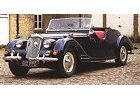 |
|
1945 - 1954
These Riley RM's were at once liked for their graceful and flowing lines, well appointed and comfortable intereiors, brisk performance and good road manners - all of which impressed the motoring journalists and road testers of the time. More>> |
 |
 |
|
1953 - 1957
Powering the Pathfinder was Riley's 110 hp (82 kW) 2.5 Litre 2443 cc twin-cam, straight-4 engine fitted with twin SU carburettors, an engine that had been designed way back in 1926. Performance was excellent, the Pathfinder capable of a top speed of nearly 100mph, making it very popular with British police constabularies. More>> |
 |
 |
 |
1961 - 1969
The Riley Elf and Wolsley Hornet were upmarket versions of Sir Alexander Issigonis's masterpiece, the Mini. The distinctive grille was the standout feature, while the tail received its own makeover, which included extending the length so that the car looked much more like a typical saloon. More>> |
|
|
 |
|
1907 - 1926
Undeniably an elitist car - particularly in the 1920's,
the Silver Ghost's chassis alone cost approximately US$5000
- or roughly 10 times that of a fully complete Ford Model
T. More>> |
 |
 |
|
1959 - 1965
For the £9,000 price tag you didn't simply ride in comfort and enjoy plenty of standard kit, moreover it was the way you felt and the uplift to the morale, enabling you to make bigger, better decisions, ignoring the trivialities and diversionary influences. More>> |
 |
 |
|
1959 - 1965
Available from 1957, the Silver Cloud Long Wheel Base
(lwb) was designed to be Chauffeur driven, with its four
inches of extra length allowing for a glass division to
be fitted behind the front seats. More>> |
 |
 |
|
1965 - 1980
Launched in 1965 the Silver Shadow represented a massive
leap forward for Rolls-Royce. The new car had an all new,
modern monocoque bodyshell, hydraulic, self levelling suspension and all round, split circuit disc brakes. More>> |
 |
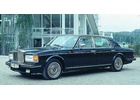 |
 |
1965 - 1980
The 1980 Rollers were longer, lower and wider than their preedecessors, but it is of note that they were 're-skinned' models using the pushrod ohv light alloy V8 engine that had by then now powered three diffferent marks of Rolls-Royce car products. More>> |
|
|
 |
|
1948 - 1949
Tim Brownell in How to Restore your Collector Car (1984)
wrote, "True 'Classics' are defined by the Classic Car
Club of America as follows: fine or unusual. motor cars
built between and including the years 1925 and 1948,
distinguished for their respective fine design, high
engineering standards and superior workmanship. Strictly
speaking, classics are distinguished by special styling
or mechanical features not found in run-of-the-mill cars." More>> |
 |
 |
|
1954 - 1959
Conceived as a lower price alternative to the Rover 75,
the Rover P4 (60) was fitted with a 2 litre four cylinder
overhead inlet/side exhaust valve engine producing 60
bhp. More>> |
 |
 |
|
1963 - 1973
AFTER the experience of their strong efforts in international rallying, Rover took a bold step forward from their familiar image as manufacturers of the gentleman's auto when the 2000 was introduced in 1963. Instead, the accent was on the sportsman's saloon, so naturally only a manual 4-speed gearbox was fitted initially. More>> |
 |
 |
|
1967
AFTER the experience of their strong efforts in international rallying, Rover took a bold step forward from their familiar image as manufacturers of the gentleman's auto when the 2000 was introduced in 1963. Instead, the accent was on the sportsman's saloon, so naturally only a manual 4-speed gearbox was fitted initially. More>> |
 |
 |
|
1967 - 1973
The Rover P5 3 Litre range had established itself as one
of the best selling British luxury cars of the Sixties.
By 1967 the 3 Litre was beginning to show its age and
a new powerplant was needed, enter one the famous British
engines of all time, the Rover V8. More>> |
 |
 |
|
1963 - 1977
Rover announced one its most radical production designs
in 1963, the Rover 2000.With futuristic looks, the body
used an innovative "base unit" unitary bodyshell which
then had unstressed body panels bolted onto it. More>> |
 |
 |
|
1968 - 1977
Rover introduced the V8 version of the P6 in April 1968 as the Three Thousand Five saloon, a designation it would carry until late 1970 when it became known as the 3500. More>> |
 |
 |
|
1976 - 1986
The Rover 3500 V8 represented a major advance on its
predecessors. The David Bache designed hatchback was
well situated in performance, looks, and economy, and
helped bring back perhaps some lost prestige and desirability
to the famous British marque. But what made the 3500
so great was that, while broadening Rover’s appeal
to other buyers, it never alienated the traditional Rover
die-hards. More>> |
 |
 |
|
1977 - 1986
To many people it seemed strange that Rover should have bothered to produce two smaller engined versions of the 3500 - and many thought the 2600 alone would have served to capture sufficient customers down-market from the 3500. In truth the 2300, while certainly not really slow or laboured, did lack the flexibility of the 2600, and road testers of the time often commented that the class of the car was somewhat compromised. More>> |
 |
 |
 |
1981 - 1985
Quality components were used throughout, typical of the Honda quality at the time. A Pioneer stereo cassette/radio was standard, as was timber trim, although the latter was pretty obviously only a veneer. The seats were well shaped and finished in a Moquette cloth trim, they complementing the wonderfully supple ride of the larger Civic. More>> |
 |
 |
 |
1986 - 1988
What was happening to Rover in the mid 1980s? The company was remembered for being one of the first to get an experimental automotive gas turbine up and running with the T3 coupe in 1956, and it made a big impact on world car design with the introduction of the brilliant Rover 2000 model in the 1960s, which featured de Dion rear suspension and advanced body design. More>> |
|
|
 |
|
1960 - 1980
Project 93C, as it was known within Saab, culminated in
the announcement of the new Saab 96 at a Stockholm press
conference on 17 February 1960. More>> |
 |
 |
|
1970 - 1974
One of the rarest of Saab’s is the Sonett III – an exceptionally good looking car that featured an aerodynamic shape that looks modern today – not bad for a car first released in 1970. The styling of the Sonett III was by former Ghia designer Sergio Coggiola. There was considerable input, however, from Gunnar Sjogren. More>> |
 |
 |
|
1972 - 1978
The SAAB 99 EMS (Electronic-Manual-Special) offered a firm, positive ride that lacked the softness of the best French systems of the era, but it did come close to achieving the same suppleness. Looking back on the car today, it is best described as a restful, smooth, fuel-injected two-litre engine ran out effortlessly to the redline of 6200 rpm. More>> |
 |
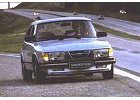 |
|
1979 - 1993
The Classic Saab 900, manufactured from 1979 until 1993,
remains to this day a very popular car with many thousands
having been sold around the world. More>> |
 |
 |
 |
1980 - 1993
The Classic Saab 900, manufactured from 1979 until 1993,
remains to this day a very popular car with many thousands
having been sold around the world. More>> |
|
|
 |
 |
1953 - 1963
The SEAT 1400 was a rear-wheel-drive four-door sedan mid-size car launched by the Spanish car maker SEAT between 1953 and 1963, the first model ever produced by SEAT and the first car to be assembled at the firm's new plant located in Barcelona's Zona Franca zone. The car was a rebranded Fiat 1400, itself Fiat’s first integrated chassis model. More>> |
 |
 |
 |
1999 - 2001
Featuring a more powerful 2.0 litre engine (instead of
the standard 1.6 litre unit) producing a healthy 110
kw, the Cupra benefited from a very attractive colour-coded
body kit, sports seats, 16" alloy wheels, white background
gauges, ABS, EDS traction control, air-conditioning and
of course the regulation rear spoiler. More>> |
|
|
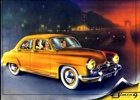 |
|
1951 - 1955
The first Aronde debuted in the spring of 1951 but initially only a few hundred pre-production cars were distributed to carefully selected "guinea-pig" buyers, and the full production version was finalised only in time for the Paris Motor Show, becoming available for sale in October 1951. More>> |
 |
 |
|
1955- 1958
The second-generation Aronde debuted in October 1955. Externally it had an updated 9 Aronde body, with restyled front and rear ends. More importantly, the new Aronde was powered by the 1290cc Flash engine. New trim levels, marketed as Elysée and Montlhéry (named after the Autodrome de Montlhéry) appeared. More>> |
 |
 |
|
1959- 1963
When launched, the Simca Montlhery was the hottest four-cylinder model Simca made. The engine was good for 62 hp at 5200 rpm, 74 ft/lbs of torque at 2500 rpm, 48 hp/litre, and an 87 mph top speed. Simca named the Montlhery after the banked oval outside Paris, where one of these cars ran to post a bagful of endurance marks. More>> |
 |
 |
|
1962 - 1978
The Simca 1000 was an immediate success when it was
launched at the 1961 Paris Salon, winning a huge
allegiance of fans and enjoying a wonderfully long
production run of 16 years, in which time some 1.6
million would be made. More>> |
 |
 |
|
1962 - 1971
The outside was a true high-point of Bertone's Italian art, with grace, vision, maturity and beauty. There were wrap-around bumpers front and rear and the back was quite as neat as the front, a rare feature in a coupe from the era. Inside, the dash was simply finished too, but they didn't skimp on a single thing you might have needed. More>> |
 |
 |
|
1963 - 1975
When the 1300 was released, Simca insisted that it was an addition to the line, and not a replacement for the Aronde. With the 1300, Simca managed to build around the healthy five-bearing 1300 engine a body with more space and much more modern styling, with good attention to detail. More>> |
 |
 |
|
1963 - 1975
The Simca 1500 was a strictly conventional model with a sedan body which adhered faithfully to then current styling conventions, but managed to achieve a certain distinction through purity of line and absence of non-functional ornamentation. It also made for far more luggage space, with only minor annoyance from the rear wheel wells. More>> |
 |
 |
|
1967 - 1982
Following on from the success of the Simca 1000, the 1100 would provide Simca with the perfect platform to allow export sales. The result of "Project 928", design of the 1100 had stated back in 1962 under the watchful eyes of engineers Philippe Grundeler and Charles Scales, being first shown at the Paris Auto Show in 1967. More>> |
 |
 |
 |
1975 - 1979
The Simca 1307 was launched in July 1975. A modern, front-wheel drive hatchback, it was one of the first such cars in that class, along with the Volkswagen Passat, and became the 1976 European Car of the Year. It was a classic front-drive, medium-sized, five-door hatchback family saloon. More>>
|
|
|
|
|
 |
|
1934 - 1946
There were many iterations of the popular "Popular",
Škoda's very successful car of the decade for
Europe in the 1930's. Initially released as the 906,
there was a quick succession of models including the
907, 908, and 917 up to 1938. The first example was fitted
with a rather insipid 1 litre engine, which would increase
in very small increments during the life of the vehicle. More>> |
 |
 |
 |
1970 - 1980
Before the advent of the Estelle, the 11OR coupe, a two-door sports version of the popular 110 four-door saloon, was the top of the Skoda range. The coupe used an 1107 cc four-cylinder engine that produced 52 bhp at 4650 rpm and 64lb ft at 3500 rpm. It succeeded the sporty Skoda 1000 MBX/1100 MBX. More>> |
 |
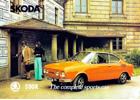 |
 |
1970 - 1980
Before the advent of the Estelle, the 11OR coupe, a two-door sports version of the popular 110 four-door saloon, was the top of the Skoda range. The coupe used an 1107 cc four-cylinder engine that produced 52 bhp at 4650 rpm and 64lb ft at 3500 rpm. It succeeded the sporty Skoda 1000 MBX/1100 MBX. More>> |
 |
 |
 |
1976 - 1990
Since the 1950's Škoda had been making small
but tangible inroads into the Australian marketplace,
at first with the conventionally and very ungainly
(and unattractive) Octavia and Felicia models. But
thankfully the 120L was an entirely different proposition,
it being based on the old Renault R8/10 range - meaning
that, if but nothing else, the Škoda would
now be more reliable than its forebears. More>> |
|
|
|
|
 |
 |
1939 - 1958
The success of the Champion in 1939 was imperative to Studebaker’s survival following weak sales during the 1938 model year. Unlike most other cars, the Champion was designed from a "clean sheet", and had no restrictions caused by necessarily utilizing older parts or requiring the subsequent use of its components in heavier vehicles. Market research guided the selection of features, but a key principle of "weight is the enemy" was used. More>> |
 |
 |
 |
1957 - 1959
To this day the Studebaker Hawk series has intrigued car enthusiasts. Are they really sports cars, or did the beautiful Continental lines cover just another sloppy old Detroiter? The Silver Hawk was a simplified version of its Golden cousin. Externally the car featured the then popular fins and wrap-around details, but they were subtly blended into a shapely whole. More>> |
 |
 |
 |
1962 - 1963
Built at the direction of Studebakers then president Sherwood Egbert, the Avanti Coupe was manufactured between June 1962 and December 1963. After the demise of Studebaker, the Avanti would go on to gain iconic status with enthusiasts, and underwnet ongoing custom production by a succession of entrepreneurs. More>> |
 |
 |
 |
1962 - 1964
The idea for the Studebaker Super Hawk was born at Bonneville in January 1963 when Andy Granatelli, Studebaker Corporation vice president in charge of the Paxton Products Division, put an R-2-powered GT Hawk through a series of high-speed runs over the salt that netted a top mark of 140.23 mph for the flying mile. More>> |
 |
 |
 |
1962 - 1964
Rebounding from a failed merger, Studebaker introduced
the compact Lark and with that success, the beautiful
new Gran Turismo Hawk in 1962, styled by Brooks Stevens. More>> |
|
|
 |
|
1958 - 1970
As cars have become cheaper, it is easy to forget that
there was a time when the average car represented a huge
capital investment for the average person, and cars in
Japan could easily cost more than the average house!
So it was that in the mid 1950's, the engineers at Fuji
Jidosha (later Fuji Heavy Industries) set about creating
a low cost car "for the masses". More>> |
 |
 |
|
1966 - 1969
Aimed at the domestic Japanese family car market (the car was not exported), the Subaru 1000 was available in two-door, four-door or station wagon body styles. Subaru were becoming well known for their flat-four water-cooled engine in the front driving the front wheels, in this case the engine developing 55 bhp net from 977cc. More>> |
 |
 |
|
1969 - 1971
That the Subaru FF-1 was an outstanding product of Fuji Heavy Industries Ltd., helped ensure the marques success both here in Australia, and the world. At its introduction in 1969, prices ranged from $1895 tax paid, cheap but certainly not nasty. More>> |
 |
 |
|
1971 - 1979
While Fuji Heavy Industries has gone on to manufacture
high quality, high performance and extremely well polished
cars today, during the 1970's the Leone was not all that
well sorted. The car lacked refinement, NVH was high,
the seats uncomfortable and the frameless doors added
to the feeling of the car being very "lightweight
and tinny". Soon rust would become the early model
Leone's biggest enemy, and seeing one on the roads today
would be an extremely rare occurrence. More>> |
 |
 |
|
1972 - 1979
The flat-four engine of the Subaru provided drive to the front wheels only, until four-wheel-drive was required. The extra drive could be engaged at any speed up to 80 km/h, however a warning light reminded the driver that the four-wheel option was intended for use only on soft ground; the Subaru did not have the luxury of a central differential. More>> |
 |
 |
|
1974 - 1979
After only a few short years of distribution in Australia,
Subaru quickly garnered a level of enthusiasm rarely
found in Australia for Japanese cars, although it certainly
nowhere near that for the revered Aussie sizes and bent
eights. Most found the Subaru simply “unusual and
mechanically interesting”, and who could blame
them. More>> |
 |
 |
|
1975 - 1979
One of the best things about the Subaru GFT coupe was its engine noise. At anything above 4000 rpm it emitted a sort of rapid-fire resonance which made it sound more like a five-litre sports sedan than a Japanese econo-coupe. The GFT resembled the GSR only until the tacho needle crossed the 4000 mark at the top of the dial. Then the engine noise built up until at the 6400 rpm redline. More>> |
 |
 |
|
1982 - 1989
Unlike today, buying a good quality small car in the 1980's was not so easy. Those in the know will tell you that there was one stand-out car, the zippy little Subaru Sherpa. The car had quickly become the micro-mini market leader in the Japanese domestic market, and with good reason. More>> |
 |
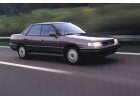 |
|
1989 - 1993
The first generation Subaru Liberty was introduced
in 1989 as both a 4 door sedan and wagon. The name
of Liberty was chosen for the Australian market
over the overseas name of Legacy, owing to the
Legacy organisation in Australia which assists
war veterans and their families. More>> |
 |
 |
|
1994 - 1998
In 1994 Subaru released the Generation 2 Liberty. The
new model carried over the conservative styling, with
most commentators of the day describing it as an evolution
rather than a revolution. This was something that, until
now, had been the styling methodology applied to car
design by the more prestigious European marques, and it
seemed totally out of character for a Japanese manufacturer. More>> |
 |
 |
|
1999 - 2003
In 2001 Subaru released the wonderful (read awesome)
Liberty "B4". Powered by the EJ20B 69H turbocharged,
intercooler, DOHC, 16-valve, 2-litre engine (it being
the same basic design as the engine found in the Impreza
WRX and the Generation 1 Liberty RS), the B4 quickly
became king of the wagons, a real drivers car with blistering
performance. More>> |
 |
 |
|
2004 -
In 2003 Subaru released the Generation 4 Liberty. The
styling of this model was a further evolution, exuding
both elegance and simplicity of form from an understated
profile of clean lines, reminiscent of the current crop
of Audi's. More>> |
 |
 |
 |
1992 -
The first WRX was launched in 1992 as the (far) hottest
version of the very-ordinary Impreza sedan. Powered by
a turbocharged 2.0-litre 16-valve boxer engine and putting
all 240 horsepower to ground via the permanent 4-wheel
drive, it immediately established itself as true drivers
vehicle and modern classic. More>> |
|
|
 |
|
1948- 1954
The Sunbeam Talbot 90 was launched in 1948 along with the smaller-engined Sunbeam-Talbot 80 but many features dated back to the pre war Sunbeam-Talbot 2 Litre. The body was completely new and available as a four-door saloon or two-door drophead coupé. More>> |
 |
 |
|
1955- 1967
The Rapier's price was not low by any means, but because of its attention to detail, performance and general roadworthiness, it was at the time very much a car above the ordinary. In factors of safety, handling and performance the Rapier appealed to those who admired the Gran Turismo type of vehicle while for the average motorist it was is a car which had appeal because of its overall running economy and ease of maintenance. More>> |
 |
 |
|
1959 - 1968
Styled by Kenneth Howes, the second generation Alpine
was launched in 1959 and was based on the contemporary
Hillman Minx. More>> |
 |
 |
|
1964 - 1968
Introduced in 1964, its soul was a V-eight version of
the four-cylinder Sunbeam Alpine whose attractive open
body dated from 1959. More>> |
 |
 |
|
1967 - 1972
The Sunbeam Stiletto is a rare car indeed, with only around 9000 being manufactured between 1967 and 1972. The first iterations were known as the 301 series, manufactured by the Rootes group. More>> |
 |
 |
|
1967 - 1976
A decade after launch the Sunbeam Rapier had changed little externally, however all that was to change with the launch of the beautifully styled Fastback Coupe, which is today a highly sought after classic. More>> |
 |
 |
 |
1977 - 1981
The Chrysler (as it then was) Sunbeam "hatch window" was introduced in 1977, and was evolved in a hurry from mainly Hillman Avenger components to produce a new model quickly. More>> |
|
|
 |
|
1977 - 1984
The original Suzuki Hatchback was marketed as a commercial
vehicle; the reason was simple, at the time the government
was enforcing a strict quota on imports, however “Commercial” vehicles
were not subject to the quota. Besides, referring to
is as a commercial vehicle also helped explain the
little Suzuki’s lack of creature comforts and
utilitarian nature. The Suzuki Hatch was far from being
a beauty to behold, with styling rather like the Honda
Scamp, however it was powered by the diminutive 543cc
three-cylinder engine. More>> |
 |
 |
 |
1977 - 1984
When the four-wheel-drive market boomed in the late 1970’s,
never before had so many people discovered so much leisure
time – and this was the cue for the full scale
invasion of the Japanese light car manufacturers. Almost
overnight many turned their attentions to the manufacture
of off-roading style vehicles, and unlike the established
4WD legends such as Jeep and Land Rover these new iterations
were extremely affordable. More>> |
 |
 |
 |
1984 - 1988
In Japan the Suzuki's mini-car was sold as the "Cultus", so it was probably just as well that the company adopted the Swift name for Australia. It landed here at a time when there was some pretty fierce competition from Honda and Daihatsu, so the company was obviously pretty confident their product could take the fight up to the by then well established brands. More>> |
 |
 |
 |
1986 - 1988
The Suzuki Swift GTi carved out an entirely new category of performance hatch. Being much smaller than the likes of the Laser/Corolla/Pulsar class there were few comparable with which to judge the car. The little 1.3 litre engine punched well above its weight, developing 100 bhp (74 kW). Unfortunately the “cheap-and-cheerful” Swift on which it was based did not result in a low entry price. In 1986 it had a sticker price just under $20K, which was a lot to ask for a diminutive 2 door hatch, arguably even today. More>> |
|
|
 |
 |
1954 - 1955
The Swallow Doretti was a car built by Swallow Coachbuilding, a small firm which once belonged to Jaguar founder William Lyons. It had a Triumph TR2 engine in a tubular chassis-frame, under a strong steel-panelled body with aluminium skins. More>> |
|
|
 |
|
1926 - 1935
The respected firm of Clement Talbot Ltd. was having a pretty tough time through the early vintage years. Apart from an endearing 8 h.p. baby car they made nothing that was anything but ordinary. Things had been different. From 1910 to 1914 Talbot's Kensington factory turned out some of England's finest cars. More>> |
 |
 |
|
1980 - 1983
After seven years the Matra-Simca Bagheera gave way to a new mid-engined coupe model, but PSA (overlords of Peugeot, Citroen, and Talbot) had by then killed off the name Simca, and used the name of its troubled Talbot marque to grace their new three-seater. More>> |
 |
 |
 |
1980 - 1985
Talbot, ex-Sunbeam/Simca, supplemented its rather sparse range with a 'notchback' derivative of the 1510 (ex-1307 /1308), providing a saloon car with a separate lockable luggage compartment in line with several other manufacturers. More>> |
|
|
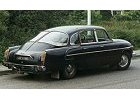 |
|
1957 - 1975
In the tradition of the flat four Tatraplan of 1954 was
the Tatra 603, complete with air-cooled V8 rear mounted
engine. More>> |
 |
 |
 |
1975 - 2000
The Eastern European countries seemed to have a passion
for rear engined cars - and from Czechoslovakia comes
the Tatra 613, a rear engined air cooled V8 saloon. More>> |
|
|
 |
|
1960 - 1969
In 1961, Toyota introduced a more powerful 1.5 litre "R" series motor, the same motor from the Crown; an even larger 1.9 litre engine was added in 1964. Sensibly, it seemed Toyota had decided that the 1 litre donk would not appeal to Aussie motorists, so the Tiara would not make its debut In Australia until 1963. The best feature of the Tiara 1500 was its price, retailing for A£915 for the sedan and A£999 for the two-door wagon. More>> |
 |
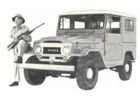 |
|
1960 - 1984
Early 4 wheel drives had two main attributes - brute power and rugged reliability. For a time it seemed the American left-hand-drive Jeep and British right-hand-drive Land Rover had the market pretty much covered. But when it came to automobiles, the Japanese were determined to enter just about every market segment available to them. More>> |
 |
 |
|
1964 - 1969
First released in 1957, the original Toyota Corona (Latin for Crown) has become increasingly popular with collectors, partly due to the rarity of these cars on the road today, and no doubt also due to their amazing strength and build quality. More>> |
 |
 |
|
1967 - 1969
By the time the 1600 GT hit the road, Toyota’s efforts to deliver itself into the performance car field were rapidly becoming faster and more convincing. They had gone well beyond the stage of simply screwing on another carburettor and raising the compression ratio. More>> |
 |
 |
|
1967 - 1970
Developed and built jointly by Yamaha Motor and Toyota
Motor Corporation, the Toyota 2000GT made its debut in
the 1965 Tokyo Motor Show as a showcase of Japan's first
high-performance sportscar. More>> |
 |
 |
|
1962 - 1967
When the Toyopet Crown was released in Australia it came with a £1369 pricetag – which made it exceptionally good value. At the time, it was one of the best equipped cars to have ever been sold in Australia. More>> |
 |
 |
|
1967 - 1970
Launched in 1967, S50 was the 3rd generation of the upmarket Toyota luxury car. It's mechanicals were almost identical to the previous generation, but additional equipment was included. Higher specification models used the 2 litre or 2.3 litre 2M engine while lower specified models were equipped with the R-series four cylinder engines. More>> |
 |
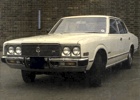 |
|
1974 - 1979
Launched in 1974 in Japan, export of the S80 Crown began from 1975. Offered as four-door sedan, 2-door hardtop coupe, 4-door hardtop sedan, wagon, and van. Engines were 2.0 and 2.6 litre gasoline. The Crown started rolling off AMI'S Port Melbourne assembly line in 1975. Stripped of its individualistic face, the Crown was super conservative and had an uncanny likeness to its arch rival from Nissan. More>> |
 |
 |
|
1979 - 1983
The Crown had always been Toyota's flagship. It represented luxury, Japanese style. In the early days of Japan's emerging motor industry western eyes were assaulted by some weird and wonderful designs, most of which had little appeal. But it was the included standard kit that lured many – along with the keen pricing. More>> |
 |
 |
|
1970 - 1977
The Celica was successful in the showrooms of the world. It was not particularly powerful, and demonstrated regulation handling and performance. No, it was not a drivers car, but it looked the goods and did everything you asked of it with typical Japanese efficiency. Sure, you could spend the same amount of money on a British sports car, and for some that would make a better choice. More>> |
 |
 |
|
1975 - 1977
The Liftback was introduced for Japanese market in April 1973, but not until 1976 for export models. It was virtually the same size as the then-current ST, being 0.8in shorter overall, the same width (63.8in.) and 0.6in lower, and with the same 98.2in. wheelbase. Visually, we think it did not appear to be noticeably larger, although it did to our eyes look better balanced. More>> |
 |
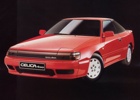 |
|
1985 - 1989
The 4th generation front-wheel-drive Celica hit the Australian roads in 1985 – and represented a major step forward in performance and dynamics. But as much as the Celica had matured, Toyota did not want to desert the market for which their sports coupe had always appealed – and the young sports car buyer could still get behind the wheel of a shiny new version for just over A$20,000. More>> |
 |
 |
|
1968 - 1969
The Corolla name is the second oldest in their
stable, following the "Land Cruiser", and while
never an "exciting" drive, with over 30 million
Corollas sold worldwide, it has become the most popular
car line in history. Since 1968 there have been some 9
"Generations" of Corolla. More>> |
 |
 |
|
1970 - 1974
Toyota quickly recognised the need to make the
Corolla larger and endow it with more power. Thus the
second generation Corolla arrived in 1970, with its wheelbase
stretched to 91.9 inches and power coming from a new 1.2
litre version of the OHV four making 73 horsepower. More>> |
 |
 |
|
1975 - 1978
The Third Generation Corolla's were released in
1975, and featured a raised centre section in the grille
that carried back to more angular bodies. Now there were
a total of five Corolla models available, including two
and four door sedans, a 2 door coupe, SR5 sports model
and 5 door station wagon. More>> |
 |
 |
|
1979 - 1983
With a new chassis, the 1979 Corolla was a more
sophisticated and satisfying car than any Corolla before
it - but before this generation was through, it would
get even better! More>> |
 |
 |
|
1984 - 1987
The first front wheel drive Corolla was introduced
with the 5th generation of 1984. However, the SR5 Coupe,
Liftback and Station Wagon retained the 4th generations
rear-drive chassis. More>> |
 |
 |
|
1979 - 1999
Since its creation in 1979, the Supra had been a frontrunner
in performance and style, and it didn't go unnoticed. More>> |
 |
 |
|
1980 - 1984
Initial reaction on the Japanese market after the Cresta was released in April 1980 was exceptional, it sweeping the sales chart in the medium luxury car arena. For its time it was a good looking car, and the first medium/large Toyota in a long time which could truly be described as stylish. More>> |
 |
 |
|
1980 - 1984
Thanks to (then) AMI Chief Designer Alan Rutherford, Toyota Cressida's bound for Australia combined many of the Crown's attributes, but thankfully did not remove the driver from what was happening on the road. Rutherford and his staff had been telling Toyota HQ for years that Australian Australians did not want their cars to handle with all the grace of a land based aircraft carrier. More>> |
 |
 |
|
1982 - 1986
In Australia the Toyota Camry (V10) was quite a surprise – it was bigger than most industry observers thought it would be, preformed better and looked arguably a little European in styling, leastwise if you parked it next to a contemporary Lancia. Its introduction price of A$13,700 was also very competitive. On paper, the Camry had the wood on the Camira, 626 and Telstar in overall size. More>> |
 |
 |
|
1983 - 1986
Less than four years after its first appearance, Toyota's first front-wheel drive car, the Tercel, took on a new shape. More than just the styling had been transformed however, for except the engine, it was a completely new car, built on more compact lines. More>> |
 |
 |
 |
2000 - 2007
The MR2 Spyder is Toyota's attempt to return to the lightweight,
reasonably priced roots of the original sports car market. More>> |
|
|
 |
|
1934
The supercharged straight-eight showed tremendous promise, both in its specification and its forceful, purposeful looks - but it fizzled out after only three cars and six engines had been built. Two cars were sold, each with a guaranteed top speed of 100 mph in full touring trim; the third was written off when a train hit it in the Monte Carlo Rally. More>> |
 |
 |
|
1946 - 1949
First unveiled in 1946 the Triumph 1800 Roadster was created
from a strange cocktail of pre-war styling with classic
50's detailing. The new model shared its mechanical items
with the 1800 saloon including a column shift gearchange. More>> |
 |
 |
|
1953 - 1962
In 1952 the Type 20TS (often referred to as the TR1) is
introduced at Earl's Court Motor Show. Built on a prewar
Standard chassis and sporting a dual-carb version of the
Standard Vanguard engine, this show car looked much like
the TR2s and TR3s that later followed. More>> |
 |
 |
|
1957 - 1959
In 1957 Triumph took Giovanni Michelotti of Turin under contract. He was a fertile stylist in the Italian manner, and his first design on a TR3 chassis appeared at the Geneva show the same year. Later he designed the bodies of the Triumph Herald and Triumph Spitfire. More>> |
 |
 |
|
1959 - 1970
The Coupe was never really intended to be a proper 4
seater, the rear seat being available only as an option.
But the similarities with other British sports cars was
soon evident, such as the four speed gearbox, 948 cc
engine fitted with twin SU H1 carbys and an output of
42 bhp. More>> |
 |
 |
|
1962 - 1971
When the Leyland Group took over Standard-Triumph in 1962 the revolutionary Herald was in full production, as was the six-cylinder Vanguard. We have read some old press clippings and a common theme were those that said what a delightful car could be made by putting a Vanguard six into the 'all-independent (and separate) Herald chassis' - and we bet few ever thought it would actually happen. More>> |
 |
 |
|
1962 - 1980
This beautiful little sports car was styled by the Italian
stylist Michelotti. Initially based on the Triumph Herald
mechanicals the Spitfire competed successfully in rallies
in Europe and was raced in North America. More>> |
 |
 |
|
1962 - 1969
Triumph's new-generation sports car with body design
by Italy's Giovanni Michelotti. Originally based on the
TR3A chassis and running gear with a larger engine (though
the 1991cc unit was available optionally to qualify for
2.0-liter class racing) and new all-synchromesh gearbox. More>> |
 |
 |
|
|
 |
 |
|
1966 - 1973
Released in 1966, the Triumph GT6 quickly became known
as the poor-mans E-Type. Featuring a lovely sleek fastback
body, the GT6 may have looked a little like the Spitfire,
where its origins obviously lay, but in fact all the
major body panels were new. More>> |
 |
 |
|
1967 - 1971
The last derivative of the successful Herald range appeared in 1967, the Herald 13/60. The 13/60, as the name suggests, used a 1300 (1296cc), 60 (61bhp) engine shared with the Spitfire. This lively little engine ensured that the Herald could still keep its sporty, economical performance that had made it so popular when it first appeared. More>> |
 |
 |
|
1969 - 1976
The TR6 was a refined sports car. It featured pile carpeting
of floors and trunk, plush-looking bucket seats, a wood
dash and the usual full complement of instruments. More>> |
 |
 |
|
1970 - 1977
The Stag started life some time around 1964 as a Triumph
2000 (Triumphs family saloon) and was styled by Giovanni
Michelotti. More>> |
 |
 |
|
1972 - 1980
When it was released the Dolomite was warmly received in Britain – but less so in Australia. It was not a revolutionary car, rather being very conventional, but it did offer a pleasant combination of adequate performance, good finish, reasonable accommodation and excellent handling. More>> |
 |
 |
|
1973 - 1980
Arguably the best model to come from British Leyland is
the Triumph Dolomite Sprint. The Sprint was a true sports
saloon and offered incredible performance that is impressive
even by today's standards. More>> |
 |
 |
|
1974 - 1977
The Triumph 2500TC and 2000TC were introduced by British
Leyland following continued problems with the previous
models fuel injection system. In what could only be considered
a backward step, the new model Triumph dropped fuel injection and instead used (what Triumph knew was tried and tested)
a twin carb configuration. More>> |
 |
 |
 |
1975 - 1981
The Triumph TR7 can represent good buying to the classic
car enthusiast. Why?, well the reliability and quality
control problems that dogged the car during its production
life should be well sorted by now. More>> |
|
|
 |
 |
1958 - 1969
This car can be seen as somewhat of a "kit car", particularly
the early models where the buyer could choose between
motors sourced from Ford, BMC and Coventry Climax but
had no say on the VW suspension components used. More>> |
 |
 |
 |
1972 - 1979
At the heart of the TVR 3000M was the mighty Ford V6 engine, a willing and eager unit as any Capri V6 owner will attest. It was a remarkably tractable engine, pulling from under 1000 rpm in top gear, and its relative lightness, coupled with the TVR's tubular steel space frame chassis and unstressed fibreglass body, was one of the keys to the quick acceleration of the TVR 3000M. More>> |
 |
 |
 |
1977 - 1979
Following what was a popular trend of the 1970s, TVR brought out their own hatchback, the Taimar in 1977. The hatchback option gave a new lease of life to what was, despite numerous detail improvements over the years, a very sixties' looking body-shell. Basically similar to the 3000M, the Taimar was given revised instrumentation and switchgear, new heating-and-ventilation system, and different suspension settings. More>> |
 |
 |
 |
1978 - 1979
TVR resisted the temptation to build an open top car for so many years, many believed such a beast would never exist. But that changed in 1978 when the Blackpool (UK) based company introduced their long awaited convertible, based on the successful Taimar / 3000M model, sharing the rolling chassis, engine and mechanical components. More>> |
|
|
 |
|
1964 - 1968
Born from a liaison between Rolls-Royce and BMC (British
Motor Corporation), the Vanden Plas 4-Litre R was a high
spec luxury saloon boasting power steering, Connolly leather
seats, walnut veneer dash, picnic tables and other luxury
appointments. More>> |
 |
 |
 |
1974 - 1980
The most distinguishing feature was the grille, which
would have disappointed the proud owner when to look behind
it would reveal entirely Austin running gear! The jury
is still out on whether the front end styling is beautiful
or dog ugly - maybe only you can decide... More>> |
|
|
 |
|
1913 - 1927
At the outbreak of war, the Prince Henry had already
evolved into the classic 4½ litre 30/98 model,
and this was revived in 1919. As the side-valve model,
the E-Type, it was built up until 1922, featuring such
Edwardian niceties as exposed valve springs, and a
fixed cylinder head. More>> |
 |
 |
|
1957 - 1962
Inspired by GM Detroit, the Vauxhall Cresta integrated
rear wings and other design queues from its American
parent. The car featured an all syncro 3 speed gearbox
and smooth pushrod six, which gave the car a top speed
of 145 km/h. More>> |
 |
 |
|
1957 - 1961
The Vauxhall Victor was a worthy successor to the Wyvern, offering accommodation for four in comfort, and five if required. The outstanding characteristic of the Victor was its nimbleness and good handling qualities. The road performance was only moderate, more particularly on hill climbing and acceleration. However, it offered very good fuel mileage. As a general purpose car, it was for the time a good example of modern British engineering. More>> |
 |
 |
|
1961- 1964
The cleaner styled FB ran from 1961 until 1964. It was widely exported, though sales in the US ended after 1961 when Pontiac, Oldsmobile and Buick came up with home-grown compact models of their own. Consequently, the FB only achieved sales of 328,000 vehicles by the time it was replaced in 1964. More>> |
 |
 |
|
1962- 1965
At the time, the Vauxhall Velox and Cresta were the biggest cars made by the British branch of the General Motors' empire. Back in 1957, these six-cylinder Vauxhalls caused plenty of interest - in Australia, as in Britain, because of their highly individual appearance. In the intervening years the cars retained their appearance, being long, low and square at the both ends. More>> |
 |
 |
|
1963 - 1966
Introduced in 1963, the HA Viva represented the first small car to be released by Vauxhall since the war. The Viva was a car much needed by Vauxhall, it having lost ground to many competitors. More>> |
 |
 |
|
1966 - 1970
Look familiar? It should, as it was the Vauxhall Viva HB that became the General's first "small" Aussie car, the Torana HB. Originally introduced in the UK in August 1966, it would take until March 1967 for the car to be "Australianised" and ready for local consumption. More>> |
 |
 |
|
1967 - 1972
In 1967 Vauxhall celebrated its Diamond Jubilee Year with
the introduction of the new FD Victor. The range received
much public acclaim for its styling, engines and safety
features such as the energy-absorbing steering wheel. More>> |
 |
 |
|
1968 - 1970
TWO more doors were added to Vauxhall's various Vivas (excluding station wagon (estate) cars and GTs) in October 1968. The extra two doors added roughly £48 to the 2-door Viva prices, which were themselves increased in all cases by £8 to pay for the General Motors collapsing steering column which was fitted as standard. More>> |
 |
 |
|
1968 - 1970
Take one part SL90, one part Victor 2000 and add a dash of Cresta. The Viva GT was a strange concoction of various parts sourced from the then current Vauxhall lineup. Obviously the body and interior came courtesy of the HB Viva, while the Victor 2000 was used to source the 1975cc single ohc engine, along with the final drive and brakes. More>> |
 |
 |
|
1968 - 1976
A long established tradition with virtually all car makers is the desire to have each new model offer better performance than the one it replaced. There are of course two ways to achieve this, modify and tune the existing engine to that it offers better performance and fuel economy, or simply plonk a larger engine in it. More>> |
 |
 |
|
1970 - 1979
The last of the Viva's, the HC, was released in October 1970, and went on to enjoy a long 9 year production run. Again both wider and longer than its predecessor, the HC featured a masculine look, with straight lines and edges and flat-faced front end. More>> |
 |
 |
 |
1973 - 1975
In the late 1960's the consensus was very much that the sheet metal rolling of the production line at Vauxhall's Luton manufacturing plant was pretty ordinary, and performance enthusiasts usually shopped elsewhere. More>> |
 |
 |
 |
1975 - 1984
The Chevette was designed to fit into the Vauxhall range below the Viva, and was initially presented as a hatchback, a style that soared in popularity during the 1970s. The Chevette was the first British-built hatchback of this size, with Ford not responding with a similar product until the following year. More>> |
 |
 |
 |
1975 - 1976
We have no idea who made the decision to create a "hot" Chevette - it may well have been Bill Blydenstein himself. The choice of car may seem strange, but the Chevette did offer excellent steering and roadholding, and road testers of the standard iteration had often declared that the chassis deserved more power. More>> |
 |
 |
 |
1975 - 1981
The Cavalier 1300L was the cheapest and lowest-powered of the range. Above it, also with a choice of two or four doors and with the same standard of trim, came the 1600L. Above this was the 1600GL, available only in four-door form and with substantial extra trim (though little of it might be regarded as fundamental). Then came the 1900G L, again only available with four doors. Rounding off the Cavalier range is the 1900GLS Coupe, the only Vauxhall equivalent of the Opel Manta. More>> |
 |
 |
 |
1975 - 1981
One of the notable things about the ordinary everyday Vauxhall Chevettes was their outstanding handling and roadholding, which, despite the low powered 1256cc engine the cars were equipped with, made them reasonably fun to drive. When Vauxhall homologated a version of the Chevette for rally competition the larger engined car was awaited with great eagerness. More>> |
 |
 |
 |
1975 - 1981
The Cavalier 1300L was the cheapest and lowest-powered of the range. Above it, also with a choice of two or four doors and with the same standard of trim, came the 1600L. Above this was the 1600GL, available only in four-door form and with substantial extra trim (though little of it might be regarded as fundamental). Then came the 1900G L, again only available with four doors. Rounding off the Cavalier range is the 1900GLS Coupe, the only Vauxhall equivalent of the Opel Manta. More>> |
|
|
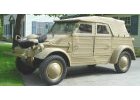 |
|
1940 - 1944
The Kübelwagen was an extremely austere, rugged automobile built simply for war-use. About 50,000 were made, and
surviving examples are scarce and very collectable. More>> |
 |
 |
|
1945 - 1977
The car that needs little introduction, Adolf Hitler's
dream of building a low-cost car for the masses has proved
to be a huge hit for decades and now boasts over 21 million
sales, and production continues today in South America. More>> |
 |
 |
|
1950 - 1967
Top of the range was the Deluxe Microbus. Here, the number
of windows and the variations available were immense.
You could get the three windows down each side, four windows
down each side, or even five with a curved plexiglass
corner window. More>> |
 |
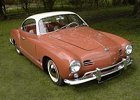 |
|
1955 - 1974
Today, the Karmann Ghia epitomises the affordable and
highly collectable unique and classic automobile! More>> |
 |
 |
|
1961 - 1973
In 1961 Volkswagen announced that they would be producing
a new car, the VW 1500. Sharing very little with the
Beetle, the engine would be a rear-engined, air-cooled 1498cc unit which would be configured to take up less
space. More>> |
 |
 |
|
1968 - 1974
the Type 4 should be remembered for the innovations it
brought to the marque. For the first time, a Volkswagen
had 4 doors, featured unibody construction, MacPherson
strut front suspension, rear suspension with coil springs
and trailing wishbones, a hydraulic clutch and, uniquely,
it was one of the very first Volkswagen’s to feature
a fully automatic transmission.
More>> |
 |
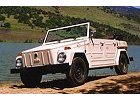 |
|
1970 - 1973
While the Karmann-Ghia represented the sporty, elegant
side of the Beetle family, another member, the Type 181
diametrically opposed it. More>> |
 |
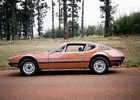 |
|
1972 - 1976
Although the Volkswagen SP series was both designed and built in Brazil, it was fostered by Rudolf Leiding - Volkswagen's then new Managing Director in Stuttgart. The idea for the SP1 and SP2 started while Leiding was in control of Volkswagen's Brazilian establishment which he left early in 1971 to take up Volkswagen General Command. More>> |
 |
 |
|
1973 - 1988
Many felt the Volkswagen Passat LS to be simply a badge-engineered Audi. True, Volkswagen had their own ideas about gear linkage, body styling and suspension rates, but broadly speaking the Passat LS was an Audi 80 with a VW badge on it, and a rather poor indented Wolfsburg castle symmbol on the cross-spoke of the steering wheel. More>> |
 |
 |
|
1974 - 1982
What is a Scirocco? The name is the German spelling for the more familiar word sirocco, a hot and dry wind blowing from the African coast to Italy, Sicily and Spain. As the European name for the Dasher was Passat, another wind name, it seemed that Volkswagen were off on a new style of model names. More>> |
 |
 |
|
1974 - 1983
Some criticism was leveled at the Golf for its rather
spartan interior and hard ride, but these were both
typical attributes of German cars and reflected the
German philosophy of car building. Overall the Golf was an energy-efficient and
space-efficient design that won the hearts of countless thousands of happy owners
throughout the world, and set the way for the Golf to continue as Volkswagens
best seller to this day. More>> |
 |
 |
|
1976 - 1983
Although it was considerably more expensive than its
petrol-engined brother, the Golf GLD was not only the
cheapest diesel on the Australian market at the time,
but also proved one of the most economical cars to
run, backing this claim up with several wins in subsequent
Total Oil Economy runs. More>> |
 |
 |
|
1980 - 1984
Like the model it superseded the GOL was a three-door hatchback with an overall length of 12.43 ft (3.79 metres) on a wheelbase of 7.74 ft (2.36 metres), comparable to the German Golf. The chassis and running gear were also similar: MacPherson coil spring stuts at the front, and an independent rear layout of torsional beam trailing arm axle and telescopic dampers. More>> |
 |
 |
 |
1981 - 1984
The Golf GTi was more an evolution than a revolution.
Its mechanics were that of the ordinary Golf, however
the power was to come from a more sporty Audi-designed
1.6 litre engine. More>> |
|
|
 |
|
1947 - 1965
While the PV444 was easy for anyone to drive, the skilled motorist got, in addition to high performance, great satisfaction for the way in which that prowess was achieved. No doubt a model for the Volvo enthusiasts only, don't be too quick to dismiss the car should you chance across it at a motor show. In their day, they offered almost unrivaled quality and much better than average performance. More>> |
 |
 |
|
1958 - 1965
After the style of Cinderella, the Volvo PV 544 Sports developed from a rather ordinary family runabout into a fast and comfortable touring saloon, able to show its rear wheels to most cars then on the Swedish roads. With an emphasis on safety as well as speed and sheer acceleration, the Volvo PV 544 Sports was a reasonable financial proposition in its home country back in 1959 at 12,250 Kroner tax paid. More>> |
 |
 |
|
1956 - 1970
Perhaps the most famous and recognisable Volvo is the
120, with its classic American styling (imitating the
bull nosed look of Chryslers from the 50's). The car
quickly gained a reputation for reliability and durability
with its resistance to rust - due mainly to the high
quality steel used in the construction. More>> |
 |
 |
|
1960 - 1973
More respectable than 'sporting', the high-waisted
P1800 has today become a very collectable car. A
top speed on 160 km/h can be achieved, thanks primarily
to the overdrive gearbox rather than the 4 cylinder
motor. The status of the car was undoubtedely enhanced
by its appearance in the weekly television series "The
Saint",
then driven by the shows star Roger Moore, who also
owned one in real life. More>> |
 |
 |
|
1966 - 1974
The Australian release of the B20 engine followed hot on the heels of its European introduction. Also included in Volvo's range for 1969 was the six cylinder 164, which shared much of the 140 series structure and styling from the windshield back, while incorporating a 6-cylinder engine, the B30 which was simply a B20 with 2 more cylinders and a few strengthened and enlarged components. More>> |
 |
 |
|
1968 - 1975
When the Volvo 164 was released in Australia it was considered by most as being exceptionally safe and well engineered. Unfortunately it was also very expensive, coming with a $6299 price tag. For that kind of money, you could have purchased no less than three wonderful little Mazda 1200 Coupes. More>> |
 |
 |
|
1974 - 1993
Volvo was to release the venerable 200 series in 1974,
and such was the popularity of the car that it would
enjoy an amazing production run of nearly 20 years. The
replacement was supposed to be the 700 series, released
in 1982, however such was the popularity of the “boxy
but safe” 200 series that Volvo were reluctant
to cease production. A good thing too, with both the
200 and 700 series being sold side-by-side for the next
10 years. The 700 series was replaced by the 900 series
in 1992, however the 200 hung in for another year, finally
disappearing from the showroom in 1993. More>> |
 |
 |
|
1974 - 1993
Using the amazingly versatile basic body shell across its range, from the cheapest to the most expensive, Volvos varied only in terms of luxury and equipment levels, together with power outputs and transmissions. Right at the bottom was the 244 DL with a carburetted 2.1 litre engine. More>> |
 |
 |
|
1975 - 1991
Volvo's takeover of the Dutch building firm DAF saw the introduction of the jointly -developed Volvo 343. The 343 was an amalgamation of traditional Volvo and DAF engineering and was, for the time, an advanced-specification medium-size car (for Europe), and in the Volvo model range it sat between the '66' and the '240' series. More>> |
 |
 |
|
1976 - 1985
Today we all understand the difference between
active and passive safety, but in the late
1970’s there were in actuality only
a few car manufacturers putting it into practice.
Volvo were one such company, aiming to build
cars that the driver could control in most
emergency situations, rather than the car
controlling the driver. More>> |
 |
 |
|
1976 - 1985
By the time the Volvo 245 GL arrived on Australian
shores, the marque had built a stellar reputation
for building robust, reliable, safe but boxy cars.
It seemed every year the same formula was applied,
with just the occasional cosmetic update to set
it apart from last year's model. Although a large
number were purchased by well off middleclass retirees,
in reality the Swedish vehicles had plenty to offer
the motorist with a more modest budget. More>> |
 |
 |
|
1976 - 1985
Although the 264 GLE retained all the traditional
Volvo safety features, and incorporated some
new ones, its unmistakable all-round class
enabled it to avoid the tag of being a dull “security
cell” – leastwise it was boxy,
safe and good looking. Problems of overpricing
did not apply as much to the GLE as other
models down the range, its excellent finish
and lavish standard equipment making it, by
anybody's standard, a luxury car. More>> |
 |
 |
|
1976 - 1985
Volvo’s had long been popular for their reliability
and safety, yet they had also been seen as stolid and
uninspired. By the time the Volvo 265 GLE arrived in
Australia, it became evident to all who cared to take
a slightly closer look at the Volvo that the cars coming
from Gothenburg were better handling and more attractive
for those who wanted something a little more exciting
to drive. More>> |
 |
 |
|
1977 - 1981
Flagship of the Volvo range during the early 1980’s
was the 262C Bertone-designed and assembled coupe, based
on the mechanicals of the 264 GLE. The priced at over
$30000, the 262C was almost twice as expensive as the
sedan from which it is derived, and for the extra coin
you got the most distinctive of the Volvo range, Bertone badges, and a luxurious 2 + 2 interior. Few would have
known then however that the 262C Bertone would become
an instant classic and is today highly prized and very
collectable. More>> |
 |
 |
|
1977 - 1981
By the late 1970’s Volvo were determined to
shake the stodgy image of “boxy but safe” once
and for all. The silver limited edition Volvo 242
GT was the first sports orientated Volvo model since
the 1800, and promised to be something quite special. Built to rival such great cars as the BMW 323i, the
242 GT was powered by a variant of the B23E 2.1 litre
found in all the other 244 models, however the capacity
was increased to 2.3 litres, compression was raised
and the car was fitted with an overdrive fourth gear. More>> |
 |
 |
|
1979
Bertone's styling of the late 1970's did not received the universal praise of their earlier work - even those of the mid 70's. Looking back now, we can see that they were, however, well ahead of the design trend that would dominate the 80's, namely angles. Other Bertone "slab designs" included the starkly angular Navajo and Rainbow, and the almost shapeless Sibilo. More>> |
 |
 |
|
1982 - 1990
At release both the V6 and Turbo models were identically priced (at $34,500), the latter manual only iteration aimed squarely at the driving enthusiast. The new model boasted a modern profile with a low waistline and large glass areas. The car was extremely spacious and offered an exceptionally high standard of safety. More>> |
 |
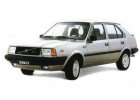 |
 |
1982 - 1991
Powered by a 2.0 litre fuel injected 85 kW engine, a raspy note from the exhaust would always remind you of the sporting aspirations of the car, although there was enough sound-proofing to ensure it never became irritating. The handling was precise, and although there was some slight understeer, it remained extremely predictable, ensuring the driver remained confident at all times. More>> |
|
|
 |
|
1956 - 1962
Without official party permission, and under the strictest security, development of the 311 took place - EMW determined to at least manufacture a modest, modern middle class vehicle. More>> |
 |
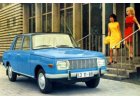 |
 |
1966 - 1976
Those that parted with their cash soon learned the car did not handle all that well, nor did it offer a particularly comfortable ride. Many bemoaned the low rent decor and crude steering set-up. The allure of the cheap entry price (£619) and list of standard features were soon forgotten. Yes, there was good reason not to buy a Wartburg Knight - they were bloody awful. More>> |
|
|
|
|
 |
|
1919 - 1924
The Wolseley 15 h.p. was an example of technological advancement learned during war time manufacture of aeroplane engines. Alloy steel and light weight chassis, accelerated horse power of more than 20 percent on the average Wolseley without increasing the engine size. The most beneficial feature of the then new design was the power output, which only marginally increased fuel consumption and the characteristic smooth running of Wolseley was maintained. More>> |
 |
 |
|
1931 - 1936
There are some enthusiasts in this world of motoring who will stubbornly maintain that the British haven't made a real sports car since the 1930's. While we don't quite hold with this argument, it is true that the decade, 1930 to 1940, saw the greatest variety of sports cars produced in Britain's history and the post-vintage-thoroughbreds which emerged from the largest and the smallest motor factories gained tremendous prestige throughout the world. More>> |
 |
 |
|
1948 - 1954
The lavish grille and driving lights made the vehicle
appear more up-market, but it was the interior where
the Wolseley shined. More>> |
 |
 |
|
1953 - 1956
The Wolseley 4/44 was originally designed under the Nuffield Organisation but by the time it was released in 1953 Wolseley was part of BMC. Much of the design was shared with the MG Magnette ZA which came out later in the same year - but unlike the MG, the 4/44 used the 1250cc XPAW engine a version of the XPAG engine previously seen in the later MG T-type series of cars but detuned by only having a single carburettor. More>> |
 |
 |
|
1954 - 1959
Wolseley aficionados were aghast to find a grey striped formica instrument panel and central large chrome mesh "cheese-cutter" speaker grille. This would be switched back to the more traditional polished walnut facia with the release of the Series II in 1957. More>> |
 |
 |
|
1956 - 1958
Despite its single SU carburettor the Wolseley 15/50 managed to provide reasonable performance suitable for its roll as a mid-range model. Most importantly there was a feeling of general excellence and honesty about the car, Wolseley's having established a solid reputation for a long working life and freeedom from petty troubles. More>> |
 |
 |
|
1957 - 1965
The Wolseley 1500 was basically a Morris Minor underneath, leastwise it used the Minor's suspension and wheels, and a scaled-down Wolseley 4/44 in body style, with the all-purpose B-type B.M.C. engine under the bonnet. It was a smart, superlatively finished unit, with a lot of experience applied in the vital places to make it a sturdy, fast (80 m.p.h.), comfortable and economical means of transport. More>> |
 |
 |
|
1961 - 1968
For the £106 pound premium over the Austin, the Wolseley driver of course received the famous Wolseley grille complete with auxiliary lamps, distinctive duotone colour schemes and a much more upmarket interior, which included walnut veneer facia, real leather and individually adjustable front seats. Options included fitment of an automatic transmission, and/or “Normalair” air-conditioning. More>> |
 |
 |
 |
1962 - 1965
The 6 cylinder Wolseley 24/80 sedan and station wagon
(also sold under the Austin name) were released in April
1962. These cars were developed by BMC Australia to counter
the growing popularity of the new 6 cylinder rivals from
the US, namely the GM Holden and Ford Falcon. More>> |
 |
 |
 |
1966 - 1972
The upmarket Wolseley "Landcrab" was first introduced to the public at the Geneva Motor Show in March, 1966, as yet another variant of what was B.M.C.'s biggest transverse-engine front wheel drive design. Power assistance for the rack-and-pinion steering was standard and a modified Borg-Warner Type 35 automatic transmission and torque converter, driven via a Morse Hy-Vo chain, was offered as an extra for the first time. More>>
|
|
|
 |
 |
1979 - 1982
The cross-country ability of the YAK was conferred by combining two wheel drive with a locking differential, to prevent wheel spin on slippery going, and a built in winch to retrieve the YAK should the going get too difficult. Stoodley ensured the design of the car would cope with a 1-in-2.5 slope, which meant there needed to be a reduction gear. More>> |
|
|
 |
 |
1980 - 1991
By the late 1970's motor manufacturers from the Comecon countries, usually haven been given the spark-by capitalist factories from the west, were embarking on development of their own models. After Fiat had put the Lada project into gear, the Volga-side works produced the 4WD Niva; Polski-Fiat devised the Polonez, and then another Fiat-inspired enterprise, Yuugoslav Zastava introduced their own brand. More>> |
|
|
 |
 |
1959 - 1988
THE FIRST handful of Soviet luxury cars were assembled in Leningrad in 1933. The boxy, seven-seater saloon, called the "L-1", was based on he 1931 American Buick 90. In fact all Russian luxury car manufacture, from inception until 1941 (when the production of passenger cars was temporarily halted), was based on variations of John Dolza's straight-eight Buicks. The power unit was 5,650 c.c., ohv, with cast iron pistons, a Downdraught Marvel carburettor, a compression ratio of 4.4-to-1 and a claimed 105 bhp. More>> |
|
|
|



